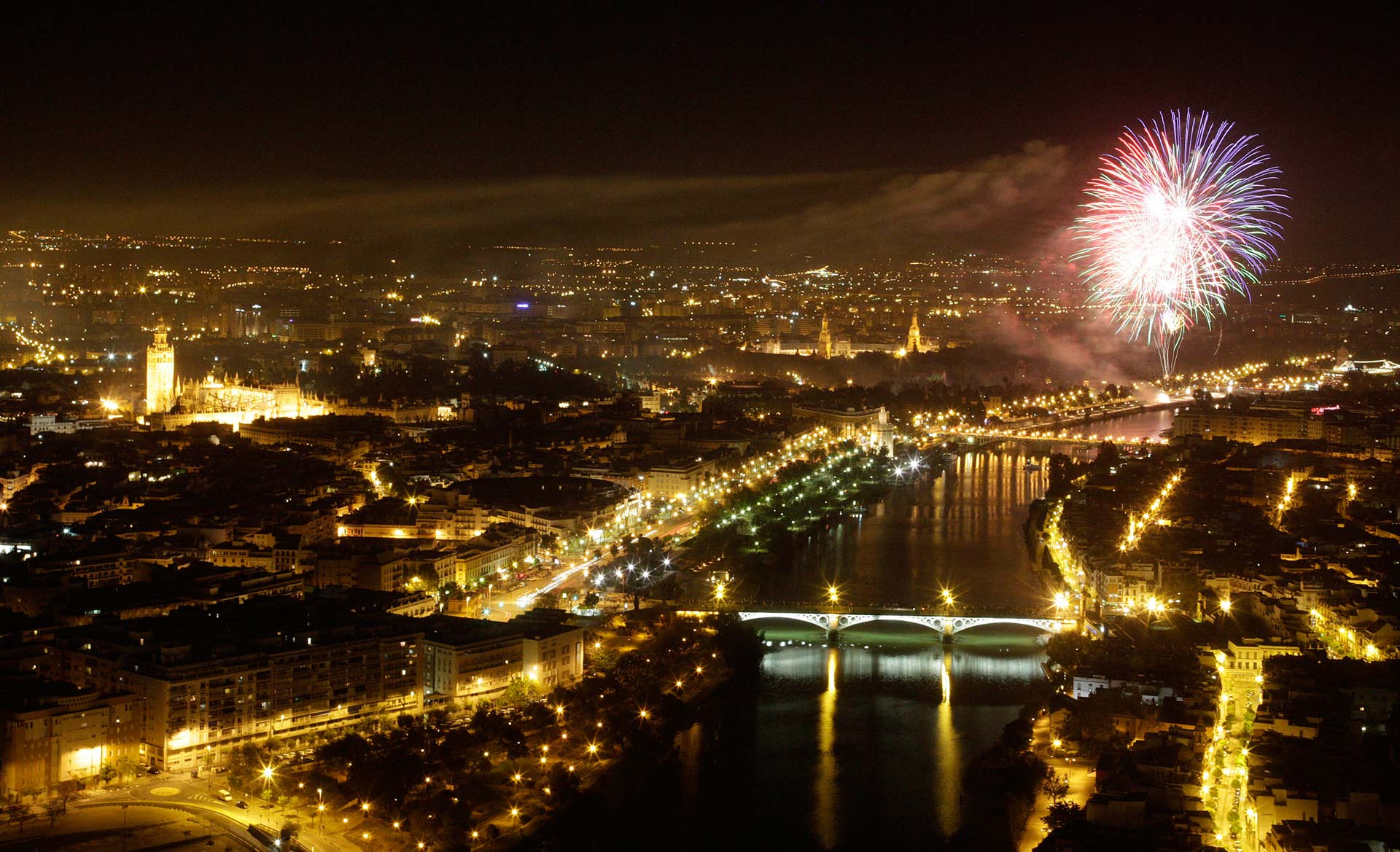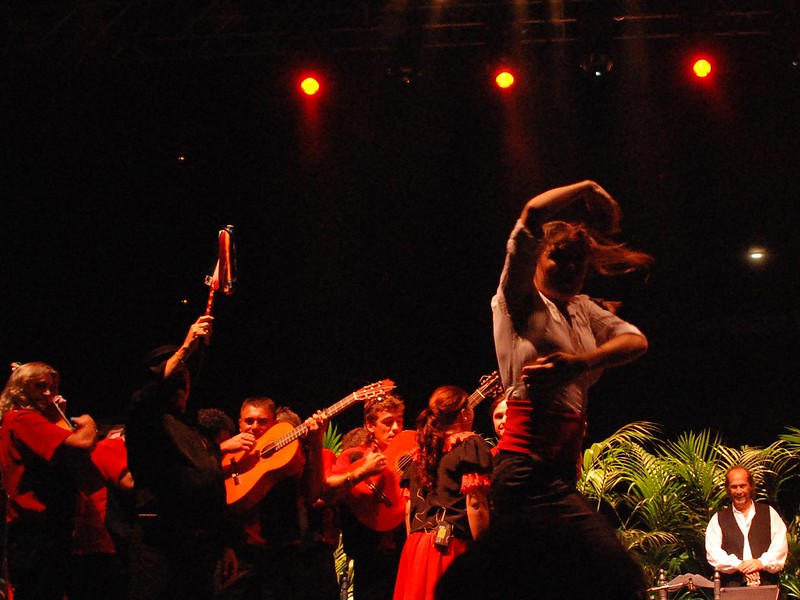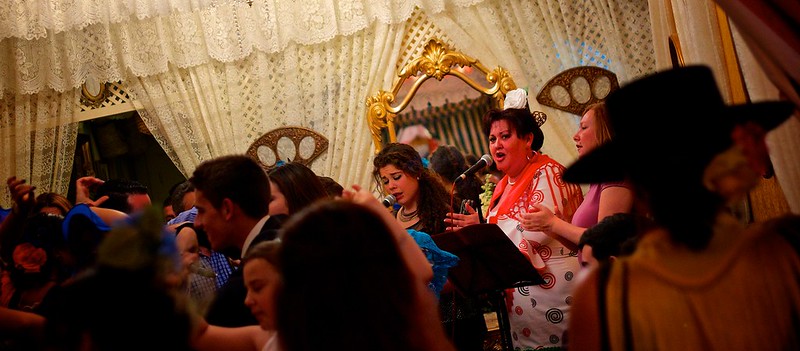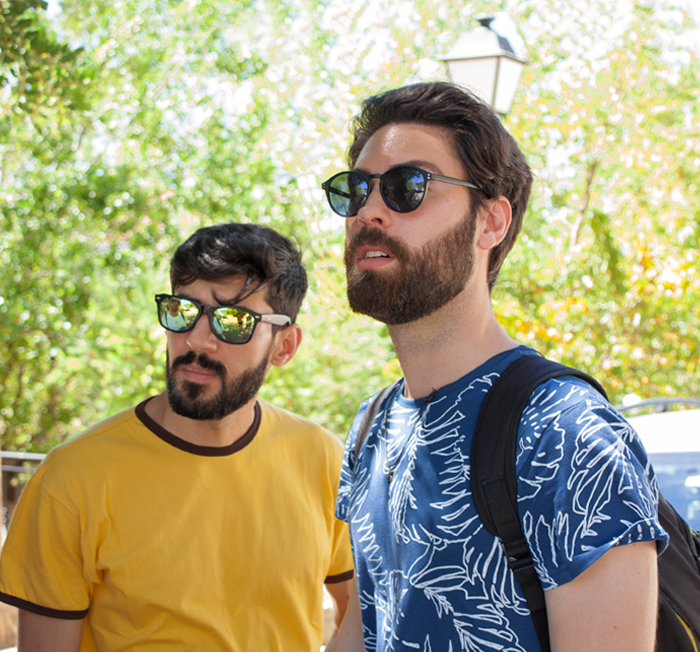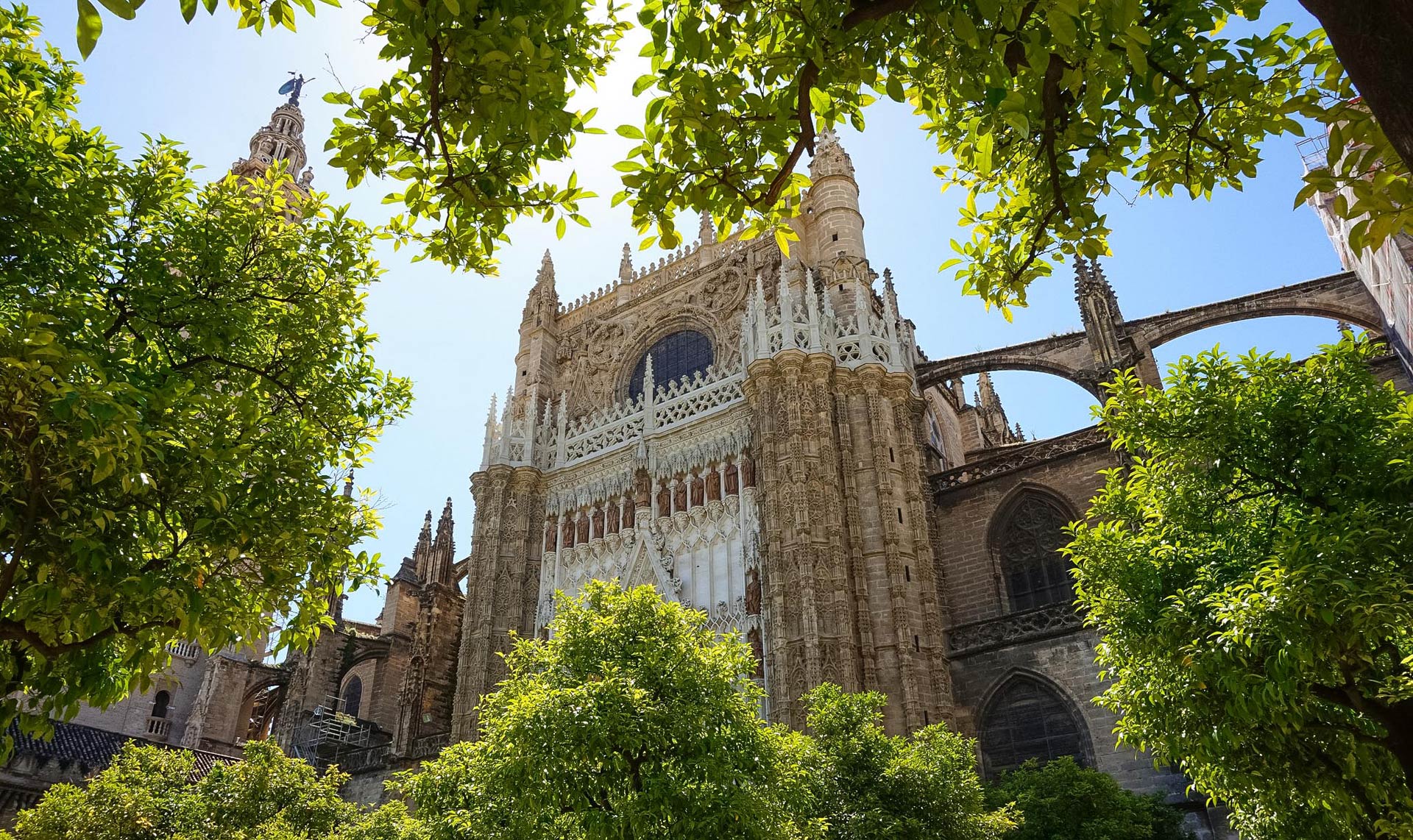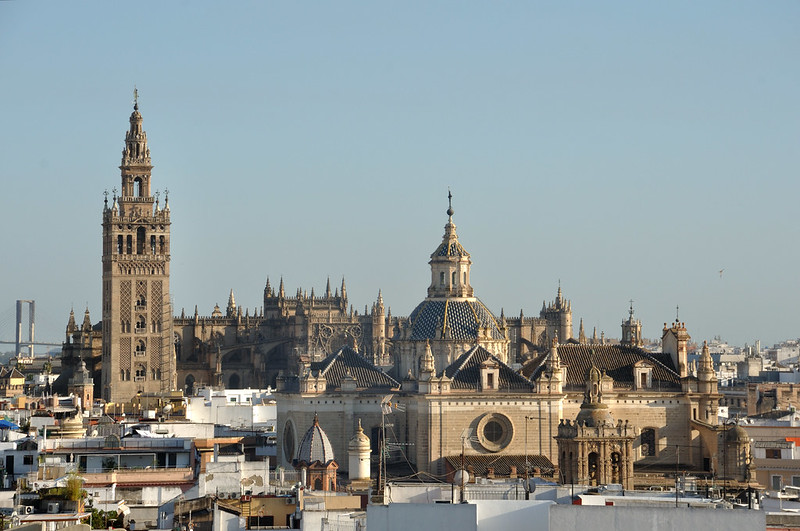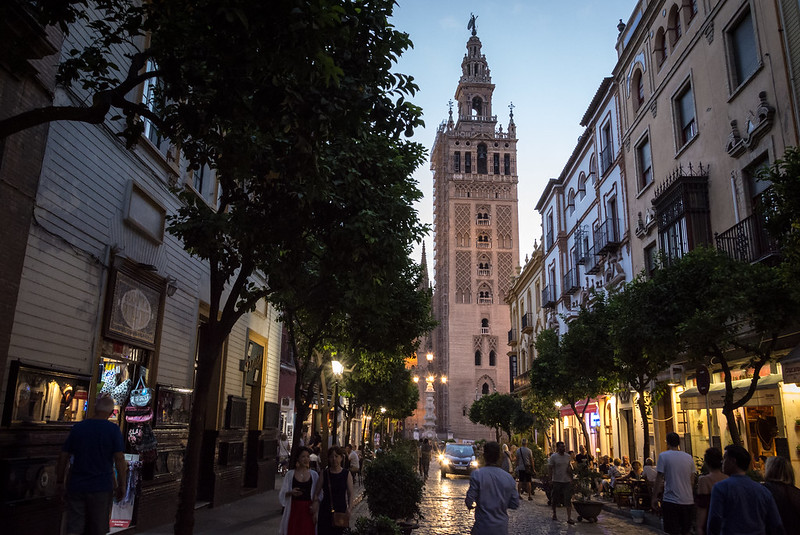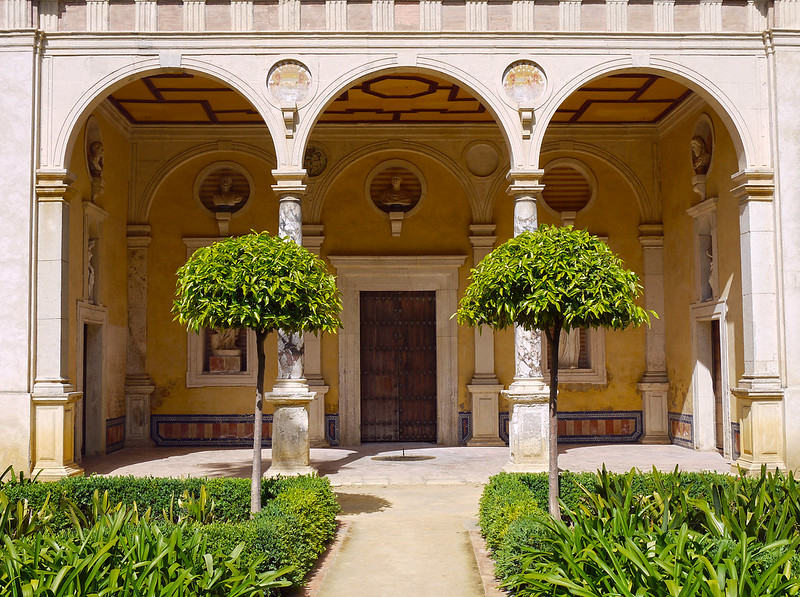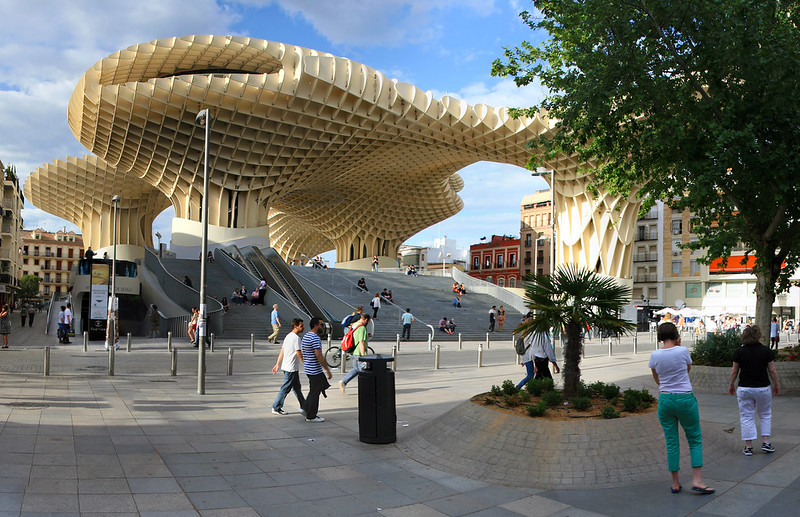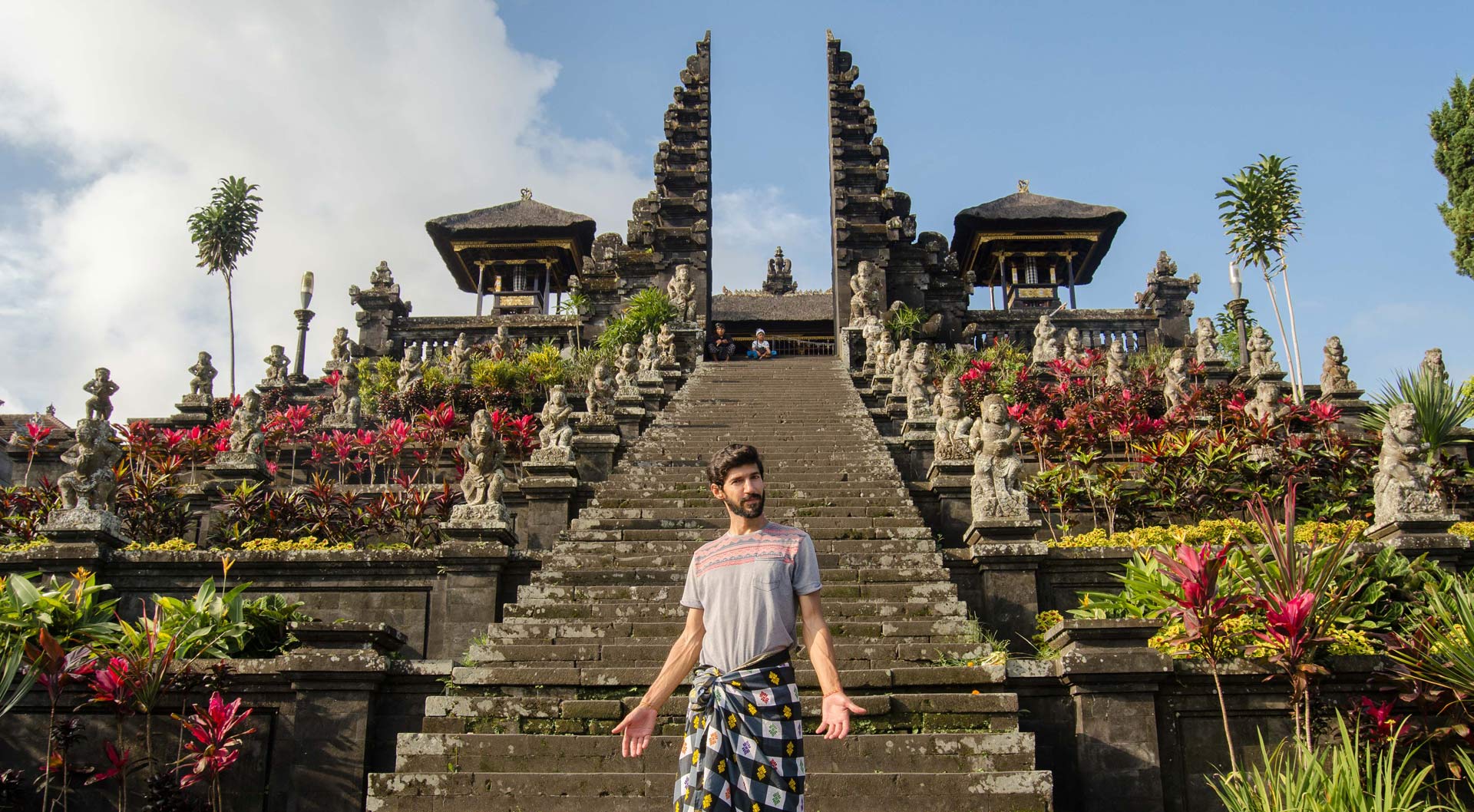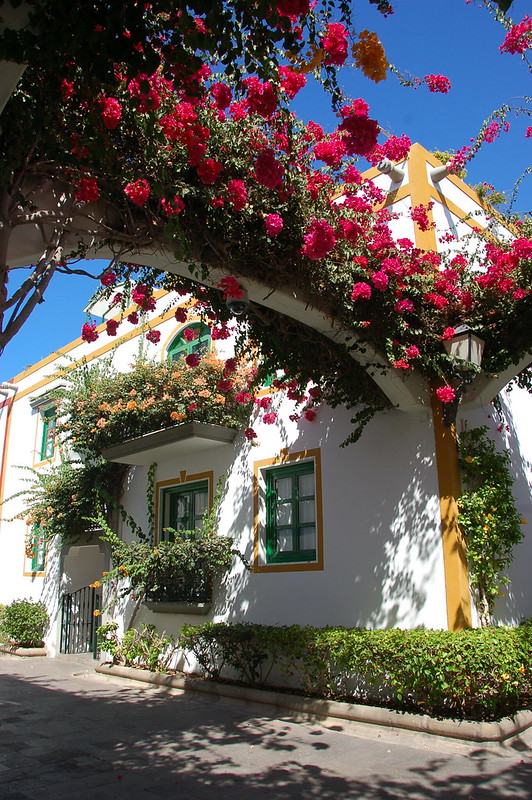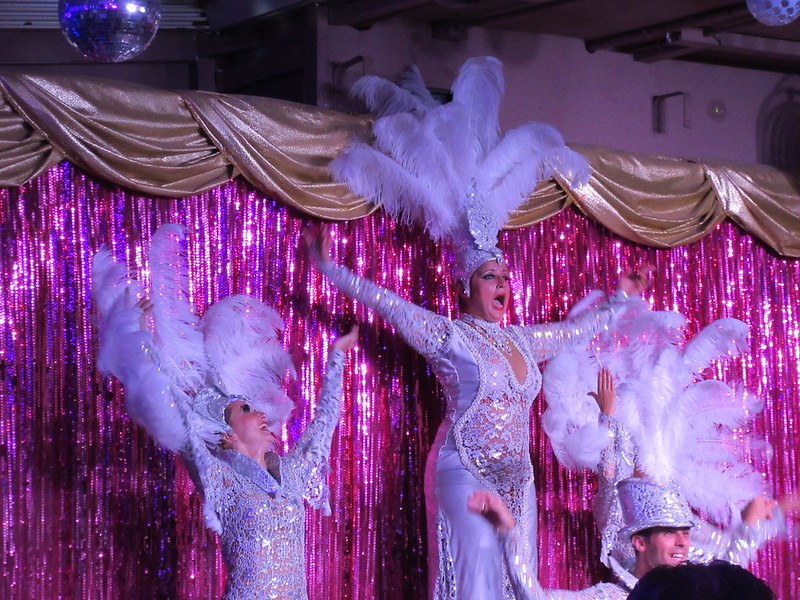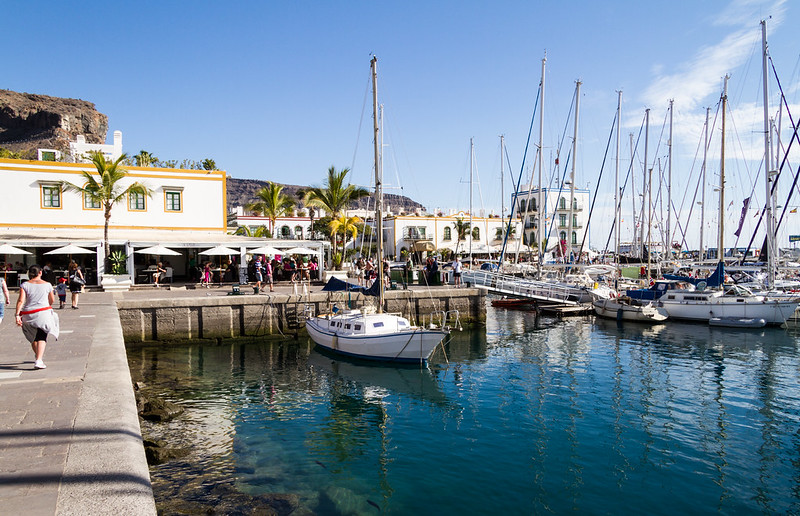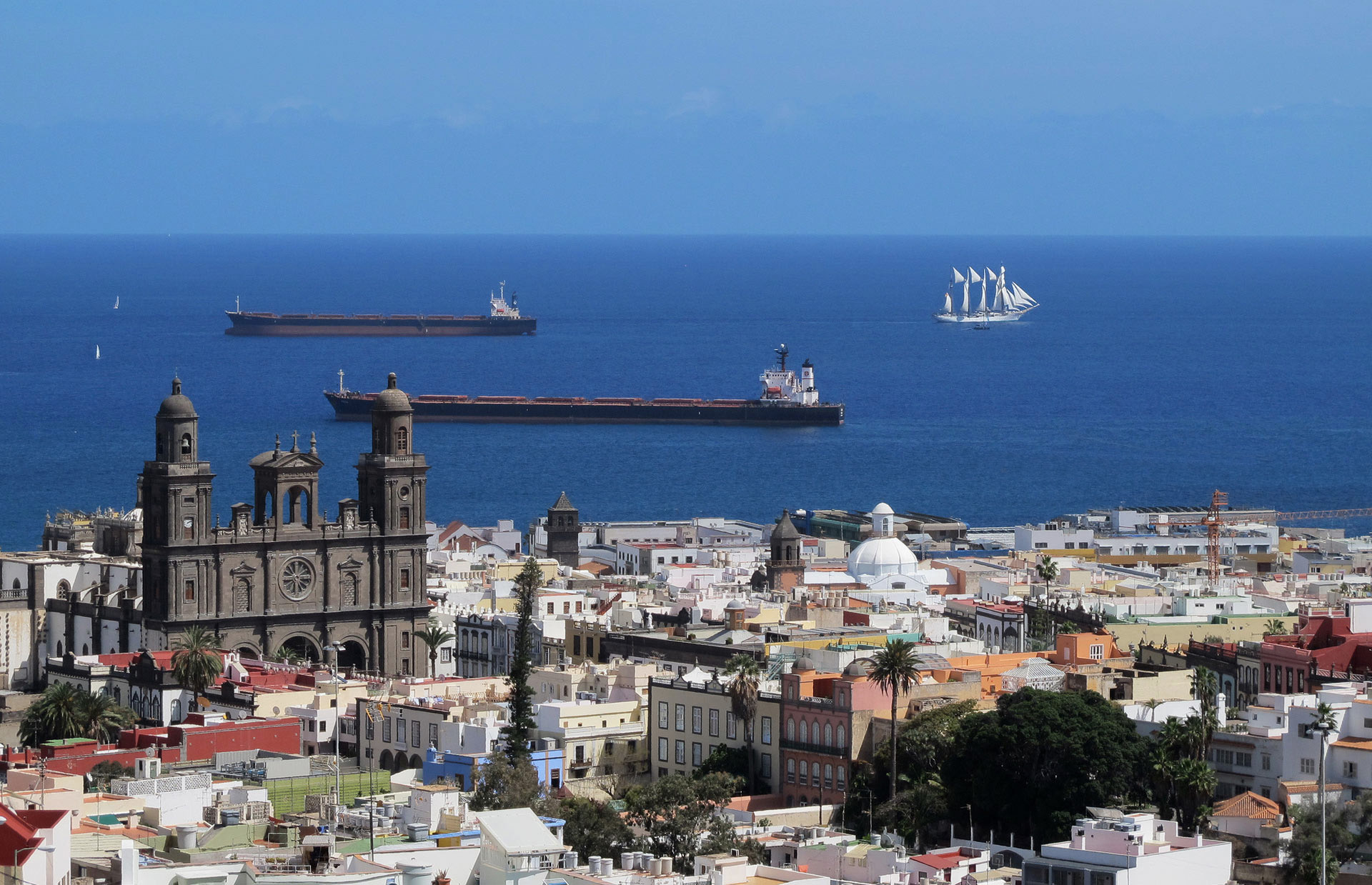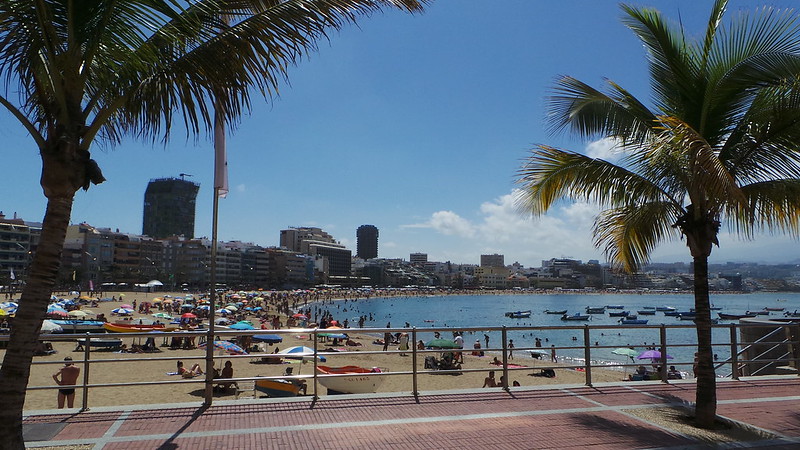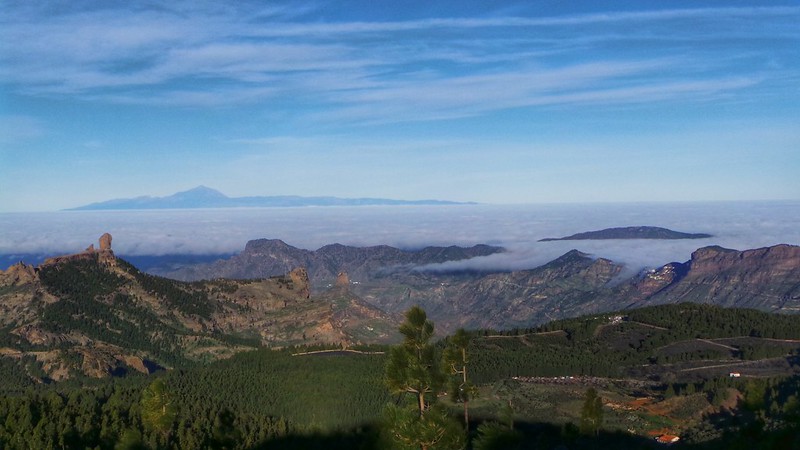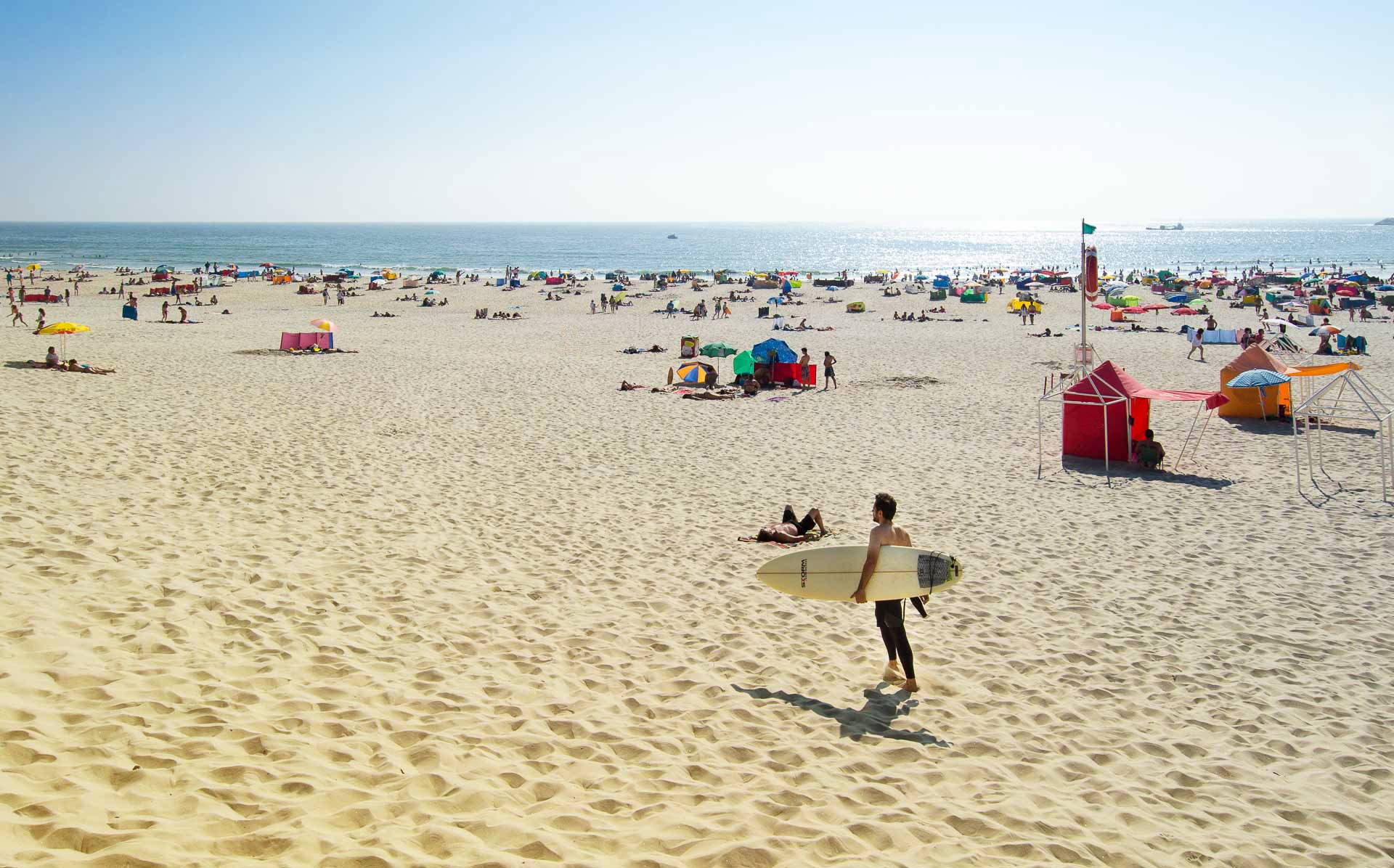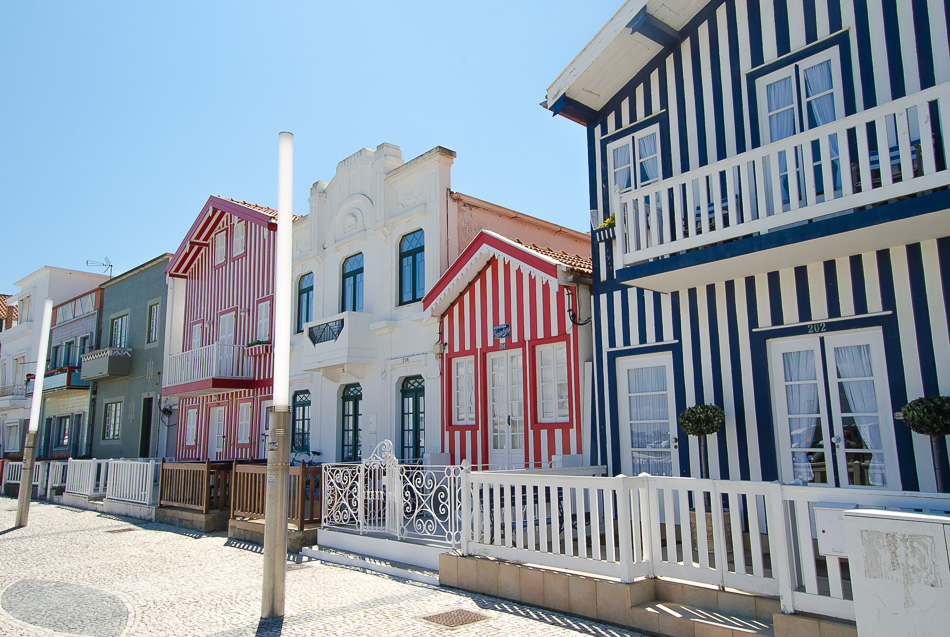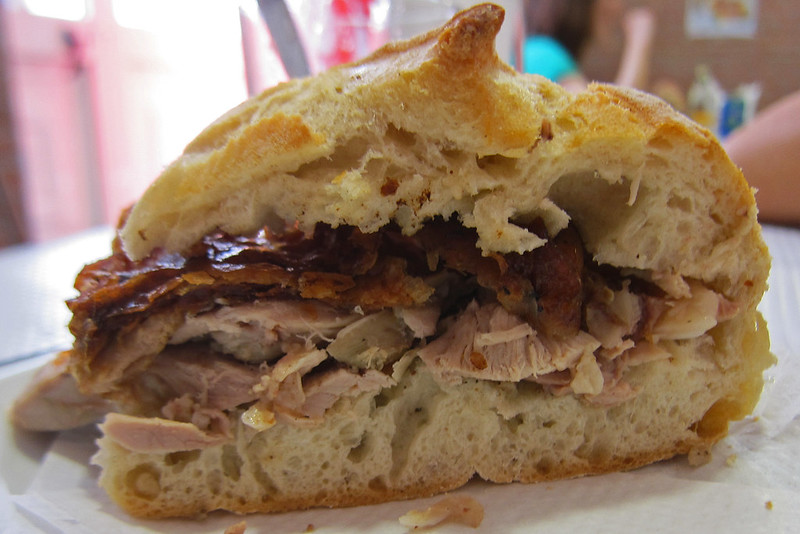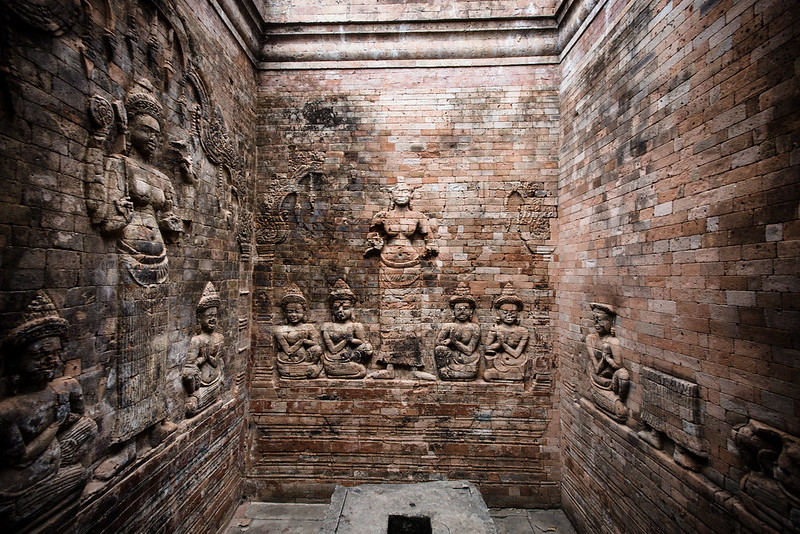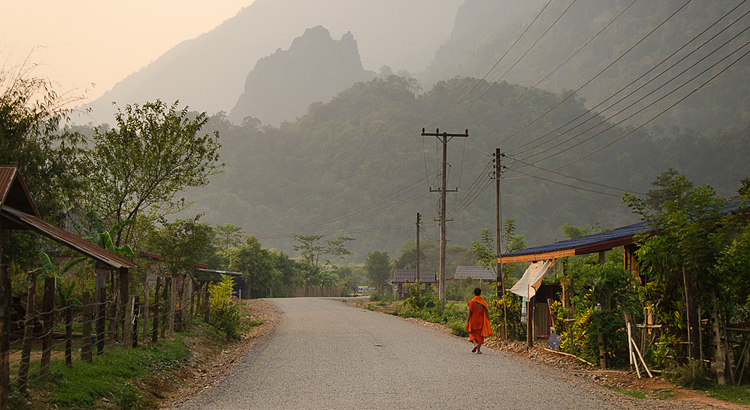Experiencing Seville in 3 cultural traditions
As travelers, we all hope to live deep cultural experiences when we travel to a new country. But we all know we can’t get that from visiting monuments and landmarks highlighted on a travel guide or tourist map.
That’s why we’re showing you 3 cultural and living traditions you can actually get involved in to enhance your Seville travel experience.
1. Flamenco
Influenced by Moorish, Jewish, and Gypsy cultures, Flamenco is considered one of the Intangible Cultural Heritage of Humanity.
One of the perks of being in Seville is that you can experience flamenco dancing in various intimate settings venues, bars, and tablaos around town. This means that you can do so while enjoying a glass of wine and the typical Spanish tapas.
The Flamenco Biennial (September/ October)
For almost a month (September to October) professional and amateur dancers come together to dance Flamenco in its most traditional form, and more contemporary expressions.
The festival takes place on many stages scattered around town, and although some shows are free, most tickets start at €10 all the way up to €40.
Find more info about the program and prices here: www.labienal.com
Cristina Hoyo’s Flamenco Dance Museum
Located at the heart of Barrio de Santa Cruz this museum provides a great way to explore the historical roots of Flamenco Dancing through videos, music, and artifacts.
Tip: Every Friday and Saturday at 19H30 visitors of the museum can attend a flamenco show for a discounted price.
Museum entrance fee:
Adults pay €10, children €6 and students €8.
Museum opening hours:
10H00 to 19H00.
Flamenco shows ticket cost:
To attend the regular shows adults pay €22, children €12, and students €15.
For the intimate shows (44 people max.) adults pay €30.
Flamenco shows schedule:
17H00, 19H00, and 20H45.
In high season there’s an extra show at 22H15.
2. Easter Holy Week / Semana Santa (March/ April)
If you’re traveling through southern Spain in the months of March and April (check the precise date here: Seville Holy Week), don’t miss the opportunity to experience how the Holy Week is celebrated by Sevillians.
It’s a unique cultural manifestation in the world. It doesn’t matter if you’re Hindu, Buddhist, or an atheist, the Seville Holy Week is the greatest religious event in all of Andalusia — and perhaps all of Spain.
Thousands of people gather on the main streets of Seville to be part of the celebrations. Men dressed in creepy long tunics with pointy hats (“creepy” due to the resemblances with the KKK tunics, but not related) carry on their shoulders heavy altars with images of Christ and the virgin Mary.
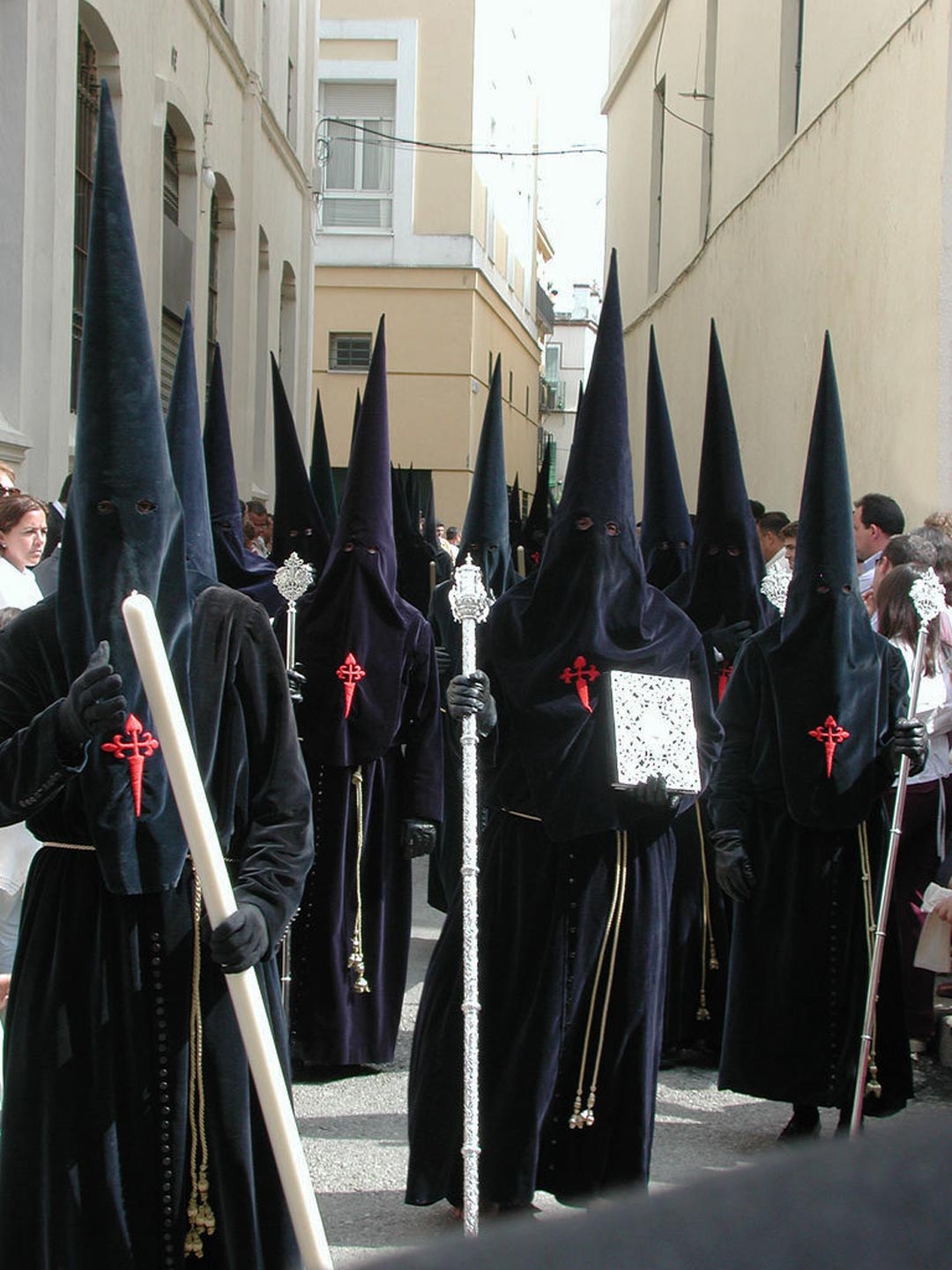
The city gains an eerie atmosphere as the strong incense smell that follows the processions blends with the scent of orange blossoms in the sidewalks. At night, there are music concerts all over town.
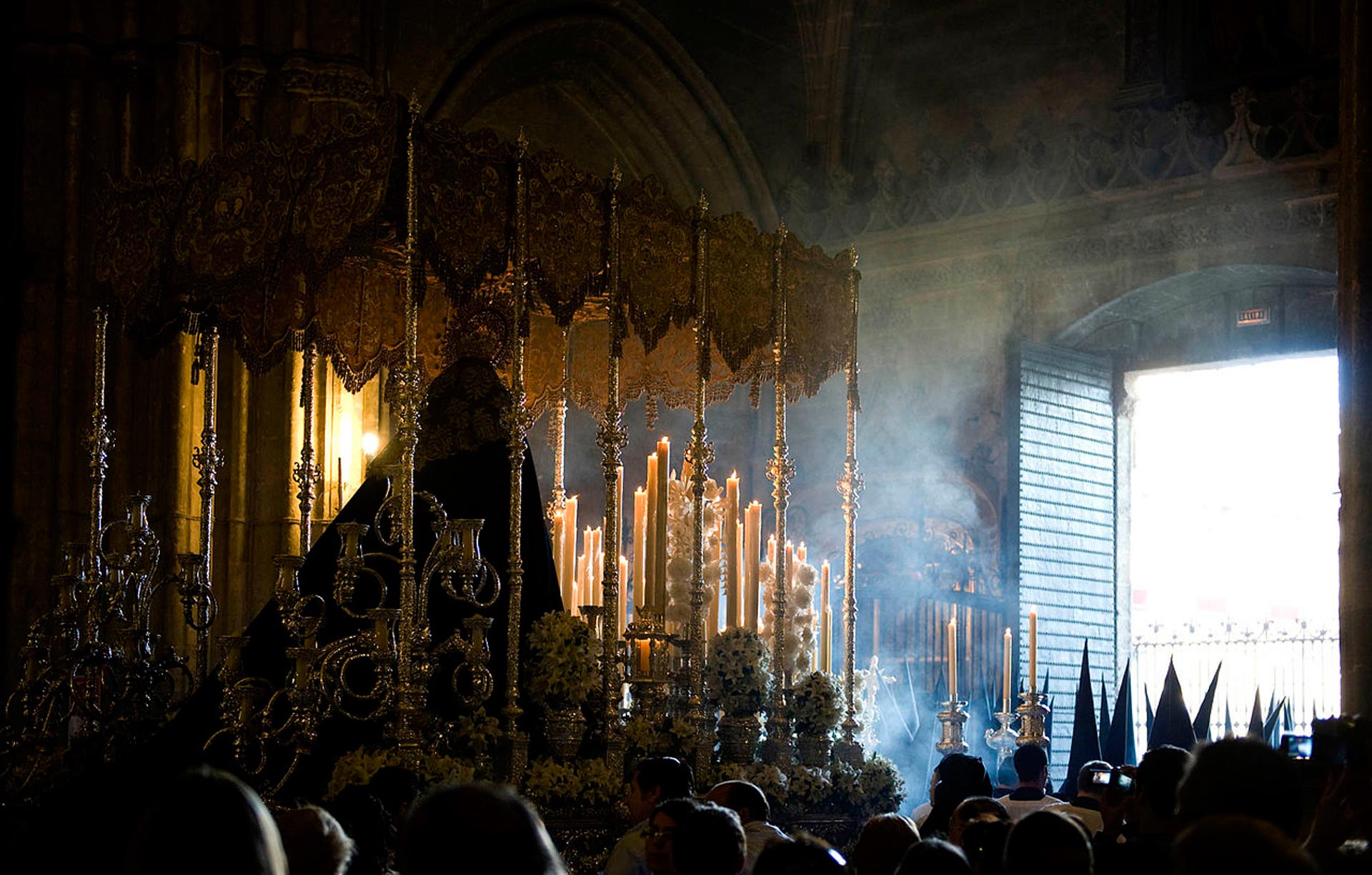
Tips for the Holy Week:
• Most processions begin at 7:00 p.m.
• Some processions are done in absolute silence, so turn off your phone.
• Choose wider streets and follow the procession for a while to see, listen, and feel the intensity of the ritual.
• During Holy Week it’s mandatory to book accommodation, restaurants, and events in advance.
• Respect people’s faith and dedication to these processions.
3. Seville fair (April)
The Seville Fair is one of the largest and most famous fairs in Spain.
Marking the beginning of spring, the fair kicks off in April (usually 2 weeks after Easter Holy Week) in the neighborhood of Los Remedios.

At the fair, you’ll find horse parades, flamenco music, and dancing, bullfighting, and Sevillanos dressed to the tee on private tent parties — this is Seville’s most exclusive party after all.

The tents (called casetas) are privately owned by religious groups and rich people — does the name Duchess of Alba rings any bell?
So unless you’re able to bribe the concierge, the only casetas you can enter are the ones run by the municipality.
Transports to the Seville Fair
🚇 Metro:
Hop on the metro in the city center and get off at the station Blas Infante.
🚶 By foot:
If you don’t mind the walk, you can reach the fair in 20 minutes from the city center.
🚌 By public bus:
During the week, public buses operate 24 hours a day, and the fleet is reinforced — yet they’re likely to be crowded anyways. Hop on the bus C1, C2, or 41 and get off at Recinto Ferial.
Tips for the Seville Fair:
• Avoid the weekend if you can. If the weekdays are busy, the weekend is PACKED!
• Visit the fair during the day. At night everyone gathers inside their casetas and if you didn’t score an invitation by a member, you’ll be left outside alone — and at night, very little happens outside the tents.
• The first Monday at midnight is the Alumbrado: the moment in which the major turns on the lights of the beautiful Portada, and the rest of the fairground. We’d say this is the only night that is worth being at the fair.

• Food and drinks are expensive, so eat before going.
For a more detailed explanation of all that goes down at the fair visit: www.sunshineandsiestas.com/feriasevilla
Cover photo by Seville Congress & Convention Bureau
10 Must-Visits and Must-Sees in Seville, Spain
When Moorish, Romans, and Christians passed through Seville, they left in the city an incomparable cultural legacy that still lives on. This past heritage that can be seen all over town — in the arts, language, and architecture — is a big part of what makes Seville, to this day, one of the most vibrant cities in Spain.
That’s why we wanted to put together all the travel info and advice on the best spots, attractions, and landmarks that you can visit when you’re in town.
P.S. Since monuments tend to have a large tourist influx, buy your tickets online to avoid the queues.
1. Seville Cathedral
UNESCO World Heritage site.
Its real name is Saint Mary of the Sede Cathedral, and it’s the largest Gothic Cathedral in the world.

One of the most interesting facts about the Cathedral is that it was built over a Muslim mosque right after Seville was reconquered by the Christians from the Muslim Moors. However, the real ex-libris of the building is the La Giralda tower: an old Moorish minaret that was converted into a bell tower.
Still the tallest building in Seville, La Giralda was the highest tower in Europe for many centuries. Its 104 meters of height is not the only impressive thing about La Giralda. The tower is so wide that it could be climbed by a man on horseback.
From the top of the tower, you’ll get the best view of Seville and El Patio de Los Naranjos — one of the remains of the old mosque.
There are 2 types of visits available:
• The interior of the Cathedral for €9 (locals, the unemployed, and under 14 pay €4)
• “The Roofs of the Cathedral”, a guided tour through the roof of the Cathedral, that also includes a visit to the interior afterward. The price is €15 and lasts an hour and a half.
You can buy your tickets online here: www.articketing.vocces.com
Timetables
Monday: 11h to 15:30h
Tuesday to Saturday: 11h to 17h
Sunday: 14:30 to 18h
Exceptional timetables (July and August)
Monday: 10:30 to 16:00
Tuesday to Saturday: 10:30 to 18:00
Sunday: 14:00 to 19:00
2. General Archive of the Indies
UNESCO World Heritage site.
Right next to the cathedral is the Archivo General de Indias, a building where all the documents referring to the Spanish colonies and overseas expansion are stored. Perfect for anyone who likes history — plus, the entrance is free.
Timetable:
Monday to Saturday das 9:30 às 17h
Sundays and holidays 10:00 às 14:00h.
3. Alcázar of Seville
Located near the Cathedral in the heart of the city, the Alcázar is the oldest royal palace still in use in all Europe. The upper levels are used by the Spanish Royal Family as the official Seville residence.
And for all the Game of Thrones fans: the palace was used as a set for the Water Gardens of Dorne.
Day-visits ticket cost: €11.50 (students up to 25 y.o pay €3). Free for under 16 and locals
Night-visits ticket cost: €14.
You can buy the tickets online here: www.realalcazarsevilla.sacatuentrada.com
Timetable:
October to March from 9:30 to 17:00h
April to September from 9:30 to 19:00.
4. Barrio de Santa Cruz
The Barrio de Santa Cruz is an old Jewish Quarter that flourished by the mosque (now the Seville Cathedral). It’s a charming and complex labyrinth of narrow streets, alleys, and squares painted by colorful houses and flowers on pretty much every patio.
In case you get lost, find a bar with a terrace and grab a drink. You can find your way back later.
5. Barrio de San Bartolomé
The neighborhood of San Bartolomé is a less-visited but equally picturesque neighborhood located around a church with the same name.
Here, we recommend a visit to the ancient Moorish palace Casa de Pilatos. The ticket cost to visit the entire palace is €12. The cost to visit just the ground floor is €10. Both visits include an audio guide.
Timetables to Casa de Pilatos:
November to March 9:00 às 18:00
April to October 9:00 às 19:00
6. Plaza de España and the Maria Luisa Garden
A 10-minute walk from the Cathedral is the Plaza de España. Built in 1929 for the Ibero-American exhibition, it gained interplanetary recognition when it appeared as planet Naboo in Star Wars Episode II.
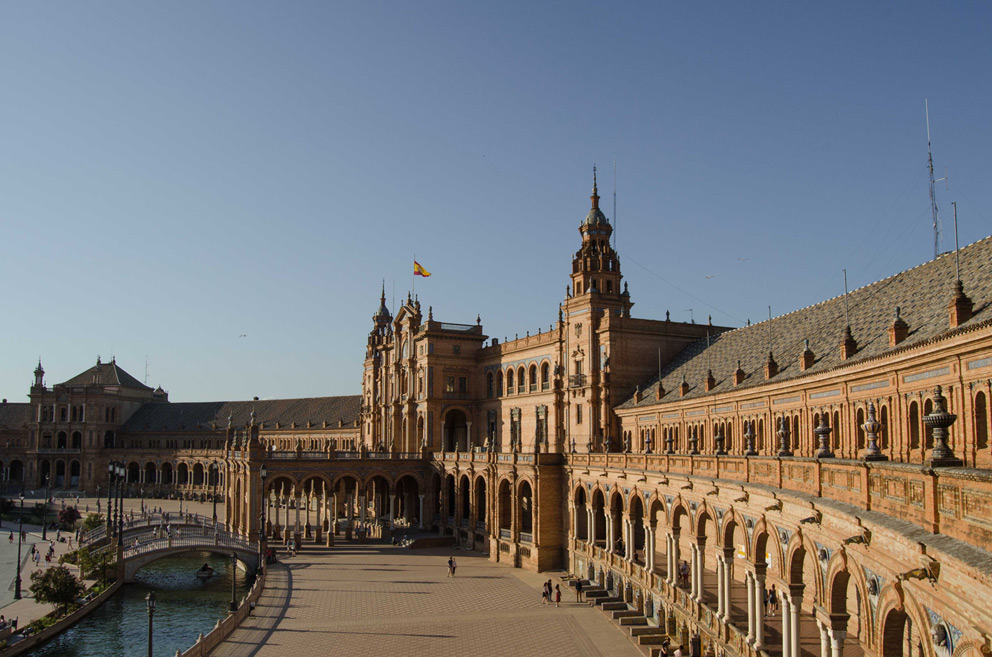
Right in front of the Plaza de España is a large park perfect for a bike ride or for a walk in the peak heat hours of the day. Along the park, you’ll find statues, fountains, and the Mudejar Pavillion that serves as the Museum of Arts and Traditions of Seville.
If you’re a European citizen traveling in Seville, you can enter de Pavillion for free. Other nationalities pay a €1,5 fee.
Timetables for the Mudejar Pavillion
June to August it’s open Tuesdays to Sundays from 9:00 to 15:00.
The rest of the year it’s open Tuesdays to Saturdays from 9:00 às 21:00. Sundays and holidays from 9:00 às 15:00h.
7. Seville Aquarium
Right by the river near Maria Luisa Park, is the Aquarium of Seville. Great for families with kids.
Ticket cost:
Adults pay €15
Kids 4 to 14 pay €10
For family discounts, group rates and timetables check: www.acuariosevilla.es/en/hours-and-rates
8. Barrio de Triana
Another typical neighborhood next to the Guadalquivir River and a must-visit for those wanting to experience the genuine atmosphere of Andalucia.
During the day check the local Triana Market, and at night have a drink at one of the many bars in Calle Betis or Calle Pureza. If you’re interested in attending a genuine Flamenco show, go to Casa Anselma. Drinks can be expensive around here, but the Flamenco is the real deal.
Public Transport to Barrio de Triana
Catch the metro and hope off in Plaza de Cuba and Parque de Los Principes, or hop on the bus nº5,6,40,43, C1 or C2.
9. Metropol Parasol
This controversial building that many Sevillians refer to as “the mushrooms of Seville”, has four different levels that you can visit.
At level 0 you’ll find an Antiquarium with Moorish and Roman remains. At level 1 is Seville’s old central market with fresh produce, a bar, and restaurants. On the second level are the panoramic terraces usually used for concert venues. And finally, the last level on top of the structure is a great viewpoint over Seville.
The Antiquarium can be visited from Tuesday to Saturday from 10:00 to 20:00 and on Sundays and holidays from 10:00 to 14:00 The price of the ticket is € 2.
To access the top level, you’ll have to pay a €3 fee and can only do it from Sundays to Thursdays 9:30 to 23:00 and Fridays 9:30 to 23:30.
10. Palacio de las Dueñas
After a 15-minute walk from the Cathedral is a very eclectic palace (which still belongs to Alba’s house) filled with large collections of Spanish paintings and artifacts. The buildings and courtyards were influenced by Renaissance, Gothic and Moorish styles, making it a major historic home of Seville.

Ticket cost:
€10. Children and students under 25 pay €8.
You can book your tickets here: www.lasduenas.es/tickets
Timetable:
From April to September it’s open from 10 to 20h, and between October and March, it’s open from 10 to 18h.
Cover photo by Matt Kieffer.
Quick Guide to the best Museums and Historical Sites in Seville, Spain
Some people find museum visits to be boring — and we do know that the experience of enjoying art is quite subjective. However, the 2000 years of history that the city of Seville holds, equipped it with an amazing cultural offer that can definitely be admired by everyone.
That’s why we made a travel guide to Seville’s best museums and historical sites.
Pabellón de la Navegación and the Schindler Tower
It’s a modern building on the south side of the Guadalquivir River that served as a pavilion for the Seville Expo ‘92. Today it’s a museum dedicated to the Age of Discovery.
As the museum hosts many itinerant exhibitions, check the museum program before starting your culture trip to Seville: www.pabellondelanavegacion.com
When you get there, go up the Schindler Tower for one of the best panoramic views of the city.
Entrance fee
€4.90
Museum hours
• Open Tuesday to Saturday from 11:00 a.m to 7:30 p.m.
• Sundays from 11:00 a.m to 3:00 p.m
• Closes on Mondays.
👪 All the lights and interactive displays of the main exhibition makes the Pabellón de la Navegación a family-friendly museum.
Public bus to Pabellón de la Navegación
🚌 Get on the buses of the C1 or C2 lines and hop off at the Inca Garcilaso Station, right in front of the Expo Sevici building.
Centro Cerámica de Triana
A new space conceived from the restoration of the old ceramic factory of Santa Ana, right in the center of the Triana Quarter. It’s a small museum and archaeological site on the history of ceramics and its influence on the economic and cultural development of Seville.
You can add this museum to your daily itinerary as it is located right next to the Triana market and many tapas bars (and you have to eat tapas if you’re in Spain).
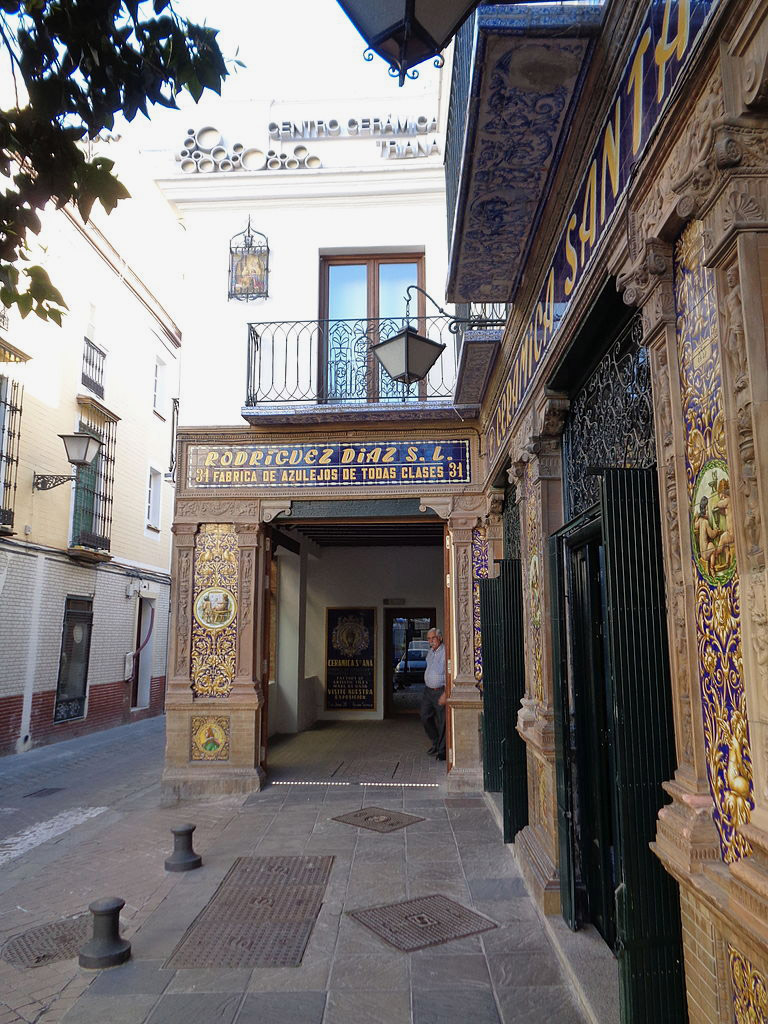
Museum entrance


Entrance fee
General public pay €2.10.
Students and groups of 10 people pay €1.60.
Museum hours
• Open Tuesday to Saturday from 11:00 a.m to 6:00 p.m.
• Sundays and holidays from 10:00 a.m to 3:00 p.m.
Now, even though we believe that this is a must-visit museum, we wouldn’t call it “family-friendly” as kids would probably find it boring.
Tip: If you buy the general ticket to the Alcazar of Seville you can enter the museum for free.
Cristina Hoyo’s Flamenco Dance Museum
Located at the heart of Barrio de Santa Cruz this museum provides a great way to explore the historical roots of Flamenco dancing through videos, music, and artifacts.
Museum entrance fee
Adults pay €10, children €6 and students €8.
Opening hours
• 10H00 to 19H00.
Tip: Every Friday and Saturday at 19H30 visitors of the museum can attend a flamenco show for a discounted price.
Flamenco shows ticket cost
To attend the regular shows adults pay €22, children €12, and students €15.
Tickets to the most intimate shows (44 people max.) adults pay €30.
Flamenco shows schedule
17H00, 19H00, and 20H45. During high season (July to August) there’s an extra show at 22H15.
Museo De Bellas Artes (Museum Of Fine Arts)
It’s a museum housed in a former nunnery from the XVII century holding an amazing collection of Spanish art. Most of the art is of religious inspiration, and it’s organized on 14 chronologically ordered rooms, and divided by different artistic styles (from gothic to XX century modern art).
In here you’ll find extraordinary art pieces from famous and influential artists like Velázquez and El Greco.
Entrance fee
European citizens get in for free.
For everyone else, tickets cost €1.50
Museum hours
• Tuesday to Saturday from 9:00 a.m to 9:00 p.m.
• Sundays and holidays from 9:00 a.m to 3:00 p.m.
More info at www.museosdeandalucia.es
Itálica Archeological Site
9km from Seville is the Archaeological Site of Italica — once one of the main Roman cities in the Iberian Peninsula due to its great strategic importance to the Roman Empire. It was here that Trajan and Hadrian, two great Roman emperors were born. And it’s also likely that you’ve seen Itálica on an episode of Game Of Thrones.

On your visit, you can walk through a huge Roman amphitheater (that seated 25 000 people), stroll along the ancient streets, and enter some of the houses and public buildings from 206 BC.

Photo by D.Rovchak
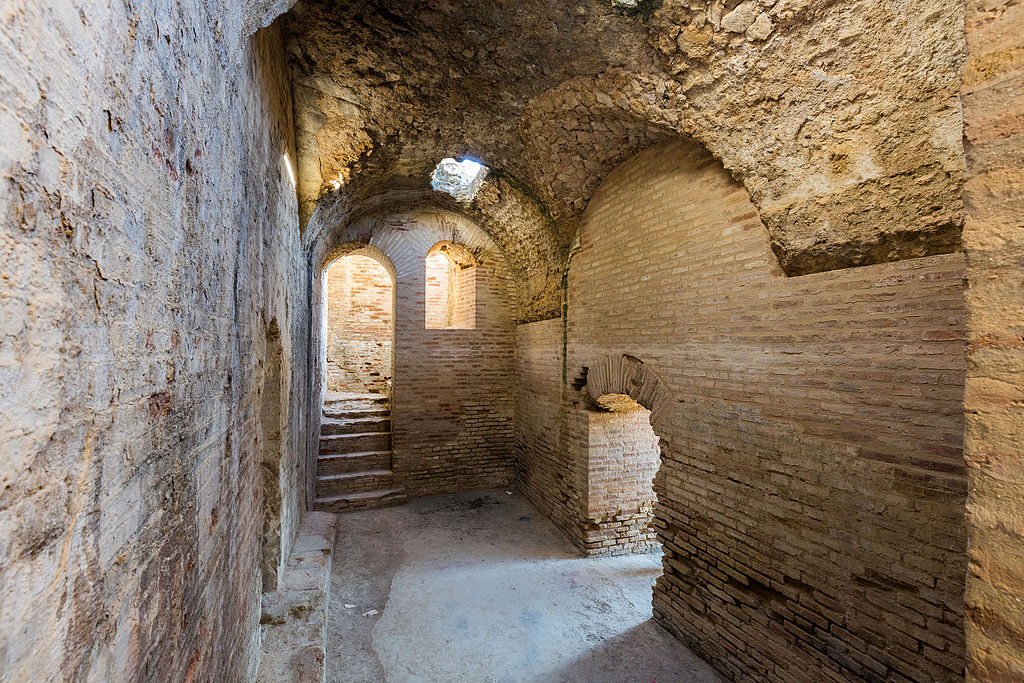
Photo by Diego Delso, delso.photo, License CC-BY-SA.
Itálica entrance fee
European citizens can enter the premises for free.
Everyone else pays €1,50 to get in.
Opening hours
• From April to June 30 opens from 9:00 a.m to 9:00 p.m Tuesdays and Saturdays. And 9:00 a.m to 3:00 p.m on Sundays and holidays.
• From July to September 15 opens from 9:00 a.m to 3:00 p.m and closes on Mondays.
• From September 16 to March 31 opens from 9:00 a.m to 6:00 p.m Tuesday to Saturday. And from 9:00 a.m to 3:00 p.m on Sundays and some holidays.
Getting to Itálica Archeological Site
🚌 At the Plaza de Armas, in the center of Seville, hop on the Bus M-170 (Seville > Santiponce) or the M-170B (Seville > Las Pajanosas).
🚗 If you have your own vehicle, take the N-630 road towards Merida.
More info at www.museosdeandalucia.es
Cover photo by Diego Delso, delso.photo, License CC-BY-SA.
Travel Etiquette: Good tourists vs Bad tourists
Tourism can be of great social, cultural, and economic value to everybody involved — the visitor and the visited. And a big part of it will be determined by the type of traveler you are.
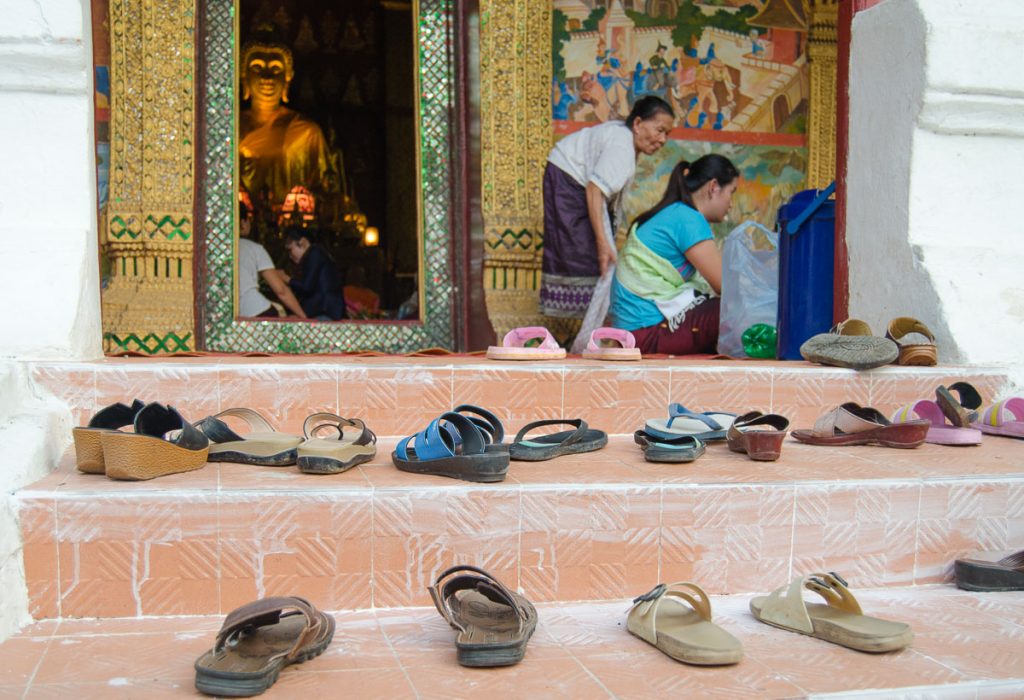
Bad Tourists
There’s nothing worse than a petulant tourist making a scene at a 3rd world restaurant because he’s a bit peckish and no one in the staff can speak English, right?
Actually, there is: seeing empty water bottles and soda cans scattered everywhere as you’re visiting the temples of Angkor, or the words “Jenny 2006” carved into the stone walls of a World Heritage site. And let’s get real: not a single Cambodian girl is named Jenny. Jenny is the pet name for Jennifer — a privileged western girl that flew to Cambodia thanks to the earned miles from her credit card, and thought it was cute to leave her mark on the other side of the world.
Please, don’t be Jenny.
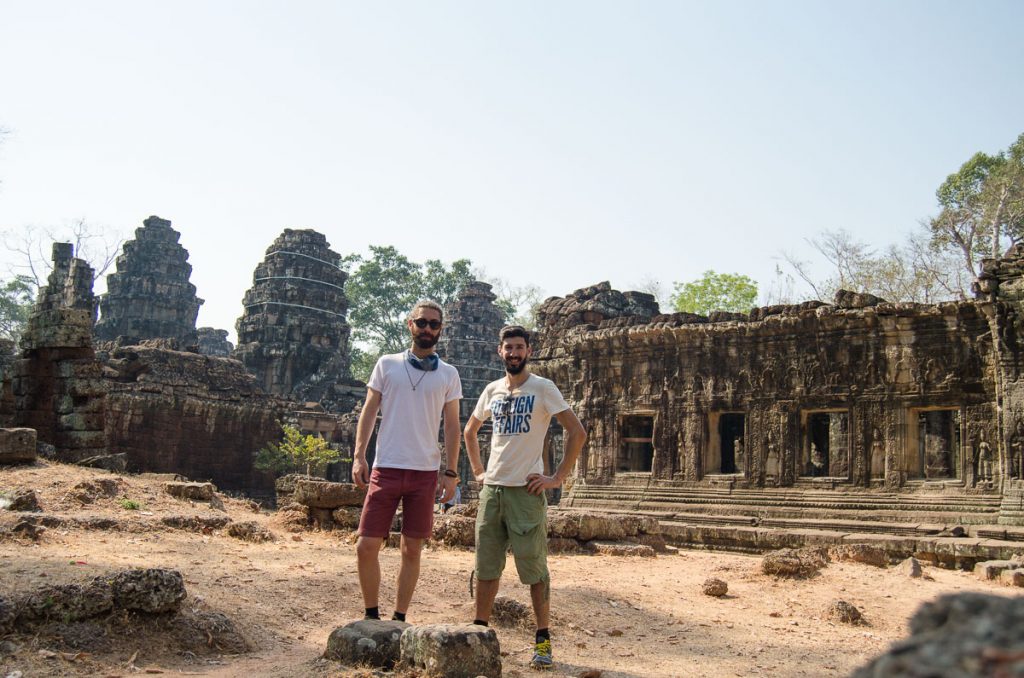
Environmental Conscience and Cultural Respect
Here’s a simple way to put it: when you travel you’re always a guest in someone else’s home, so behave accordingly.
You may not agree with all the customs of the country you’re visiting but that’s your prerogative.
But we’re not asking you to compromise your values though: Nuno and I spent whole days carrying trash in our backpack when the norm was to throw it on the ground.
On our trip to Southeast Asia, we never engaged in activities involving elephants or any other animal because let’s face it: even though elephants are adorable, these tourist activities are businesses, and many times the proper treatment of the animals is often not a priority.
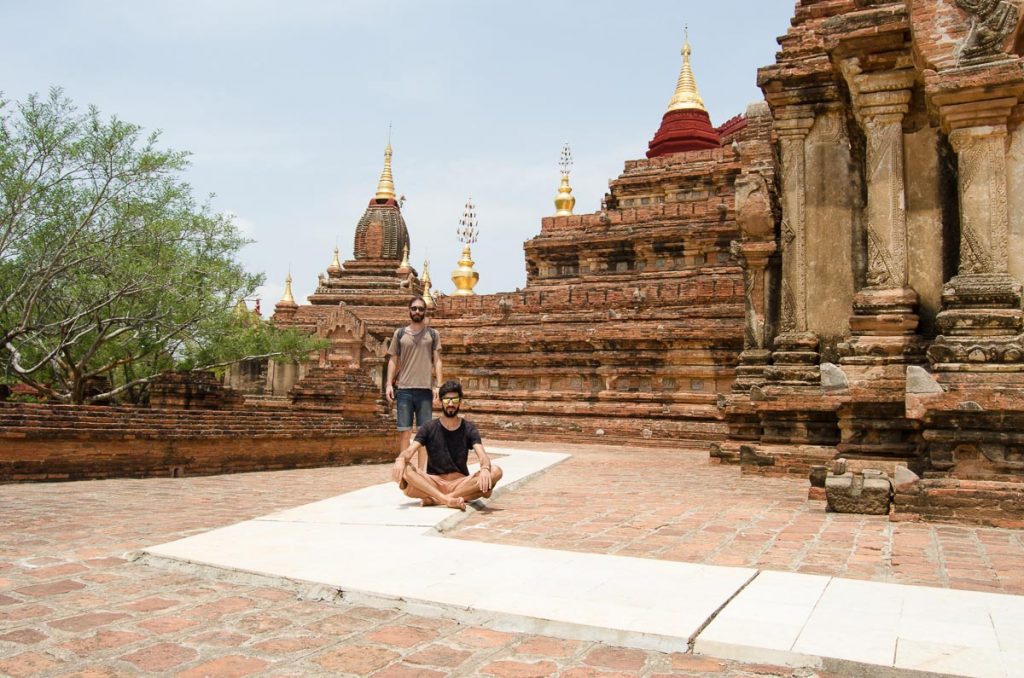
Using the photo above as an example: we’re not Buddhists, the floor was scorching and nobody was around to make sure we weren’t wearing shoes, but we didn’t anyway. This is a sacred place to the Burmese and they always walk barefoot when visiting temples.
Let the uncomfortable situations serve you as a contrast to appreciate what you have back home. We all love to yap about how we ‘travel to experience different cultures’, well the bumpy bits are part of the experience too, so learn something from them!

It’s key to be respectful and ask for permission before snapping pictures of locals. Always be sensitive to the situation, respect local rituals and ceremonies by being the least invasive as possible. Otherwise, you’ll end up one of those rude paparazzi-tourists we witnessed in Luang Prabang during the alms giving ceremony—revealing their lack of information and detachment from the culture they were in.
Good tourists travel like locals
A good practice for all of us travelers is to do some research on the customs and traditions before visiting any given place. By educating ourselves on the social reality of a country, we’re providing insight into our minds and empathy to our hearts.
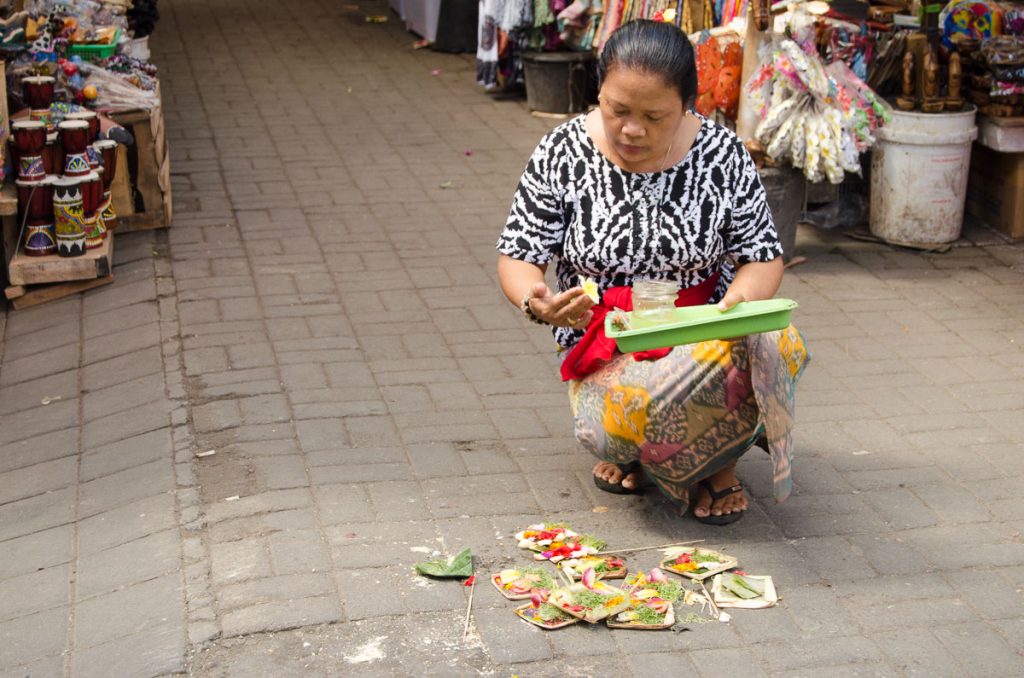
Don’t be rude when people don’t understand English. In fact, you shouldn’t expect them to.
Learn some basic words in their language even if just “Hello” or “Thank you” — it’s a sign of consideration. Smile and use any interactions as a way to learn some new vocabulary!

Keep in mind that you’re the one on vacation, traveling, and probably having the time of your life, but locals are just going about their daily routine. The same day, but VERY different perspectives.
Be a conscious consumer and buy locally made products to support local communities. Go eat at local restaurants, taste new flavors, and enjoy the country’s cuisine. Eat the fruits locals eat, drink coffee the way they drink it, and avoid sugar-filled plastic packaged crap when you feel like snacking.
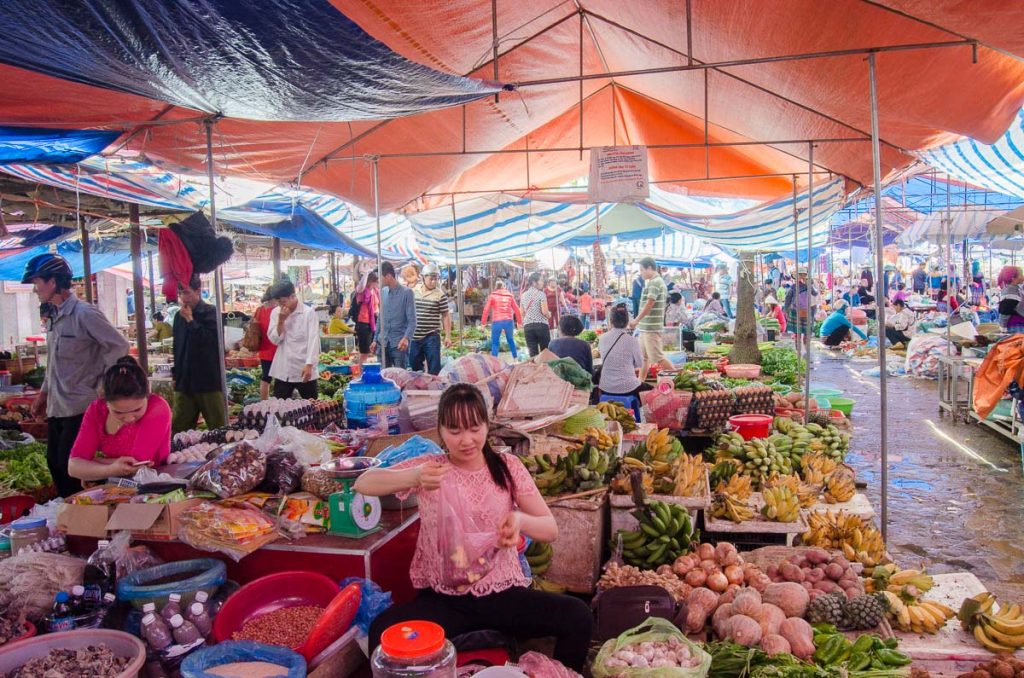
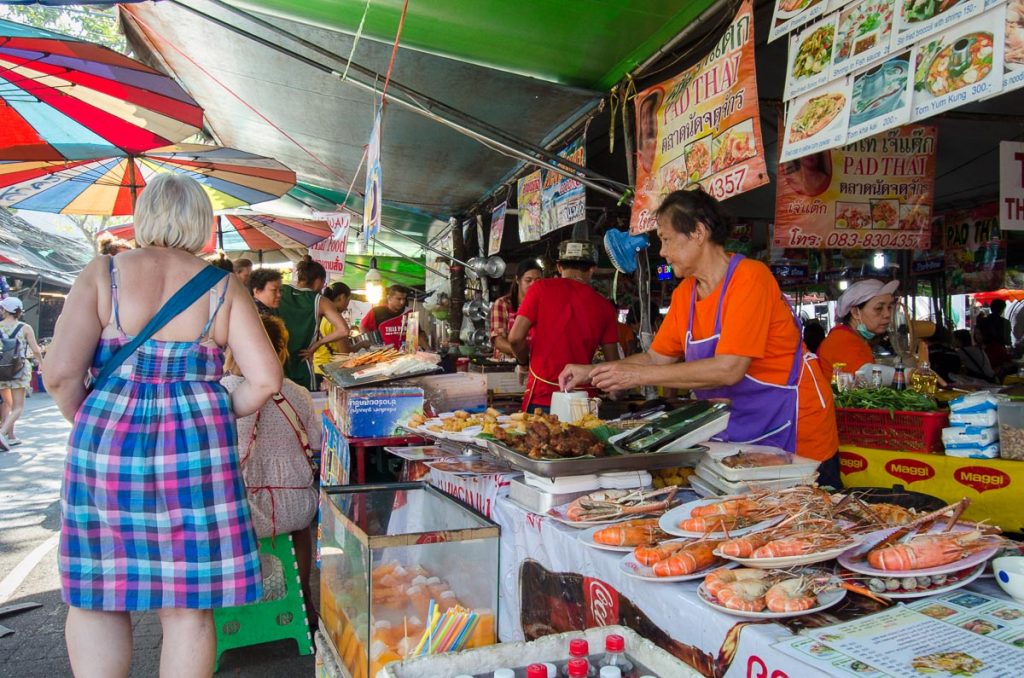
When choosing accommodation, stay in locally owned guesthouses instead of international hotel franchises, and remember that buying locally will always cost you less!
You don’t need to wear a hijab as soon as you arrive in a Muslim country because is common for local women to do so. Just be mindful and dress appropriately to not be walking around a Buddhist conservative country with a bedazzled bikini top and cut-off shorts because ‘it’s like, really hot outside’.
That’s something Jenny would do.
Remember: don’t be Jenny.
Be polite, positive, and eco-conscious.
Do you have other examples of good tourists and bad tourists?
Leave them in the comments below!
The Complete Travel Guide to the South of Gran Canaria
Now that you know all you can do in the North of Gran Canaria, it’s time to travel to the south coast of the island and get familiar with the natural landscapes, popular beaches, and the best food around.
Before you start packing, here’s a tip: pack a pair of mountain boots with your swim shorts — you’re likely to wear them both at the same time.
Weather in the South of Gran Canaria and the Best Time to Visit
In the south, temperatures hover between 20ºC and 30ºC and there are over 320 days of sunshine per year.
The best time to visit is from May to mid-October. To check the weather during your trip go to www.accuweather.com/Gran-Canaria-South
There’s a significant weather difference between the north and the south of Gran Canaria. There’s like an invisible wall preventing rain clouds from going south and ruining tourists’ tans.
Public Transport from the North to the South of the Island
If you’re planning to move around the island without a car, there’s no problem! Gran Canaria has a great public transport system.
Buses are on time, cheap, and the next best option to travel across the island.
Here’s an example:
A bus trip from Las Palmas (north) to Playa del Ingles (south) costs: €6.25
Duration: 45 minutes
Routes and schedules are available in www.globalsu.net
What to do in the South Coast of Gran Canaria
To help you navigate the island, all the places mentioned in this post are marked with bright yellow pins on the map below.
Faro de Maspalomas
Even though the Faro de Maspalomas is a landmark of the island, you don’t go there for the lighthouse itself — you go for its surroundings.
The area probably has the best walkway in Gran Canaria. The fresh air, the wonderful ocean view, and the fancy shops make it the ideal spot for a stroll. When the sun sets, the many bars and restaurants provide a pleasant evening out for dinner and drinks.
Puerto de Mógan
Puerto de Mogán is an idyllic little place by the sea where time seems to have stopped. Around here everything seems perfectly proportioned and perfectly placed. From the crescent-shaped beach to the busy little harbor.
And let’s not forget to mention the white houses built over the water canals, and the colored bougainvilleas that create natural shadows for people walking by.
Yumbo Shopping Centre
This alfresco shopping center near Playa del Ingles might look a tad generic during the day, but at night it turns into the inclusive gay mecca of Gran Canaria — don’t let the mosque at the entrance fool you.
From around 9 P.M, all cabaret bars, karaoke cafes, and nightclubs are targeted to the LGBTQIA+ crowd. However, the fun atmosphere and popularity of the drag shows, always attract a very mixed audience.
When Nuno and I visited Yumbo, all the bars were jam-packed. Not knowing what bar to pick, we decided on the one announcing a drag show. For the next 20 minutes, we got to watch 5 Spice Girls impersonators that filled our hearts with 90’s nostalgia.
Maspalomas Dunes
The Maspalomas Dunes are a nature reserve with 400 hectares and 3 ecosystems coexisting: a palm grove, a brackish water lagoon, and the dunes.
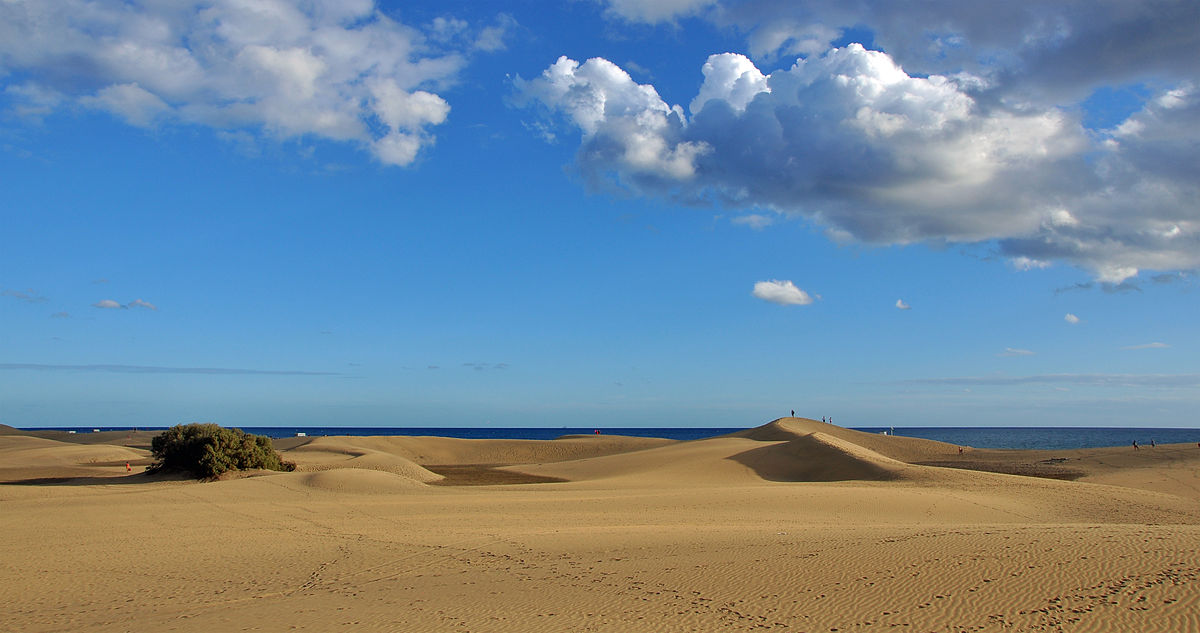
Photo by Marc Ryckaert.
Walking on the dunes was quite the experience. The desert-like proportions of the sandhills blocked all wind and sound, allowing us to submerge into complete silence and isolation even on one of the most visited coasts in Europe.
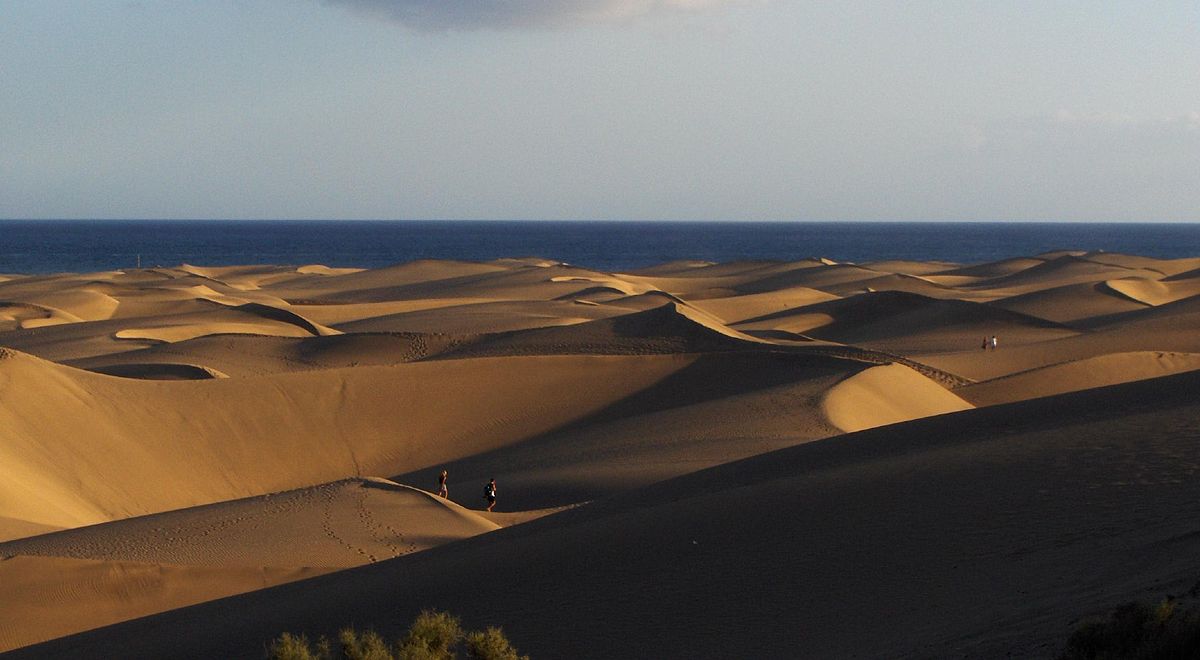
Photo by Himarerme.
But the silence didn’t last long. After a few minutes, a giant fart out of the ass of another tourist (probably also thinking he was alone) echoed through the dunes and ruined the moment.
…and to think that the dunes are the resting place for birds migrating to Africa. What kind of rest can a bird get under these conditions?
Popular Beaches in the South of Gran Canaria
Playa del Inglés
Even though Playa del Inglés is the most visited beach in Gran Canaria, it has enough space for everyone. The 2.7 km stretch of sand offers different beaches for different folks. There’s a beach for:
• Families,
• Surfers,
• Nudists,
• Loners,
• LGBTQIA+ crowds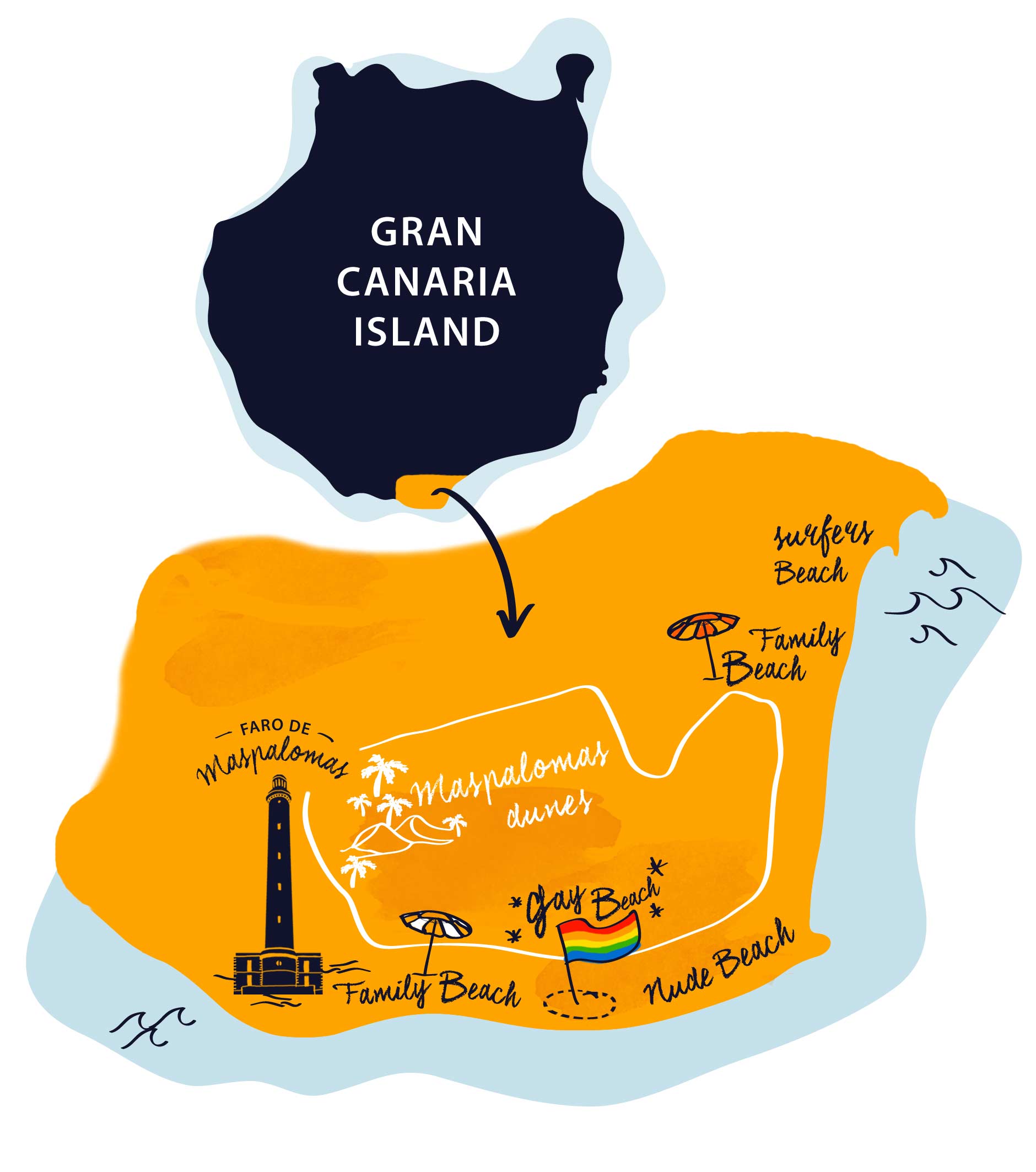
But if laying on the sand all day isn’t for you, Playa del Inglés has plenty of sports activities like: windsurf, jet-ski, banana boat rides, and sail.
Prices for these activities start at €30 for one person.
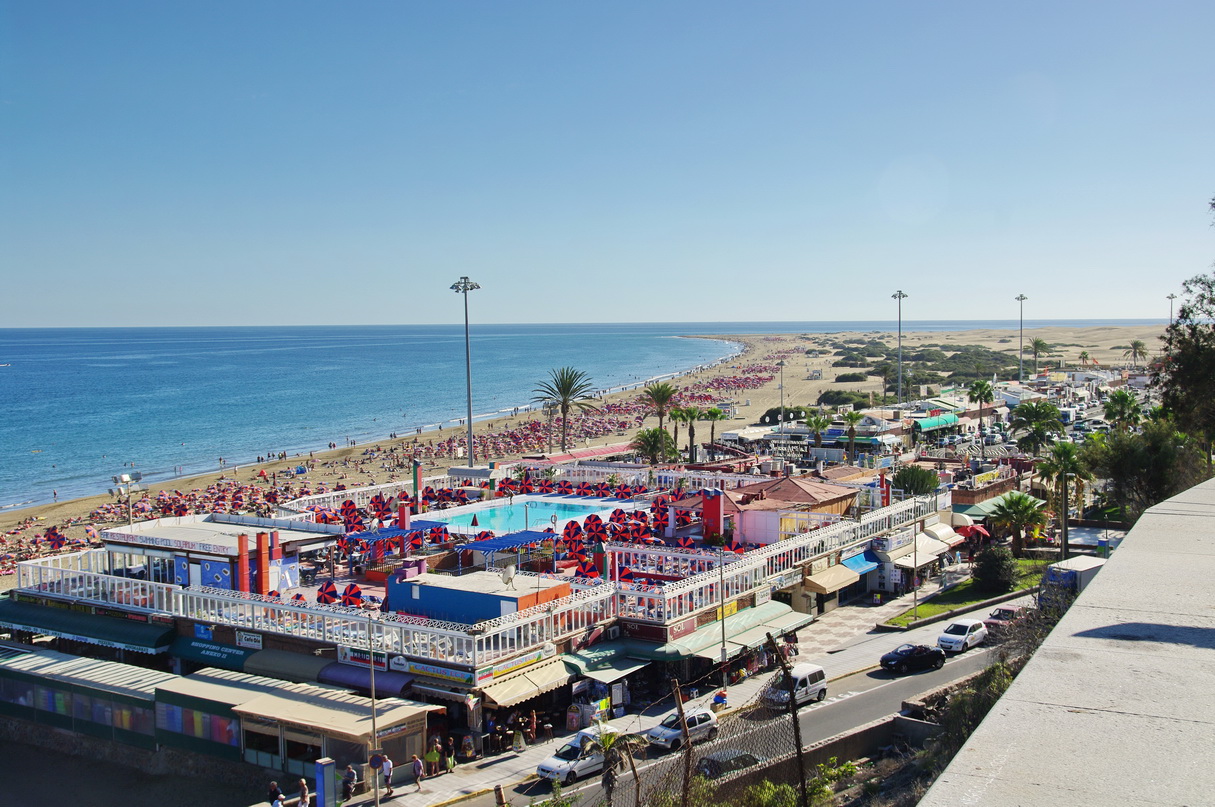
If that’s too much action, you can always go for a walk on the Maspalomas dunes to live your Prince of Persia fantasy. If you’re hard to please or feel like walking on sand is bad for your knees, go over to the Paseo Costa Canaria: a 2km promenade by the beach brimming with restaurants, ice cream shops, and cafes.
→ Public Showers and restrooms available
♿ Beach accessible to wheelchair users
Puerto Rico Beach
It’s the first artificial beach in Gran Canaria, popular among British and Irish families due to its calm waters and convenient amenities provided by the surrounding resorts such as:
• Sunbeds and sunshades
• Restaurants
• Leisure excursions
• Water sports activities (sailing, dolphin watching, jet skiing, etc)
→ Public Showers and restrooms available
Amadores Beach
Another man-made beach awarded with a blue flag for the cleanliness of its water and sand.
The white sands sit in a moon-shaped bay where the water is turquoise, shallow, and waves are pretty much nonexistent. That’s what makes Amadores a very popular beach among families with kids.
→ Smoke-free beach
♿ Disabled-friendly
→ Public Showers and restrooms available
→ Underground parking area
Underrated Beaches
San Agustín
A few kilometers from Playa del Inglés is San Agustín, considered to be a very calm beach with fewer tourists.
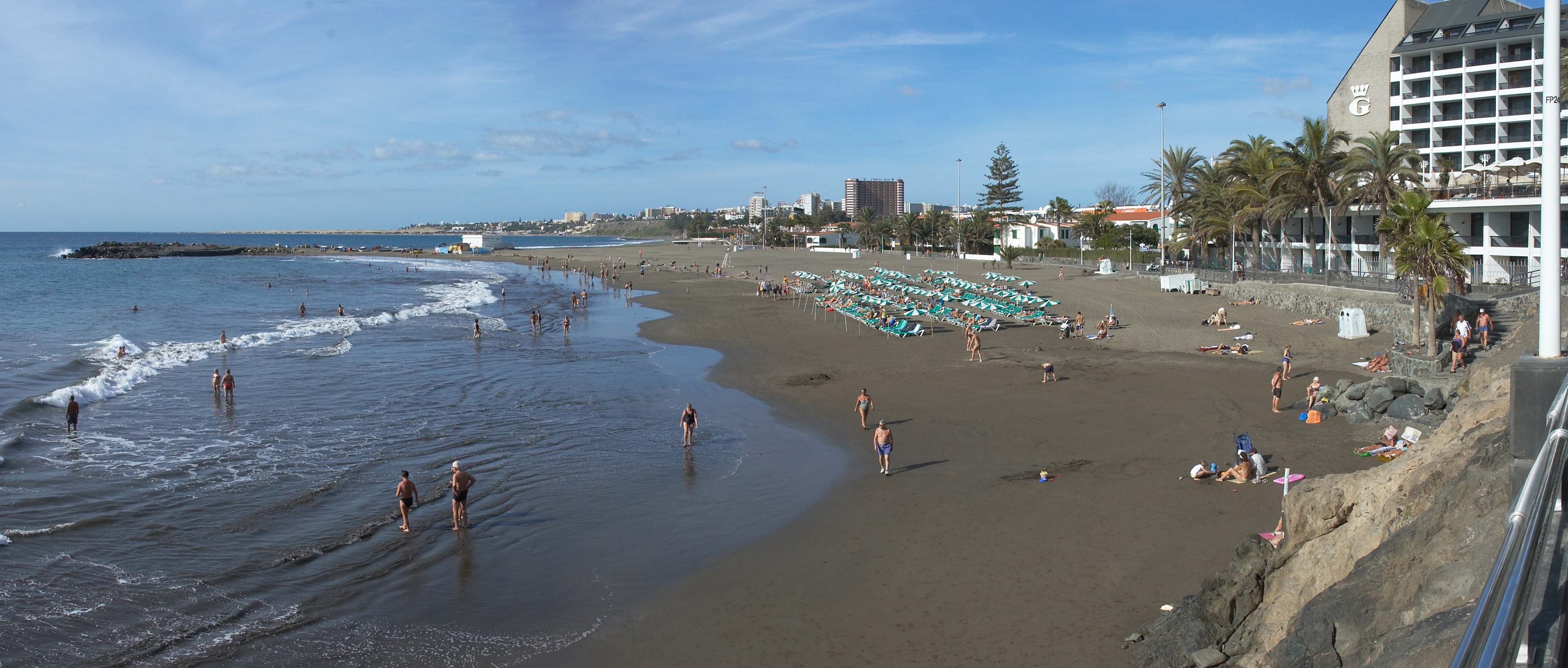
Photo by Wouter Hagens.
Locals usually come here on weekends, so take advantage of the weekdays if you prefer a bit more room to spread out.
It’s an urban beach with a coastal walkway that connects to Playa del Inglés — meaning you’ll find lots of places to eat and drink close by.
→ Public Showers and restrooms available
→ Free parking
But have in mind that this perfect little town can get crowded with tourists, particularly on Fridays and weekends. That is the beach gets crowded, the streets busy, and the restaurants full.
Getting to Puerto de Mogán by Public Bus
From Playa del Inglés to Puerto de Mogán, get on the Bus nº 1, nº 32 (fast route), or nº 33.
Trip cost: €4.15
Duration: 45 minutes
For more info on this trip, check: www.guaguasglobal.com/timetables
Las Burras
Maybe it’s the wind that can be felt around here that pushes tourists away, but Las Burras beach remains the most local of beaches in the south of Gran Canaria.
Nevertheless, fewer tourists don’t necessarily mean that the beach isn’t busy in months like July, August, and September.
Public buses to all the Beaches mentioned above
Buses nº 1, 39, 91, 33 can drop you right by any of the beaches. Depending on your starting point, the trip can cost up to €4.
Check the timetables on the ‘guaguas’ website.
What to eat
Food in Gran Canaria is always fresh and seasoned to perfection. We’re talking about the lovechild of Spanish, African, and Latin-American cuisines after all.
Meanwhile, here are some of our recommendations:
• Papas arrugadas con mojo
• Anything with gofio on it
• Bienmesabe
• Huevos rotos
• Plenty of mojo rojo or mojo verde
Typical Villages to visit in the South of Gran Canaria
Ingenio
A small agricultural village and one of the oldest on the island. Besides a visit to the old quarter, we suggest:
• The pre-hispanic necropolis on the Guayadeque Ravine
• Caldera de Los Marteles natural reserve
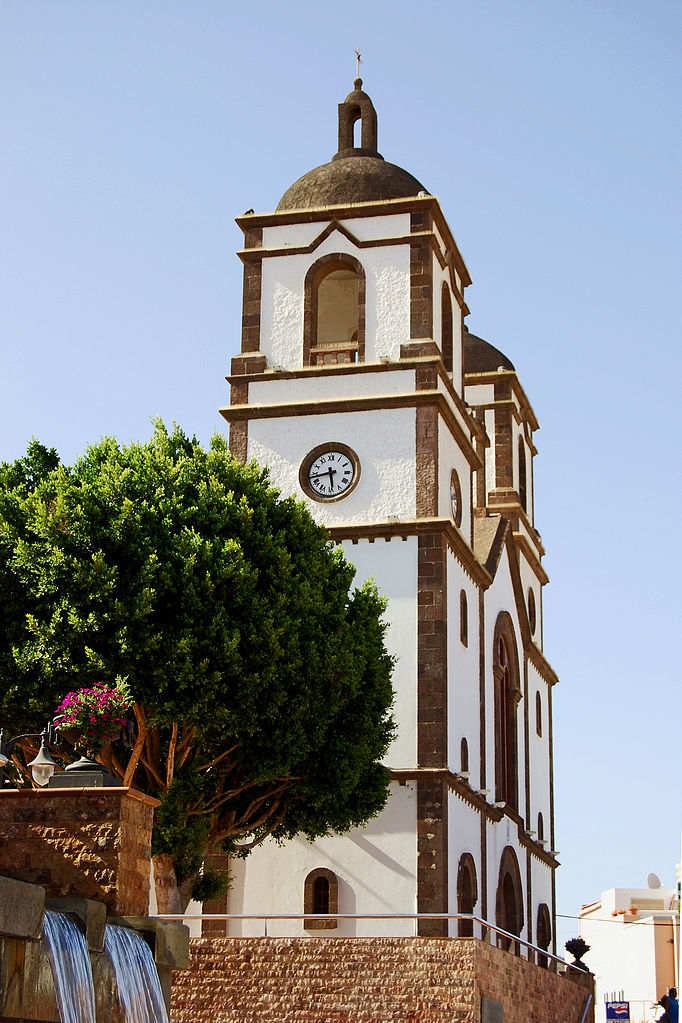
Photo by Backlit.
Agüimes
If you have time to spear on the island, to the east is the traditional hill town of Agüimes.
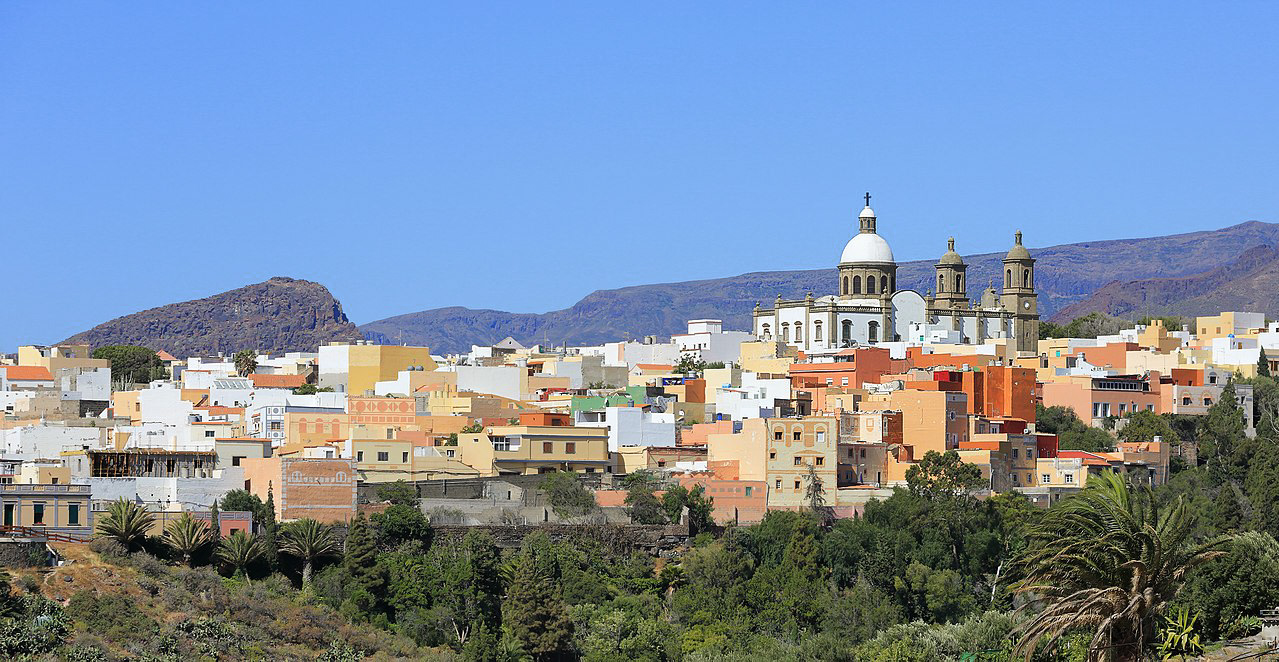
Photo by Martin Falbisoner.
Here in Agüimes, we recommend:
• A walk through the old quarter and medieval alleyways
• Festival de Sur, an international theater festival (September)
• Playa del Cabrón as it is one of the best diving spots on the island
Traveling to the North of the island?
Go to: The Complete Travel Guide to the North of Gran Canaria
Cover photo by Bertram Nudelbach.
The Complete Travel Guide to the North of Gran Canaria
Gran Canaria (and all the Canary Islands for that matter) are a popular summer destination for many Europeans. People come here due to a combination of great beaches, diverse landscapes, and low-cost flights available almost year-round.
Today it’s all about Gran Canaria. And considering that it’s quite a big island, we divided the information into 2 different travel guides: the North and the South of the island. In this part, we’ll be covering the best things to do in the north.
Gran Canaria Weather
Subtropical. With an average annual temperature of 24 degrees.
That’s why locals call the Canary Islands the islands of eternal spring.
To check the weather during your trip go to www.accuweather.com/Gran-Canaria
Getting to Gran Canaria
(Inter-island transportation)
Ferry
If you’re crossing between islands, we recommend doing it by ferry.
The 2 ferry operators making the connecting routes between islands are Naviera Armas and Fred Olsen.
To give you an idea of costs and travel times, here’s the information on the trip from Tenerife to Gran Canaria:
Naviera Armas
Cost: €35
Trip duration: 2h45
The ferry docks in the port of Las Palmas, where a transfer will take you to the city center in 10 minutes (no extra fees).
For the ferry timetables check www.navieraarmas.com/timetables
Fred Olsen
Costs: €40
Trip duration: 80 minutes for the ferry, plus 25 minutes for the shuttle bus (no extra fees). The ferry docks in Agaete but a shuttle bus will take you to Las Palmas.
To see the Fred Olsen ferry timetables check: www.fredolsen.es
Airplane (inter-island)
Canaryfly and Binter have frequent flight connections between islands. Prices are reasonable — €20 on average — depending on the month you’re flying.
Airplanes land at Las Palmas Gran Canaria Airport, located 19 km from the capital Las Palmas (or 30 km from Playa del Inglés if you’re going to the south).
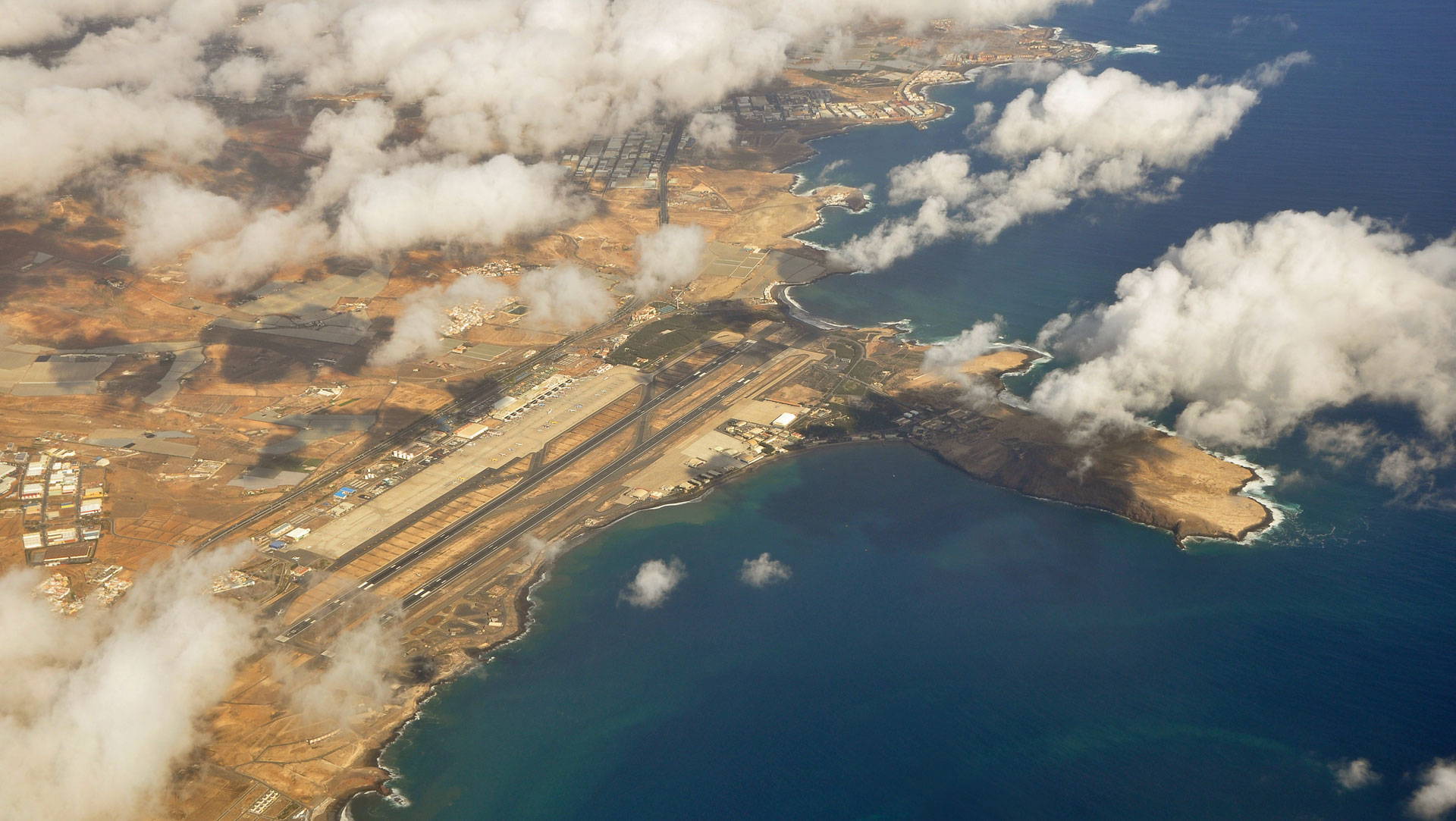
Photo by Marc Ryckaert
Airport Transfer Buses (for both inter-island and international flights)
To get anywhere on Gran Canaria you can hop on one of the blue buses (“guaguas” as locals call them) parked right outside the airport terminal.
A bus ticket from the airport to Las Palmas is € 2.95 and for Playa del Inglés € 3.50. You can’t beat that!
For timetables and other routes check: Guaguas Global
Accommodation
As a tourism-dependent island, there’s an array of accommodation options scattered all over Gran Canaria. Prices start at €12 a night in a hostel, up to €120 a night in a four-star hotel.
On the north coast of the island, most hotels are located near the beach of Las Canteras. We’ve stayed at hotel Pujol (pronounced Poo-whole).
What to do in The North of Gran Canaria
To help you navigate the island, all the places mentioned in this post are marked with dark blue pins on the map below.
The Historic Quarter of Vegueta
Vegueta is an old neighborhood with the best colonial architecture on the island. You can walk for hours on cobblestone streets, finding new alleys and admiring the historical houses from the 15th century.
Right in the center of the quarter is Santa Ana square and Cathedral. There’s a fee to go in, but don’t bother, the interior is quite dull. We recommend instead spending your money at one of the many outdoor cafes in the area eating tapas and enjoying the sun.
There’s a craft market every Sunday.
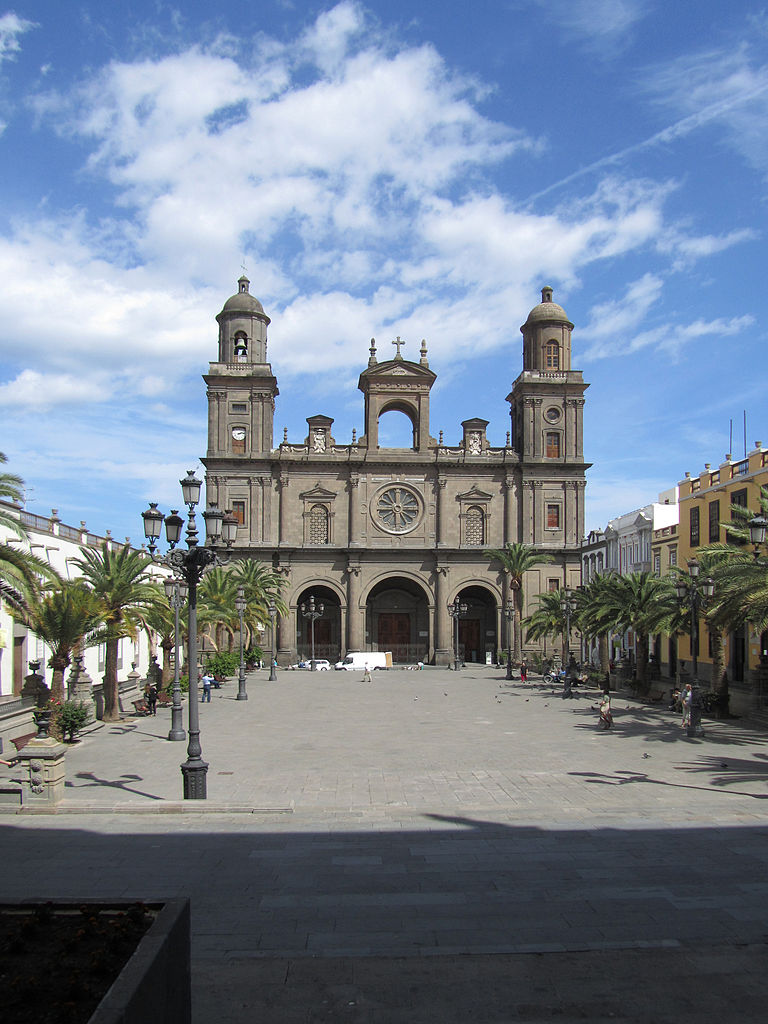
Photo by Jvhertum
Calle Mayor de Triana (Shopping street)
Triana neighborhood — also one of the oldest in Las Palmas — has become the main shopping district of the city. Small old-timey shops, popular stores, and fancy boutiques are always presented in beautifully restored buildings. It can be a beautiful walk even to the most frugal.
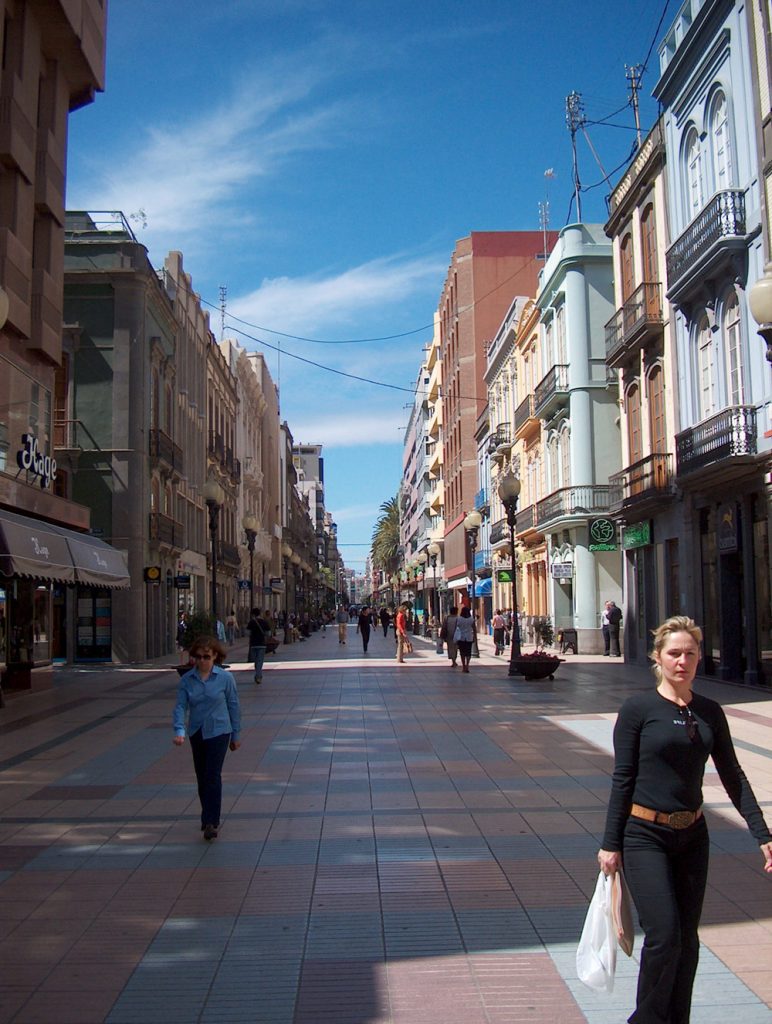
Photo by Matti Mattila
Vegueta Market
Vegueta Market is the first market ever built in the Canary Islands back in 1856. And today remains the spot where locals come to buy fresh produce.
Tip: you’ll be tempted to buy some of the glorious tropical fruit displayed on the stalls. If you do, ask for the price beforehand as several vendors tend to overcharge tourists.
Museums
House of Columbus (Casa de Colón)
A museum about the relationship between the Canary Island and the Americas.
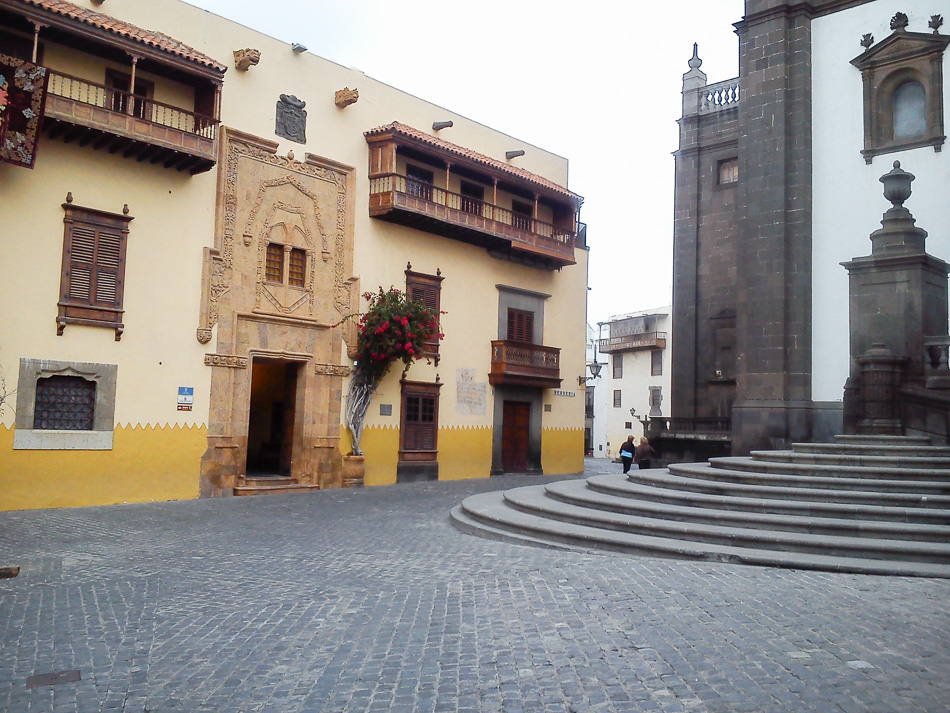
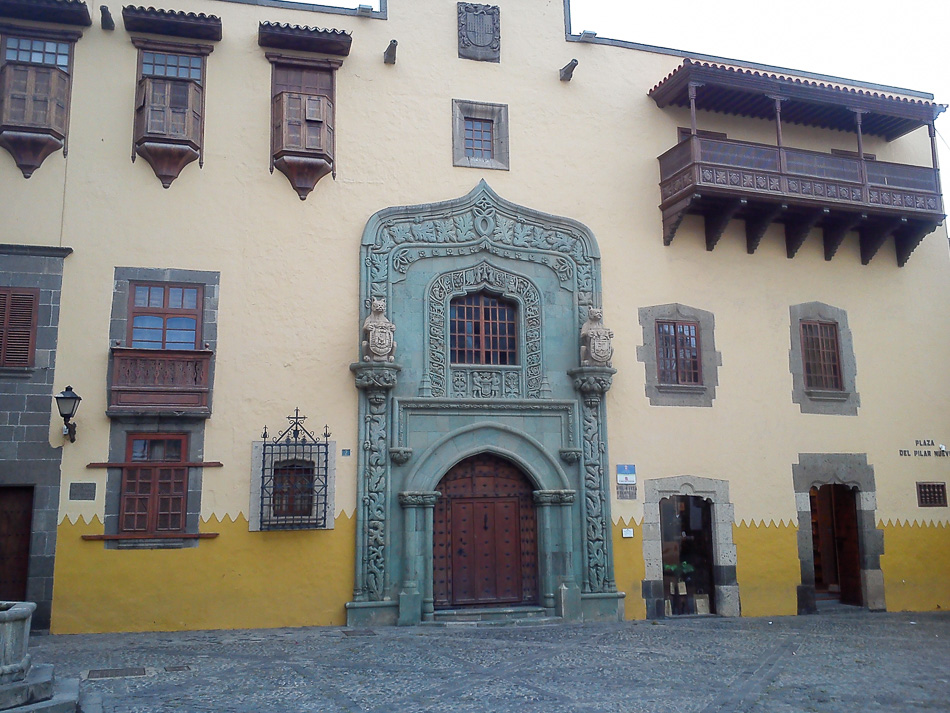
Location: Calle de Los Balcones, on the historic quarter of Vegueta.
Admission fee: €4 (you can visit the building’s library for free).
Opens: Mondays to Saturdays 10:00 AM to 6:00 PM
Sundays 10:00 AM to 3:00 PM
Museu Canario
A museum about the prehispanic population and the history of the archipelago.
Location: Calle del Dr. Verneau, on the historic quarter of Vegueta
Admission fee: €5 (free for kids under 12 y.o.)
Opens: Mondays to Fridays 10:00 AM to 8:00 PM
Saturday and Sunday from 10:00 AM to 2:00 PM.
Centro Atlántico de Arte Moderno
Exhibition and activity center of contemporary art from the Canary Islands, Europe, Africa, and the Americas.
Location: Calle Los Balcones, on the historic quarter of Vegueta (near Casa de Colón)
Admission fee: €5
Opens: Tuesdays to Saturdays from 10:00 AM to 9:00 PM
Best Beaches in the North Coast of the Island
Las Canteras
Covering a 4 km slice of coast, Las Canteras is the largest beach in Las Palmas. Being located right by the city, it’s the central hub for local life and the favorite spot for surfers and tourists.
If you don’t feel like laying on the beach, you can hang out at one of the numerous cafes, restaurants, and shops in the wide promenade by the sand.

Photo by Pepelopex
Gui Gui
Gui Gui is a secluded beach on the west side of the island (it’s actually two: small Gui Gui and big Gui Gui). Getting there means a 2.5-hour hike or a boat trip from the nearest town of Tasartico.
The long walk to Gui Gui is worth it as the mountains and scenery along the way are just as impressive as the destination. The beach itself is an unspoiled paradise where you can spend the rest of the day and even spend the night (if you do so, take the appropriate gear as the nights get quite cold).
Many hikers that come to Gui Gui and camp overnight say the night sky is breathtaking.
Typical villages on the North of Gran Canaria
Agaete
A fishing village in Puerto de las Nieves, with one of the most picturesque landscapes on the island made of white and blue houses by the sea.
Besides the small town itself, we recommend:
• The necropolis of Maipéz
• Las Salinas de Agaete where you can swim in a natural pool
• Natural Park Pinar de Tamadaba
• The caves of the Guanches
• Cueva Pintada Museum and Archaeological Park
Firgas
Firgas is known as the “balcony of the Atlantic”, for having the best viewpoint on the ocean and the entire northern half of the island.
Artenara
It is the highest city on the island and the perfect spot to rest from the beaches of the coast.
Here in Artenara, we recommend:
• Astronomical observatory Vega de Acusa
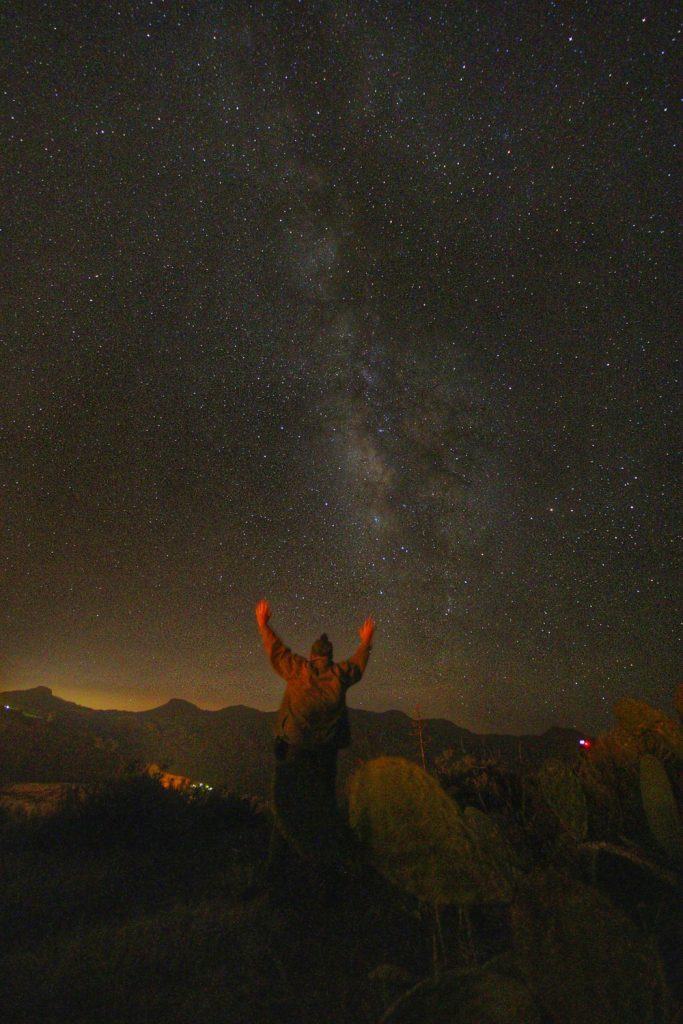
Photo by El Coleccionista de Instantes
Nature attractions
Tamadaba Natural Park
Close to Agaete, Artenara and San Nicolás de Tolentino is the Natural Park of Tamadaba.
Here you’ll find the oldest and best-preserved pine forest on the island — classified by UNESCO as a Biosphere Reserve — extending from the summit of the mountain all the way to the west coast. Along the park, you can expect some breathtaking views of the Atlantic and the Teide (all the way on Tenerife), stunning valleys, and little old villages.
It’s a great hiking and walking site.
Getting to Tamadaba Natural Park by Bus
From Las Palmas bus station, take the hourly Bus No. 102 to Agaete. In Agaete stop at El Lomo and follow the trail to Tamadaba.
Rural Park del Nublo
Right in the center of the island is the Rural Park del Nublo, a natural wonder also classified by UNESCO as a Biosphere Reserve.
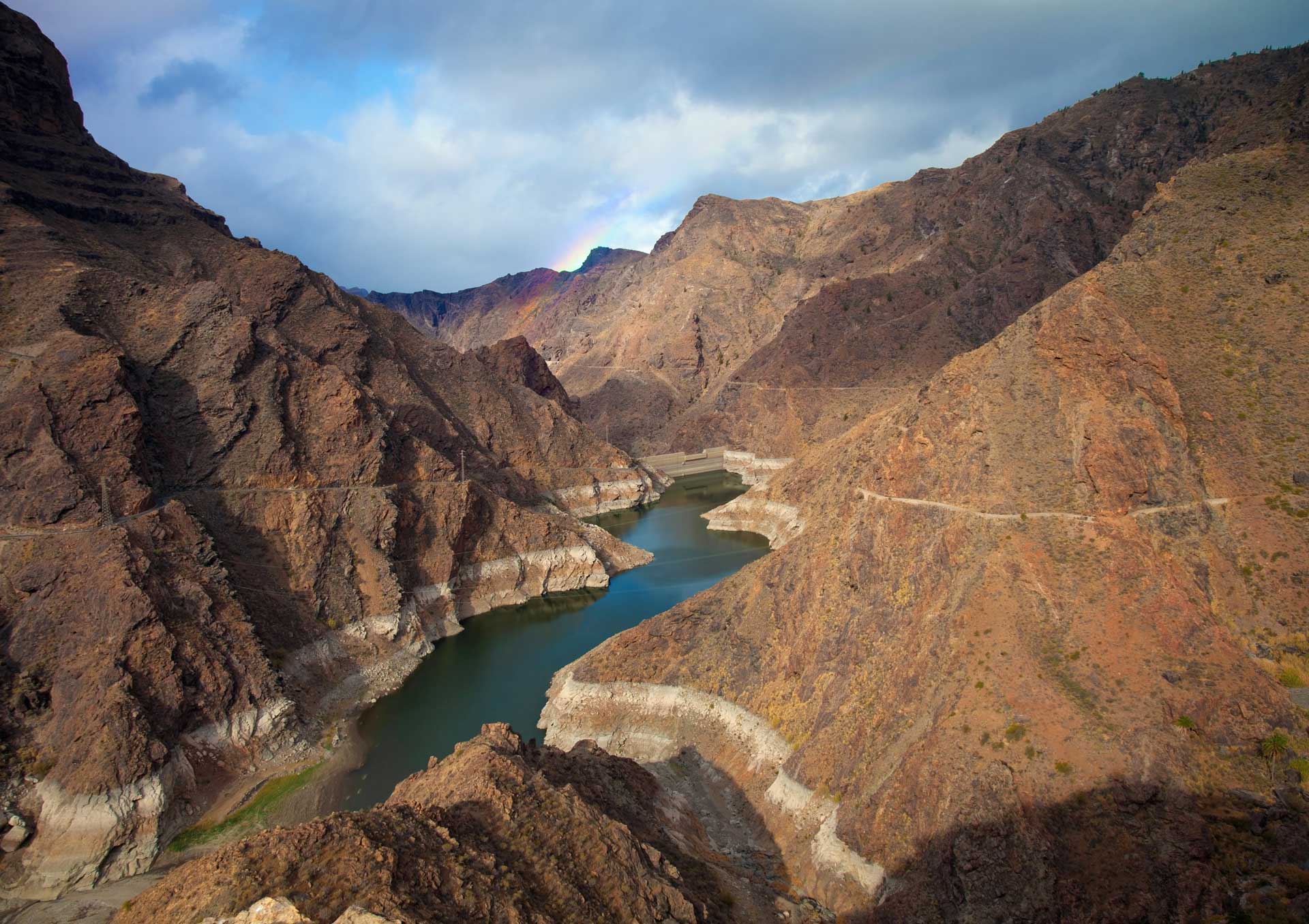
Photo by Tamara K.
We recommend visiting:
• The natural lagoons
• Roque Nublo ravines
• Roque Bentayga
• Las Niñas dam
Also a great hiking spot with a campground available
Ready to visit the South of the island?
Go to: The Complete Travel Guide to the South of Gran Canaria
If you have any questions or some extra info to add, let us know in the comments.
Cover photo by El Coleccionista de Instantes
Discover Barra and Costa Nova: the beach getaways by Aveiro (Portugal)
Like all residents of Aveiro, Nuno and I spent many summers with our families and friends on the beaches of Barra and Costa Nova. Every year from June to September, these beaches are brought to life by the influx of visitors coming from all its neighboring cities to soak up the sun, boogie-board, and stroll on the boardwalks.
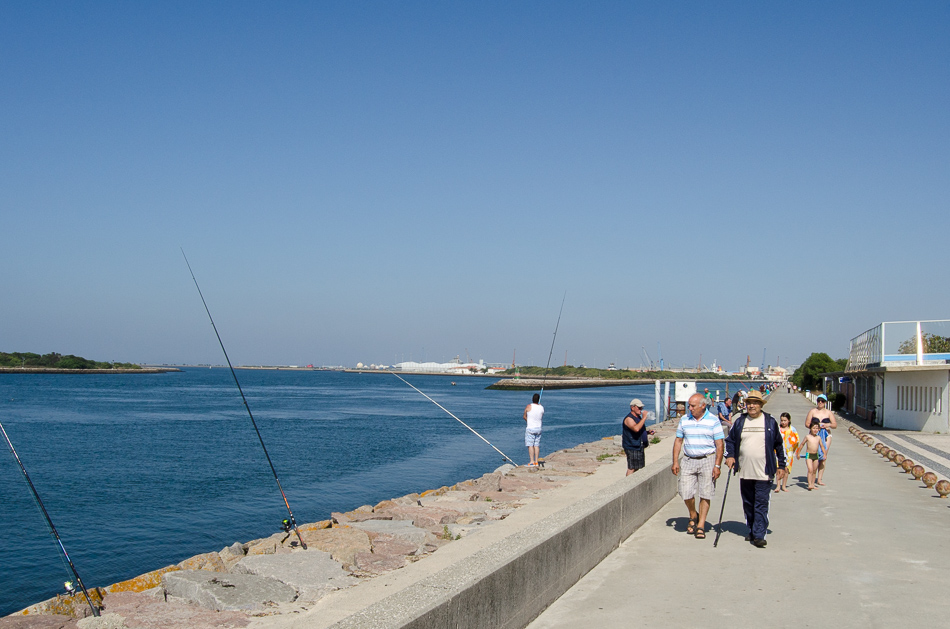
But even when winter sets in, these beaches near Aveiro remain the cheeriest getaways for the local sun worshipers. So there’s still plenty to see during the cold season as well.
Here’s a glimpse of what you can find:
Bus from Aveiro to Costa Nova and Barra Beaches (Updated July 2020)
You can take the Transdev bus (L5951) in the Rossio area or near Aveiro Train Station, which will take you to Costa nova or Barra in 40 minutes.
Ticket cost: €4,92 (round-trip to Barra) and €5,20 (round-trip to Costa Nova)
Bus Schedule:
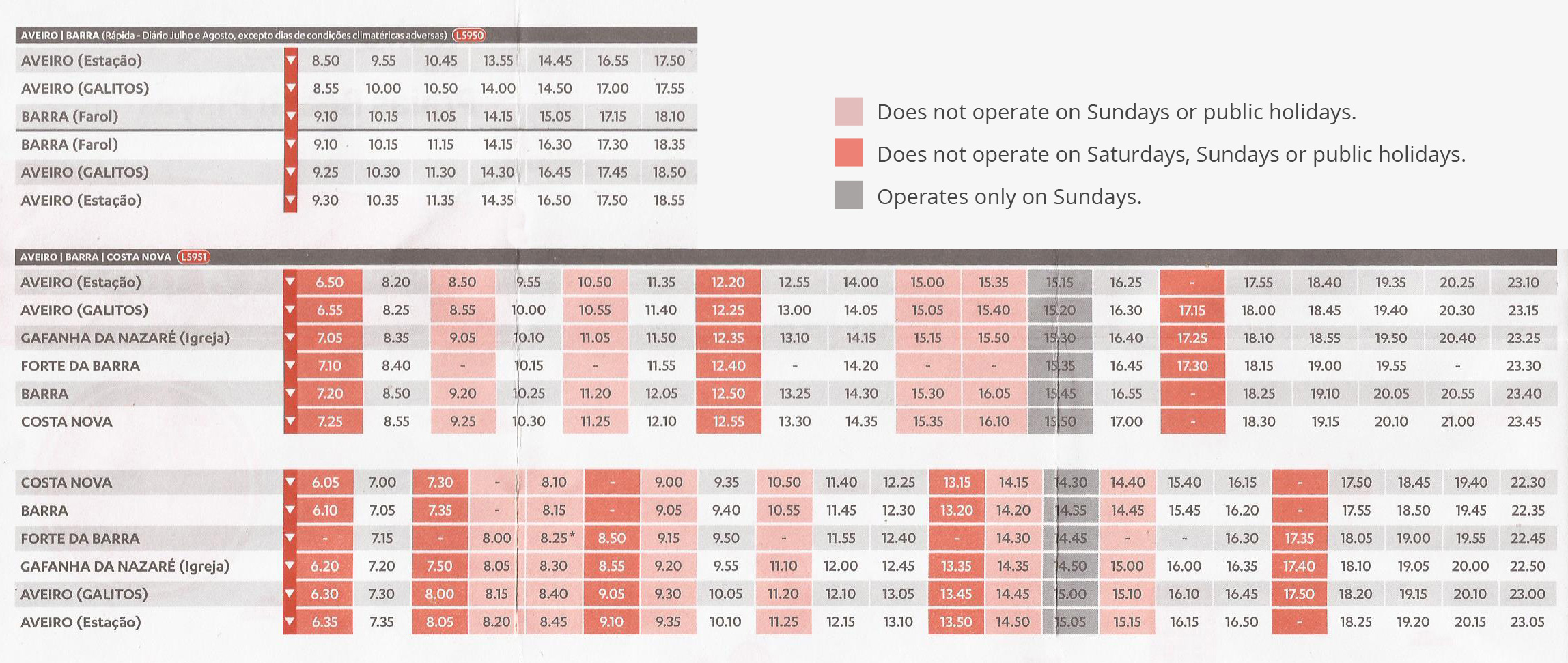 (Click on the image to enlarge)
(Click on the image to enlarge)
Keep in mind that your bus stops are called either “Barra” or “Costa Nova” and not “Forte da Barra” which is far from the beach.
Weather warning for the Beach
The most frustrating thing about living in Aveiro is the constant stiff wind that won’t quit. That’s why if you’re coming to spend a day at the beach, be sure to get yourself a windbreak. There’s an 80% chance that it’ll be windy and not getting pounded by sand will make your day much more pleasant.
Summer average temperature: 20ºC
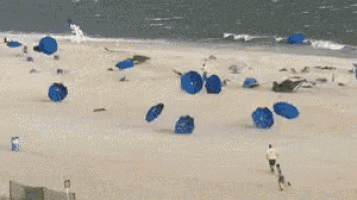
Don’t expect warm tropical waters either — it’s the Atlantic ocean.
Sea average temperature: 16ºC
Having said that, there’s still a 20% chance of you having the best beach day of your life, ‘cause when it’s good, oh… it’s gooood.
Guide Map
All spots mentioned in this post are marked on the map below by the yellow pins.
What to do in Barra Beach
The beach is divided by a long breakwater: to its right is the laid-back old beach (or meia-laranja). To the left and stretching along 1.5 km is the new beach, frequented by different types of crowds spread throughout its length. Right next to the breakwater is where families and children hang, but if you keep moving you’ll find a younger demographic in the area called “7º ano”.

The Lighthouse
It’s right here on Barra beach that you’ll find the highest lighthouse of the Iberian Peninsula, and the oldest in Portugal. The view from the top is spectacular and a definite must-see.
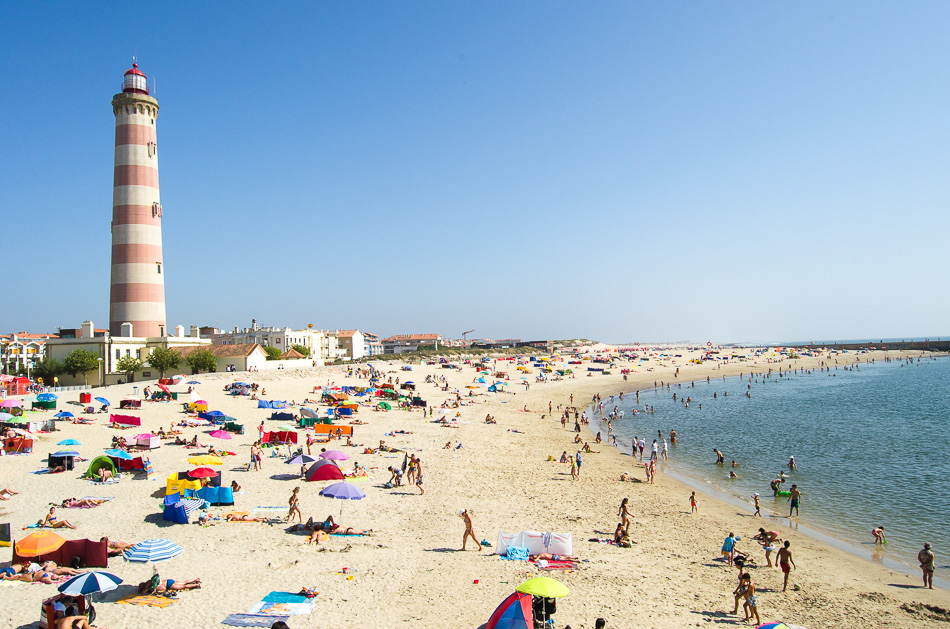

Visits to the lighthouse in Barra beach are on Wednesdays. During the summer months from 2 PM to 5 PM, and in the winter from 1:30 PM to 4:30 PM. Free of charge.
Where to Eat in Barra Beach
In Barra, as the commercial and residential areas are right next to the beach, you can easily find many options for restaurants, foods, and drinks. However, these are the ones we recommend:
Miami for great burgers and fries.
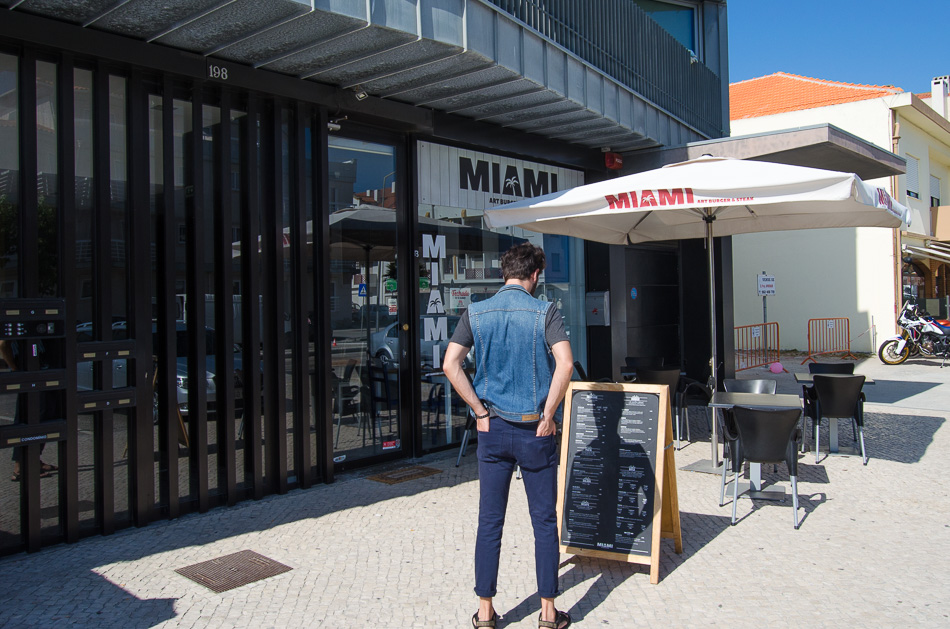
For good handmade pizza try Pizzaria Brasão on the main street in front of the lighthouse. Also on that same main street is the hip sushi house Barba Azul.
If you don’t feel like spending time in a restaurant, grab a quick bite at the supermarket Auto Mercado Gonçalves at the beginning of the breakwater: they sell deep-fried goodies, bread, fruits, and drinks. Grab what you need and have a picnic at the beach!


For an Afternoon Snack at the Beach
Regueifas
Try the Portuguese sweet bread called “regueifa” or a “pão de deus” with sugar and shredded coconut on top. Regueifas are a staple from Barra and have been sold here since we can remember. In fact, a good summer day is not complete without eating one of these.

Get yours at the Iracema kiosk, a small wooden stall right at the entrance of the breakwater.

Bolacha Americana
Bolachas Americanas, are big wafers sold by a loud gentleman carrying a white can through the beach. He’s a well-known figure in Aveiro and has been selling Bolachas Americanas since he was 12. His name is Carlos, and you won’t be able to miss him if he walks by you.
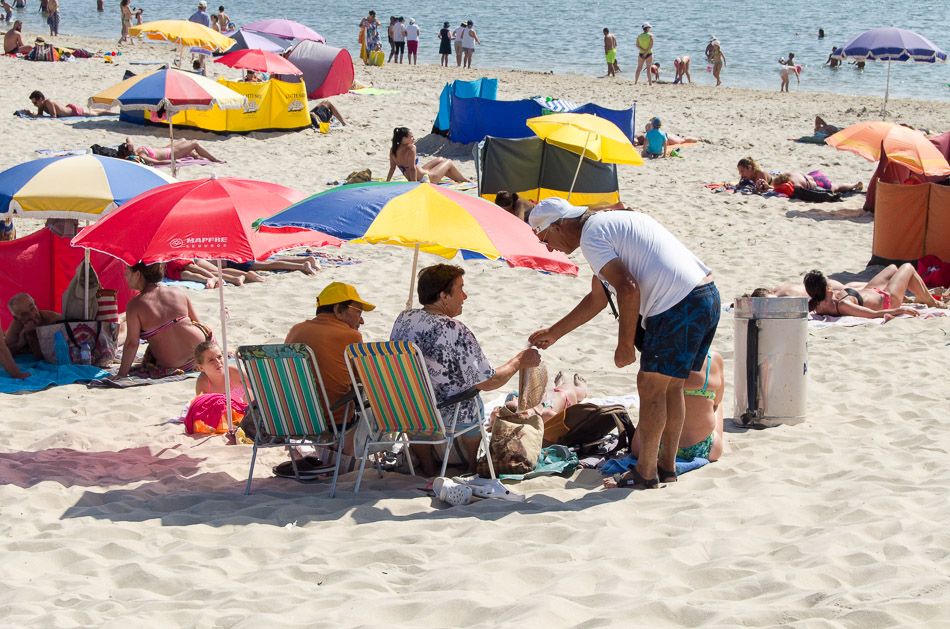
Tripa de Aveiro
If you haven’t tried a “tripa com chocolate” yet, just do it! Along the main road parallel to the beach, many kiosks sell them with a myriad of fillings to choose from.
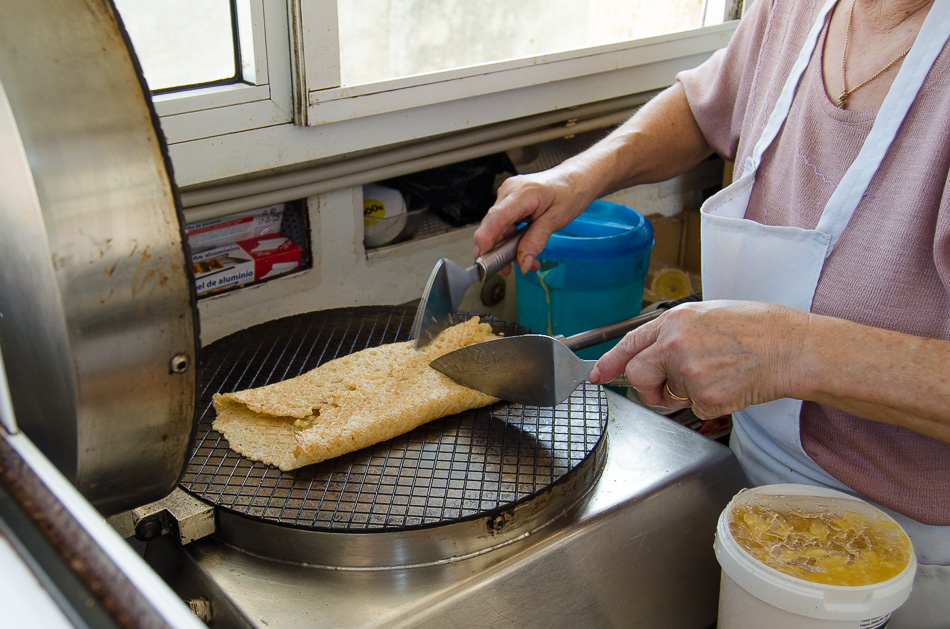
For more info on other Aveiro delicacies, dishes, or where to eat in Aveiro, read Aveiro Travel Guide: best food, bars, and accommodation.
Beach bars and Cafes
Along the boardwalks of Barra, you can find several beach bars providing fresh drinks, good music, and bean bags for lounging on the sand.
In Barra, the ones we like best are 7º ano de Praia and Offshore, right next to each other.
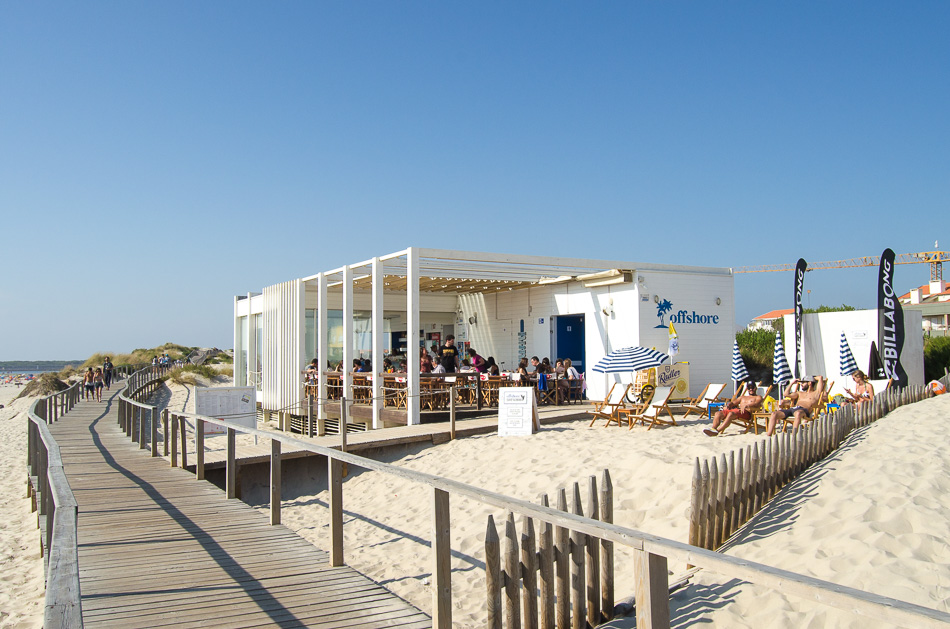
What to do in Costa Nova
By now, you probably saw one of these colorful striped houses on the internet — they’re in Costa Nova, only a 15-minute walk from Barra beach. Around here, key attractions are organized on a main street parallel to the sea, along with locally owned shops and seafood restaurants.
The beach of Costa Nova
These smaller beaches are a great alternative to the crowded sands of Barra, and perfect for a sunset stroll.
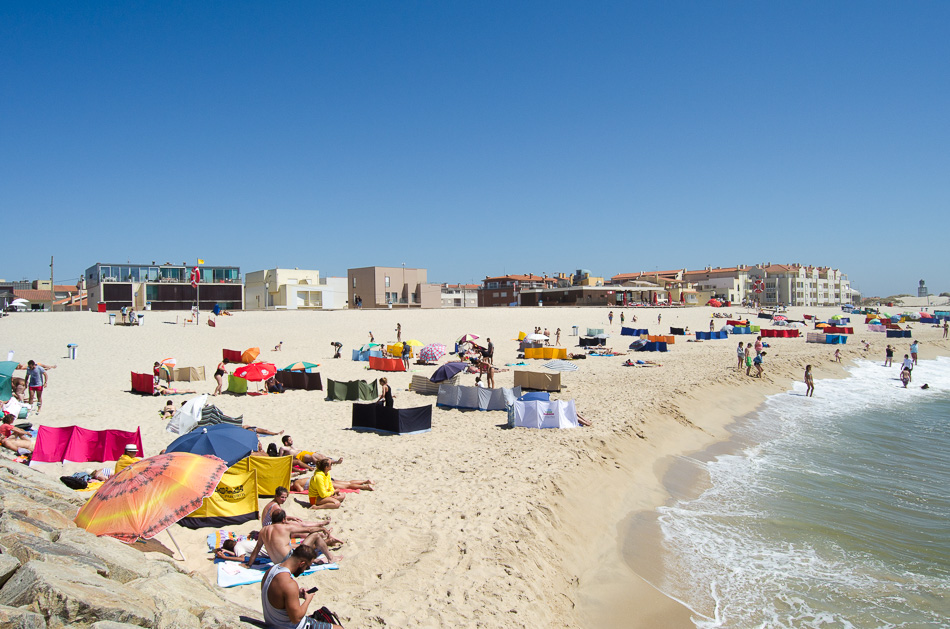
The Fish Market
On the main street in Costa Nova, is the tiny Municipal Market. Here, the hardworking fishmongers sell the catch of the day like their mother and grandmothers taught them: effusively. It’s a treat to walk through and a great place to get a typically Portuguese gift.
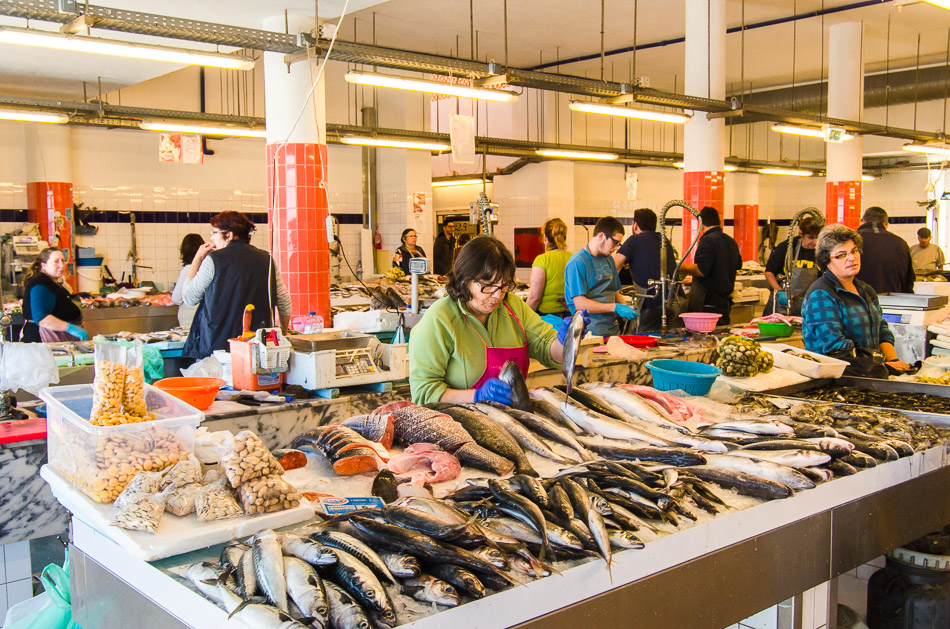
During summer the Fish Market opens from 8 AM to 8 PM.
On winter weekdays opens from 8 AM to 12 PM and it’s always closed on Mondays. On winter weekends opens from 8 AM to 6 PM.
A must-eat in Costa Nova (Pastel de Nata)
Don’t miss Café Atlântida and try a pastel de nata — they’re said to be the best in Aveiro. The staff is not super friendly, but the tarts make up for the tartness.

Beach Bar in Costa Nova
In Costa Nova, we always hang out at Bronze because it has the best terrace and sea view.
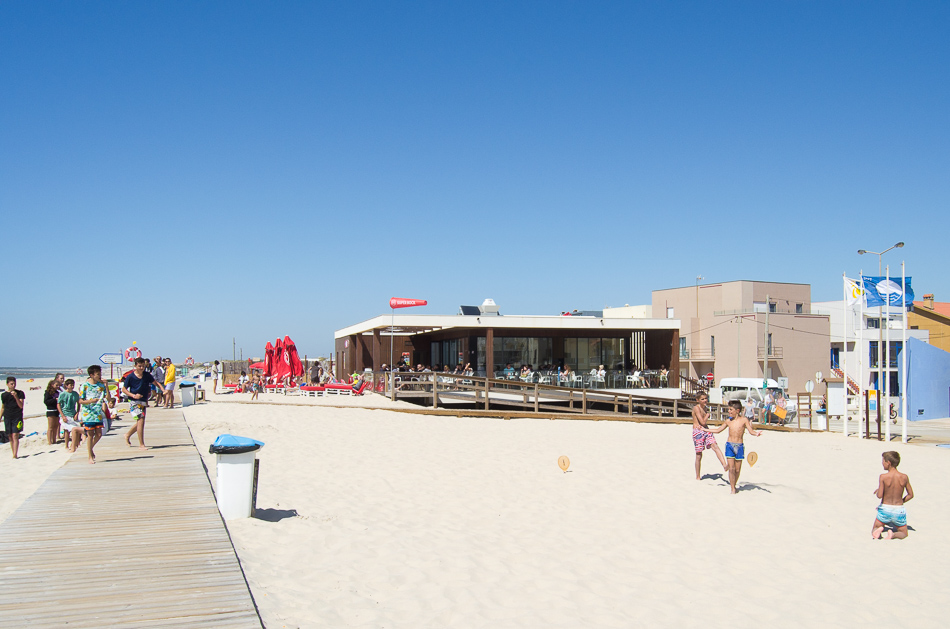
The boardwalks (Costa Nova and Barra)
In the midst of winter on those days when we’re missing summer the most, we often go for a stroll along the boardwalks whilst eating a warm tripa. Walking over the dunes and having the ocean as a backdrop makes them extra scrumptious. You should try it: it’s both soul cleansing and artery-clogging.
Some people use the boardwalks for jogging though.¯\_(ツ)_/¯ Choices.

Other activities
Through the scenic route from Barra beach all the way up to Costa Nova, is an excellent path for running, cycling, and skating. If you don’t have gear for any of that, rent a bicycle on Be Tour at the Memorial Park in Barra beach (between the lighthouse and the ria) for €5 per hour. Only from June to September.
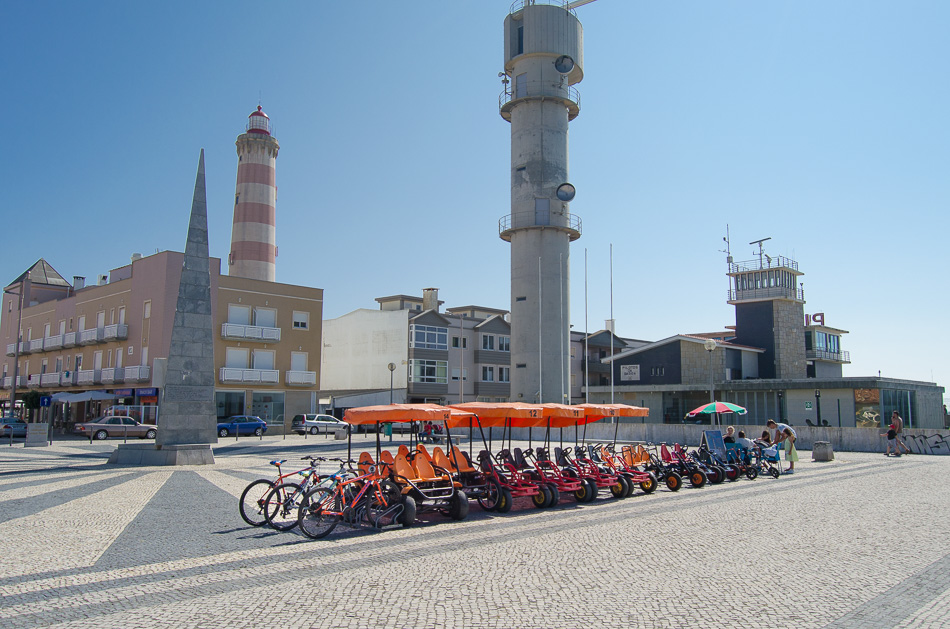
Many schools offer lessons in surfing, sailing, kitesurfing, windsurfing, stand up paddle on the ria, and the list goes on.
Surf’aqui – Surf school: with surf lessons, bodyboard, longboard, stand up paddle lessons.
Trilhos d’Água – Diving school: for diving lessons.
Ria Activa: Windsurf and Kitesurf lessons, and bicycle rentals.
Accommodation in Costa Nova and Barra
Accommodation at the beach tends to be pricier than in the city, so go enjoy your day by the ocean and return to Aveiro by the end of the day — there are plenty of buses to take you back. However, if you decide to spend the night closer to the beach you have:
Pensão José das Hortas (Costa Nova)
It’s a traditional Portuguese lodging with more than 100 years of history, located on the main street where all the colorful striped houses are.
As it is a family-owned business, it only opens during high season (from June to late September).
Camping (Barra)
If you came prepared, camping can be an affordable option: there’s a camping ground in the middle of the residential area in Barra.
If you have any questions, contact us. Nuno and I live in Aveiro and we can help you out!
Ultimate Aveiro Travel Guide: the best food, bars, and accommodation
If you started by reading our Ultimate Aveiro Travel Guide, you know that we’re not writing for a basic tourist experience in the city. If the first part was an in-depth guide about what to see and do in Aveiro, this second part is all about accommodation, typical foods, cafes, and nightlife.
All spots mentioned in this post are marked on the map below by the green pins.
Everything is also marked on Maps.me. You can download the app for your smartphone.
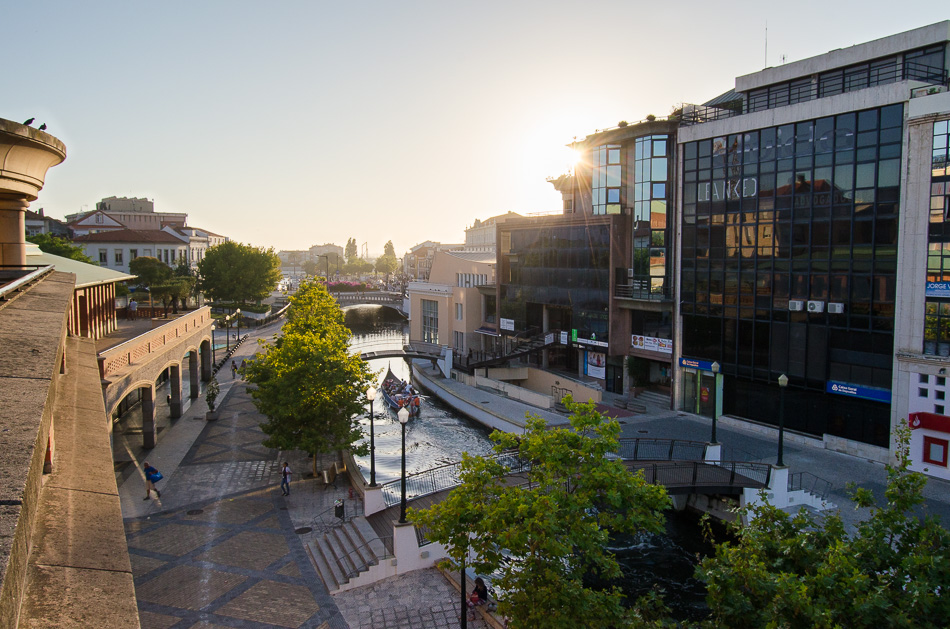
Accommodation in Aveiro
Due to the international exposure that Aveiro has gained in the last couple of years, hostels and guesthouses have multiplied tenfold. Most options are located in the city center, around the Rossio area and Lourenço Peixinho avenue.
Still, and even without knowing how much you’re willing to spend on a room, we want to tip you off to the fact that most hotels and family-run housings in Aveiro are ridiculously overpriced. Sleeping in Aveiro is not exactly cheap when compared to other big Portuguese cities like Lisbon or Porto.
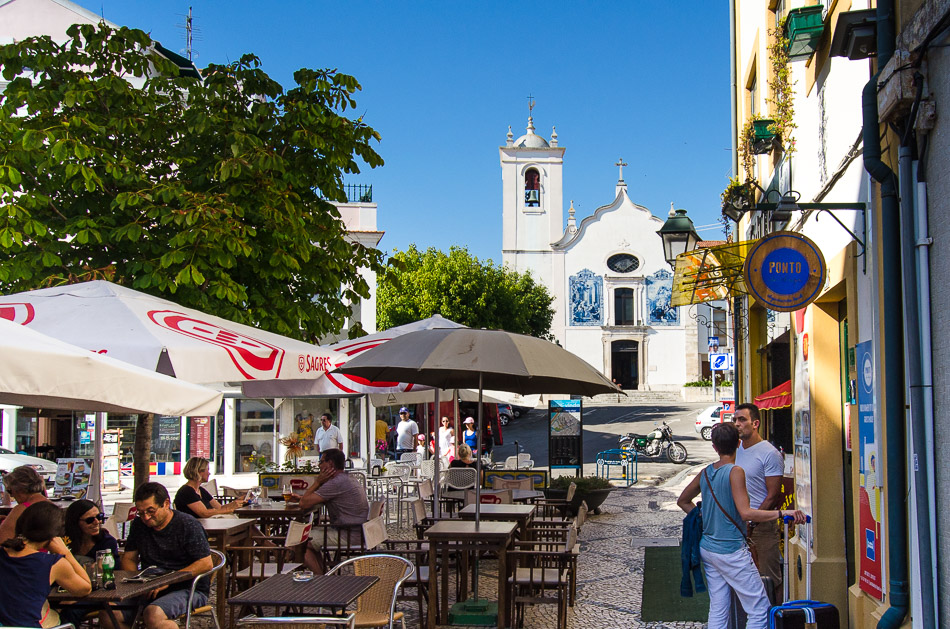
When Nuno and I travel we pick our accommodation based on price, proximity to the city center, and the reviews and comments on booking sites. Therefore, those were the criteria for our following selection:
Ponto de Abrigo: www.facebook.com/pontodeabrigo
Aveiro GuestHouse: www.facebook.com/aveiroguesthouse
What to Eat in Aveiro (typical food)
You can try many recognizable Portuguese flavors in restaurants across Aveiro. However, the secular connection its people have with the sea enriched the local cuisine with unique dishes.
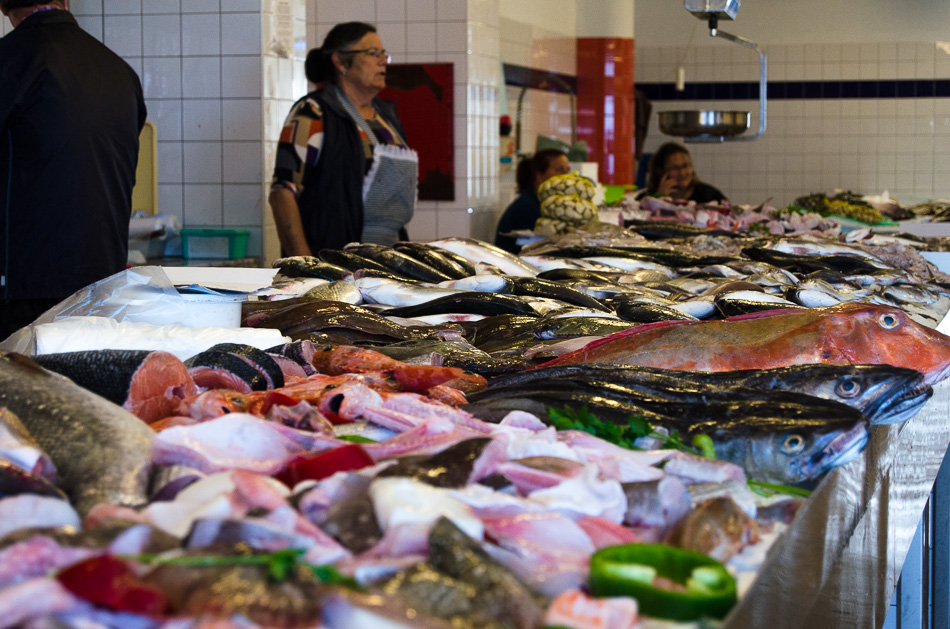
Fish
There’s quality fresh fish everywhere in the city, but Maré Cheia is popular for knowing how to cook it well. Try the grilled fish, the fish stews, and the typical eels stew.
Dishes start at €16.
Closed on Wednesdays.
Meat
For traditional Portuguese meat dishes, we recommend 2 Duques (Closed on Sundays), Snack bar Picota, and Evaristo (Closed on Saturdays). They serve delicious homey food in generous portions, with prices starting at 7€.
At Cervejaria o Augusto in Rossio, try the bifana—an old-school Portuguese snack of fine pork steak in a loaf of bread.
On the outskirts of Aveiro, on Bairrada, the roasted suckling pig is one of the most appreciated dishes. It can be a pricey meal (that we suggest you eat only when you visit Bairrada) but to have an idea of what it tastes like, eat a sandes de leitão (piglet sandwich) for €4,50 at Tasquinha do Leitão, in Praça do Peixe.
Burger Joints
If you’re in the mood for a good burger, go to Revolta Hamburgueria, or to Porta 35 (a convenient option due to its location right in the Praça do Peixe).
Cafe Ramona serves the most famous burgers in town, but getting a table around here on Fridays and Saturdays can be tricky. Closes on Sundays.
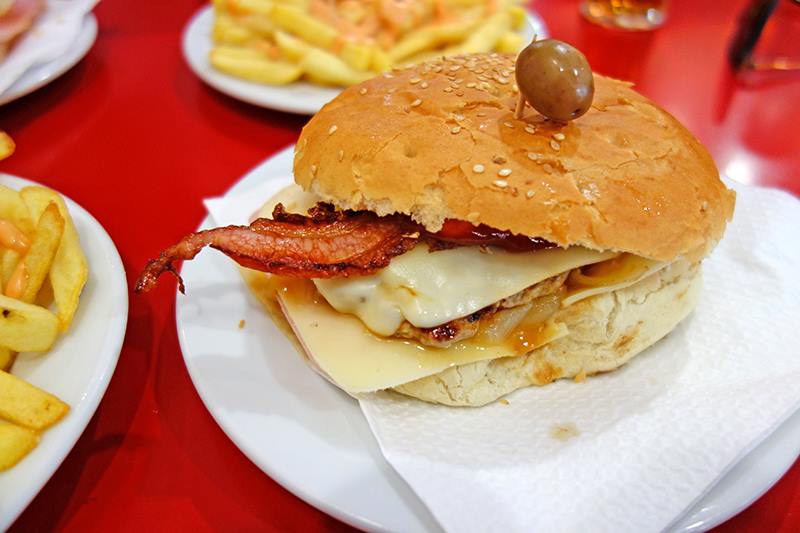 Photo: Café Ramona
Photo: Café Ramona
Vegetarian and Vegan Food
For our vegan friends, Vegifruit serves veggie options of soups, baguettes, and salads with fruit juices at great price deals. Closed on Sundays.
Other options are Musgo, Saladas+, and Ki a vegan and macrobiotic restaurant with desserts to die for. Closed on weekends.
Bakeries
Aveiro has to be the Portuguese city with more pastry and bakery shops per square meter. There’s at least one in every corner.
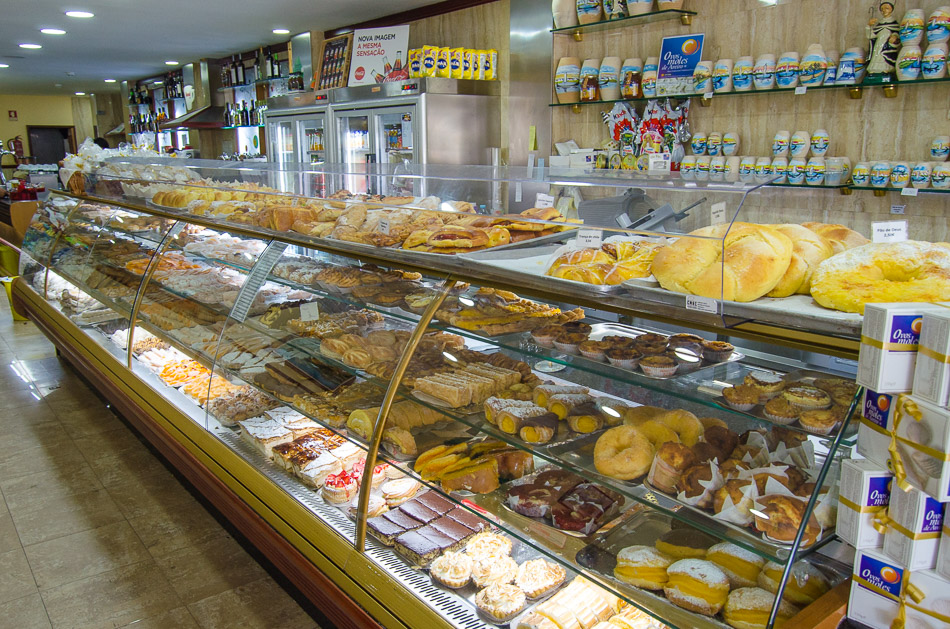
Try Ria Pão in the Rossio area, or Fanepão 88 closer to the Santa Joana Museum. You’ll find the counters brimming with cakes, pastries, cookies, and bread. To avoid the flood of people from 4 PM to 6 PM, make it an early afternoon snack.
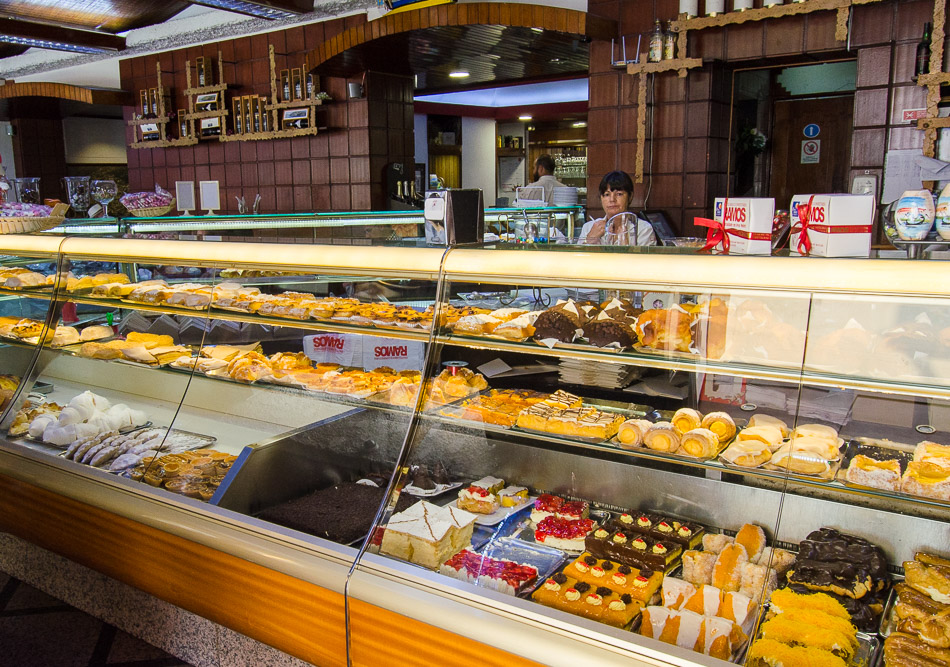
On Lourenço Peixinho avenue, Pastelaria Ramos is known for the best cartuchos in town. We can describe them as gooey-chocolaty-cylinder-shaped-cakes filled with whipped cream.

Ovos Moles of Aveiro
Every bakery and pastry shop around Aveiro sells the famous Ovos Moles and all its derivatives such as fios de ovos, castanhas de ovos, broas de ovos… we could keep going.
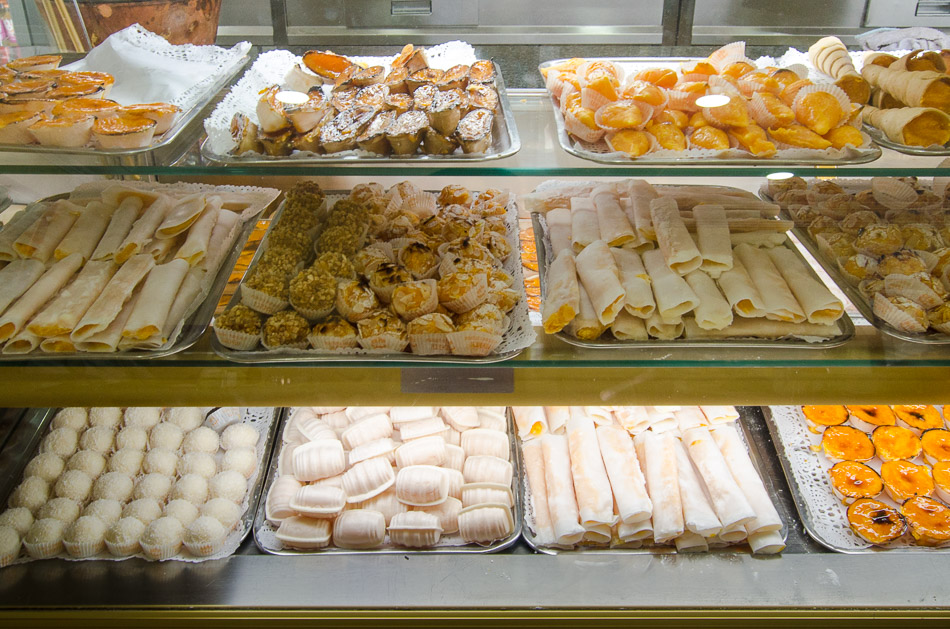
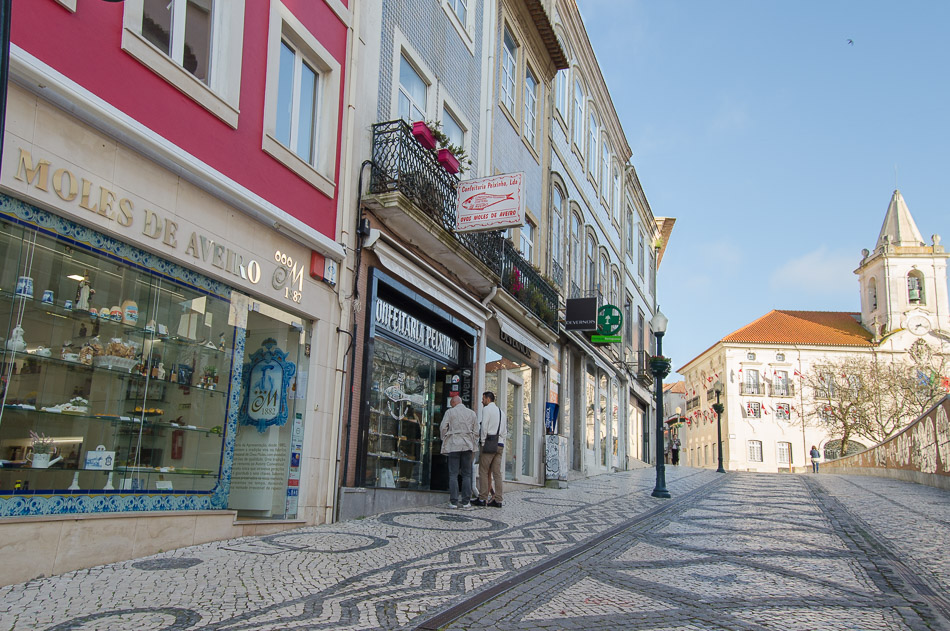
Nonetheless, locals say that some ovos moles are better than others, and the best ones are sold at Confeitaria Peixinho and Maria da Apresentação e Herdeiros, two neighboring stores right in the city center.
Tripa de Chocolate
Compared to the favored ovos moles, tripas are the underdogs of Aveiro sweets. Maybe it’s the unfortunate name “tripa” (that translates into “gut/ intestines”) that makes people apprehensive, but the truth is that these semi-baked-waffle-doughs from heaven, are the most comforting and versatile baked-sweets around town. You can eat them on their own with a dash of cinnamon on top, or take it to the next level with a filling of your choices such as chocolate, ovos moles, jam, ham and cheese, and the list goes on.
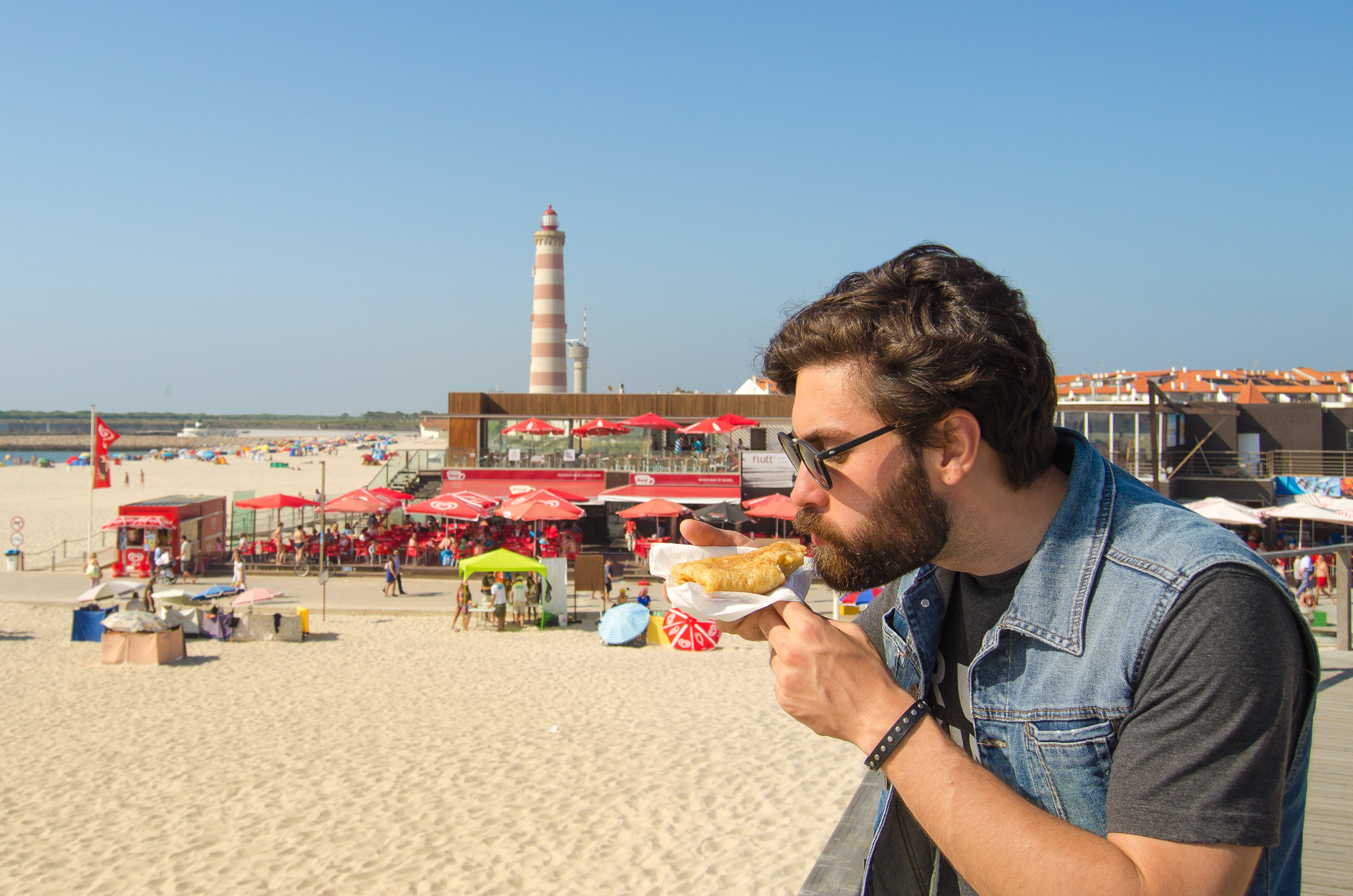
Our favorite filling is apple jam and cinnamon because it tastes like warm apple pie. You can find them being sold until late at night on kiosks in Praça do Peixe and around the beaches near Aveiro. Enjoy!
Ice cream
To nibble on some ice cream go over to Gelataria Milano or to Gelados de Portugal. You’ll find flavors like ovos moles, port wine, and Portuguese custard tart to name a few.
Nightlife in Aveiro
Although Aveiro is not exactly “the city that never sleeps”, locals do know how to have a good time. At night, Praça de Peixe becomes the favorite spot for everyone to hang out and have a drink.
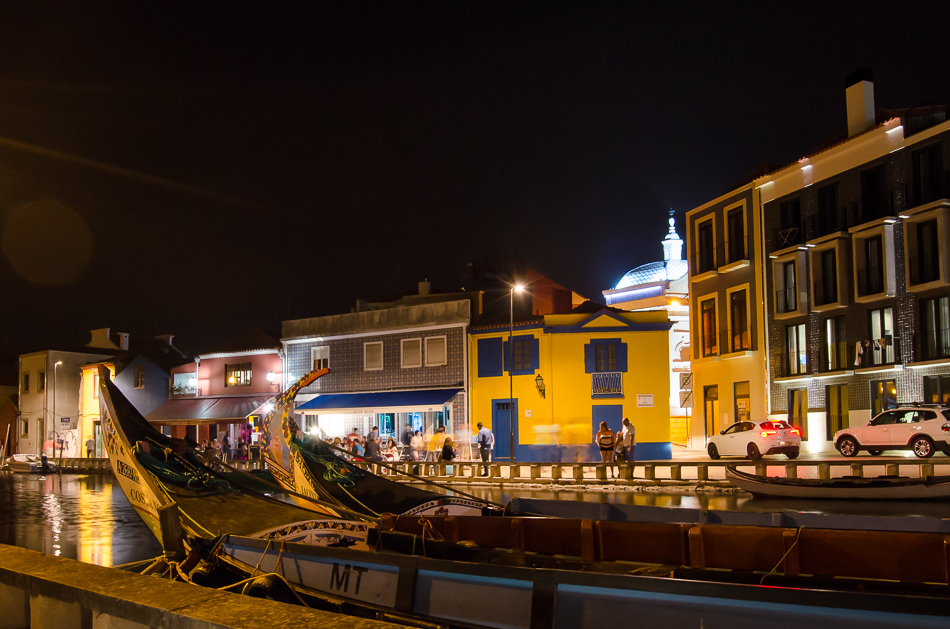
Most bars are closed during the day, but starting at 10:00 PM to around 3:00 AM music gets louder and the entire area gets occupied by the terraces of bars and cafes.
In case you’re wondering, Aveiro is a safe city even at night.
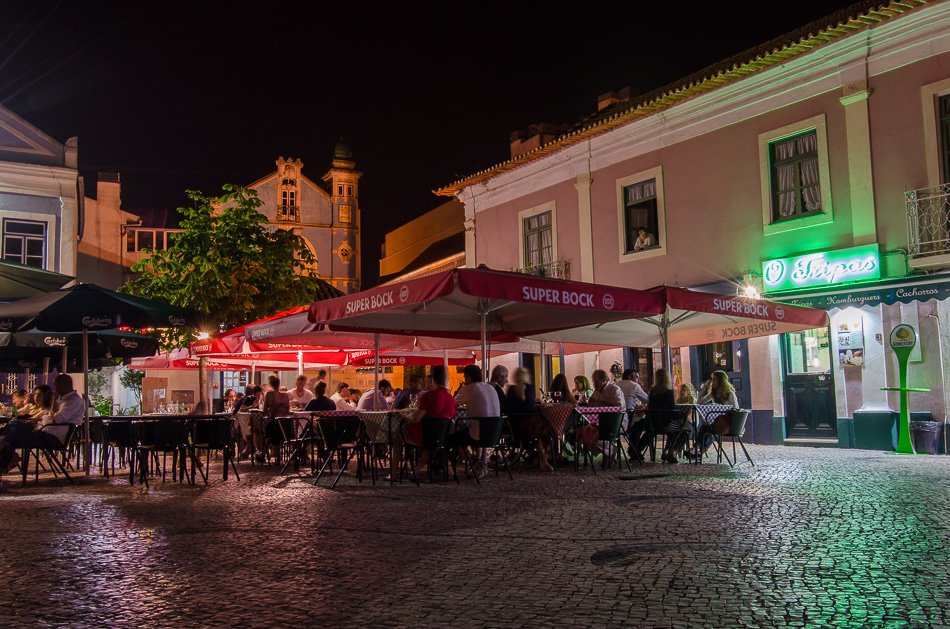
Bars
Despite not abundant (and most quite small) bars cater music to suit almost every taste. Here are some of the best options:
Toc’aqui: Portuguese and international music from the 70’s, 80’s and 90’s.
Kitten’s Irish Bar: One of Aveiro Irish pubs. It’s small and cozy with a wide selection of craft beers.
Guesthouse: Stands out for its good location and great terrace, perfect for hanging out with friends on sunny afternoons and warm summer nights.
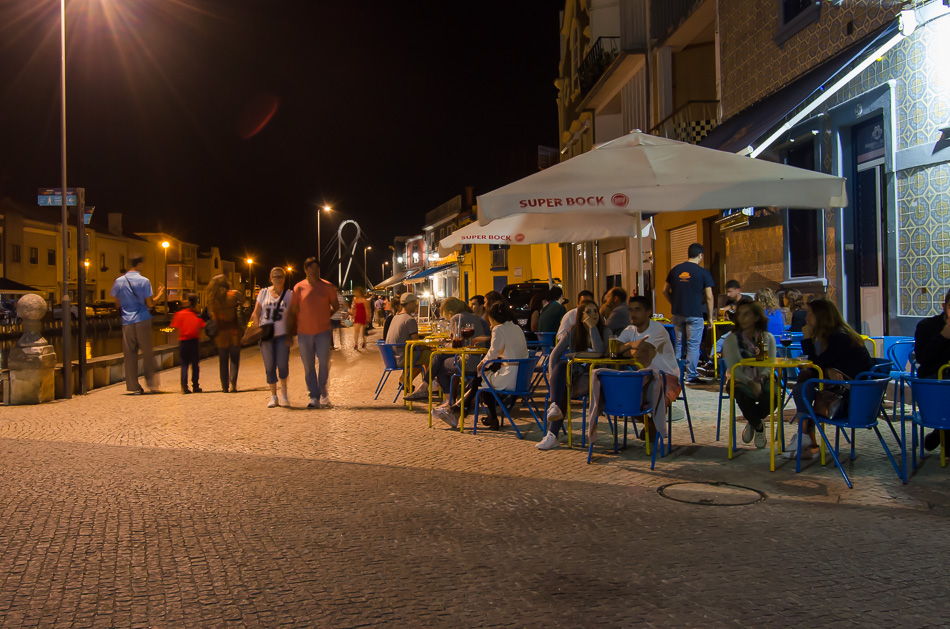
Mercado Negro: In an old building with the façade facing the central canal of the ria is Mercado Negro. The bar has different areas distributed throughout an old apartment and is the only place during the winter where you can have a glass of red wine by the fire.
Mercado Negro also houses several exhibitions and concerts throughout the year.
Má Ideia: Chill place with alternative music and friendly staff.
Luxor Bar: An Egyptian themed bar with a sitting area and a dancing area. It’s located outside Praça do Peixe and has a cover charge.
Clubs
If going to bed at 3 AM is for babies, here’s where you can go next:
Sal Club: At walking distance from Praça do Peixe it’s the new acquisition to Aveiro night scene, that has gained a lot of popularity over the past year.
Estação da Luz: Considered one of the best nightclubs in Portugal. The cover charge is €10 and ladies’ nights are on Fridays.
It’s about a 15-minute taxi ride from Aveiro. Taxi fees should be around €10.
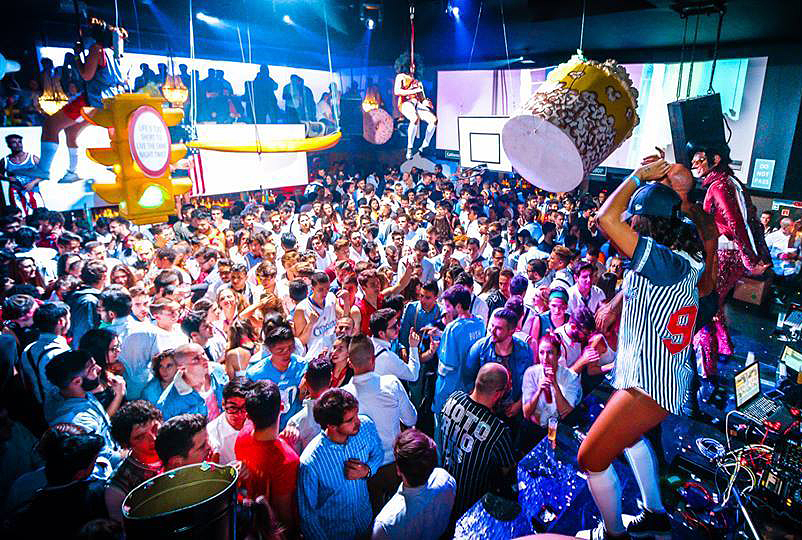 Photo: Estação da Luz
Photo: Estação da Luz
Cultural Options
Teatro Aveirense has a cool theater agenda that you can check on their website: www.teatroaveirense.pt
In addition, they do weekly screenings of indie and classic films.
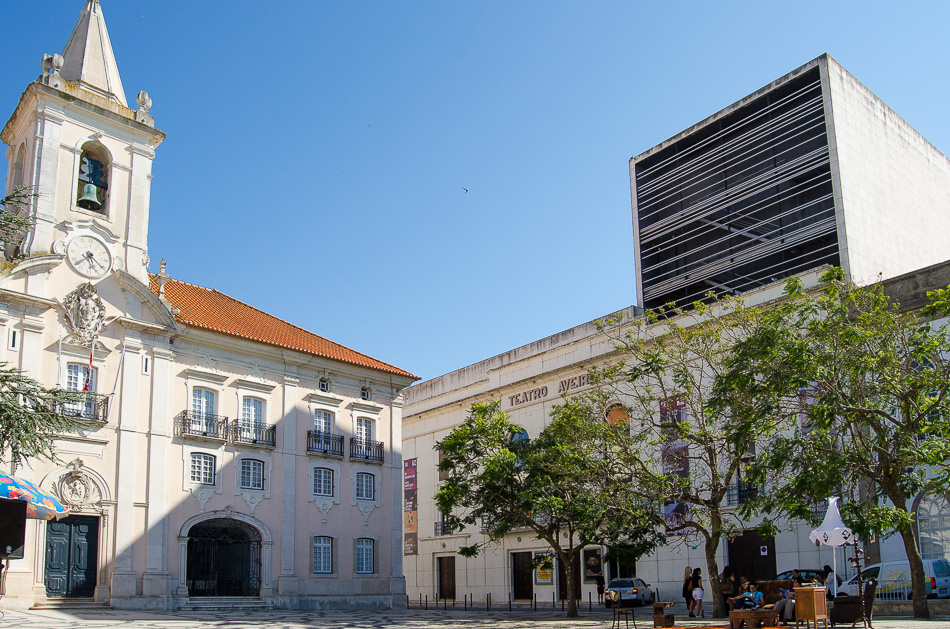
For good theater (albeit a more humble lineup) we recommend the Estaleiro Teatral, at the Infante D. Pedro Park.
For good travel photography and film, visit Trilhos da Terra.
If you have any questions, feel free to leave us a comment or contact us.
Podes escrever-nos em português se preferires.
Angkor Temples by Bicycle in 2 Days
If you want to explore the Angkor Temples, the city of Siem Reap will be your starting point. Here’s where you’ll find different transport options to visit the Angkor Archaeological Park at different price ranges:
• You can do it by yourself on a bicycle (US$3 a day)
• On a motorbike,
• In a group tour,
• Or by tuk-tuk (US$25 for a whole day, granting you a ride to all the main temples and back to Siem Reap). But just so you know, we saw a girl making a big scene after realizing her tuk-tuk abandoned her in one of the temples.
If you want to know more about the city go over to Siem Reap for First-Timers (What to Expect).
Choosing the Bicycle
Renting 2 bikes for 2 days cost us US$6.
Best decision EVER. We got to feel the warm breeze in our faces, the smell of the forest, and the freedom of stopping where we wanted for as long as we felt like. *Ahhh…*
All the Angkor temples are inside a beautiful and very well maintained park, with huge trees and vast vegetation where insects sing from. Locals come here to relax, swim and have picnics on the weekends.
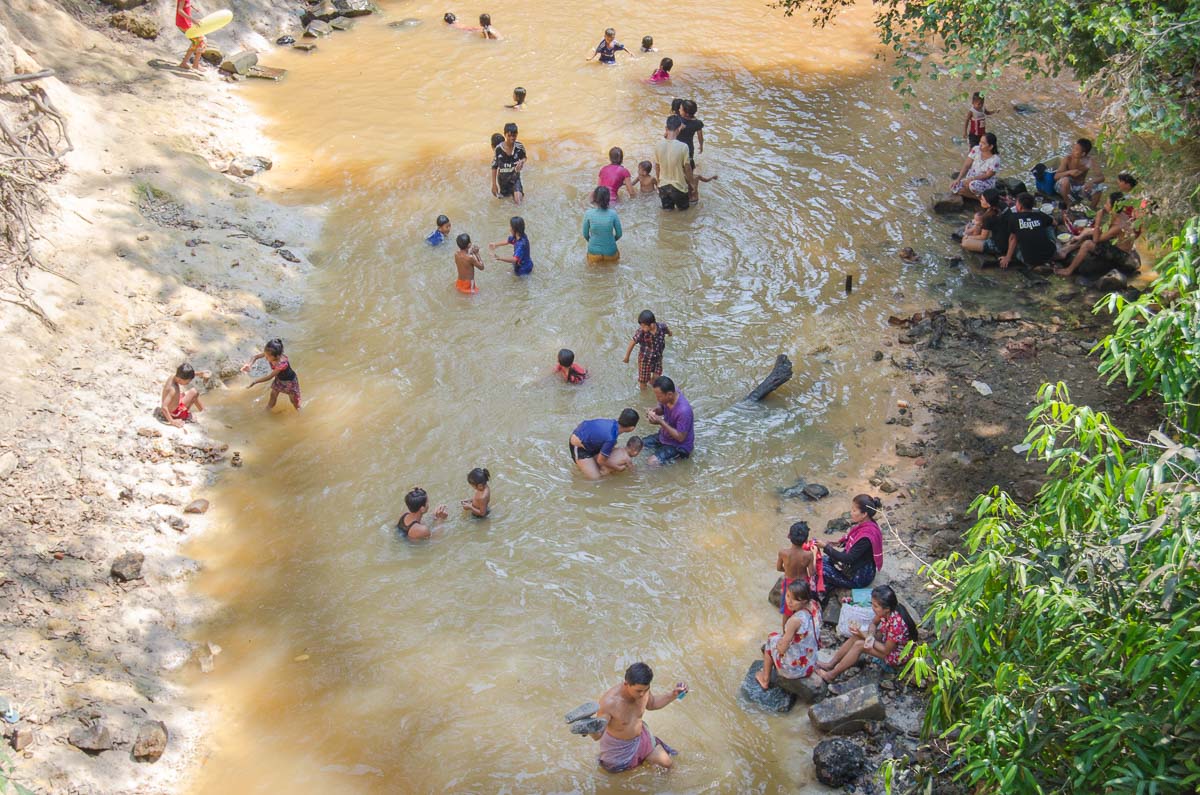
After 35 minutes through a long straight road, we arrived at the Angkor Archaeological Park and purchased our 3-day passes.
Angkor Admission Passes (2020)
7-day pass: US$72
3-day pass: US$62
1-day pass: US$37
Children under 12 years old are not required to purchase an entrance ticket but a passport needs to be shown as proof of age.
At the counter, you’ll have a photo taken and be given a pass/visiting card that you must carry at all times. Every day, as you enter the park a guard will check it. (That same guard also tried to sell us a tuk-tuk ride, even though we were on bicycles: “No problem my friends, put the bicycles in the tuk-tuk as well”). 😑
After cycling for 15 more minutes, we arrived at Prasat Kravan, a small temple made of three red-ish brick towers and surrounded by a dried moat. The temple is in pretty bad shape but is still possible to see the bas-reliefs dedicated to Vishnu.
Reaching Banteay Kdei, the second temple, took another 15 minutes. The temple is surrounded by a wall, like most of them are. We got in through a narrow and detailed doorway and walked along a stone road before reaching the main building. Parts of the building have collapsed, but most of it is visitable. Nowadays the fallen stones are organized in piles (for inventory) and several walls are now supported by iron and wooden beams.
The work behind all of this is mind-blowing: the transportation of raw material, the skilled men that cut the stone to fit impeccably together, and the intricate sculpture work throughout the building…wow.

The Angkor Temples are considered religious sites as well: you’ll find many Buddha statues decorated with gold and orange cloths, with incense and offerings laying at their feet. It’s great to see that the temples are still alive and serving a purpose besides being a visiting site for tourists.
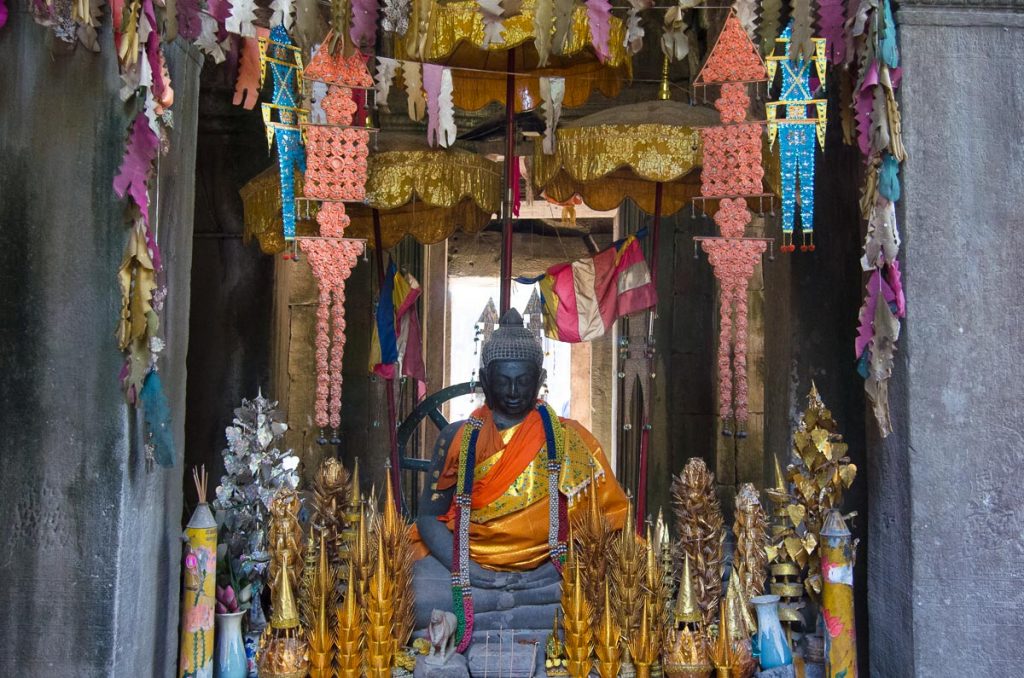
In front of Banteay Kdei is an enormous lake called Sra Srang. The lake was used by the crowned heads back in the day, for bathing and playscape — basically a bathtub to fit their egos.
Eating on the Archaeological Park
We’ve come to realize that when tourists are having lunch is when you’ll have a better experience in famous tourist sites. So as we usually do when visiting this type of monument, we only stopped for lunch around 4 pm.
At the temple complex, food and drinks are way more expensive than in Siem Reap (four times more expensive) so be prepared and stock up!
Ta Prohm
After lunch, we headed to Ta Prohm, one of the most recognized temples due to the Tomb Raider movies. Here, nature took back the place. Giant trees with a magical golden bark grew on top and around the walls finding a beautiful balance between weight and support. No one knows who’s holding whom. Pure magic.



By 5:30 PM we headed back to the city. The park closes at 5:30 PM.
Most temples in the park can be visited from 7:30 AM – 5:30 PM (except for Phnom Bakheng and Pre Rup that close at 7:00 PM).
The Second Day Visiting the Temples of Angkor
The second day as we biked to the park, a bunch of monkeys welcomed us by the road, it was our first time seeing monkeys on the loose like that.
We knew it was going to be a great day, we’ve just been greeted by monkeys and we were about to visit the BIGGEST TEMPLE IN THE WORLD: Angkor Wat.
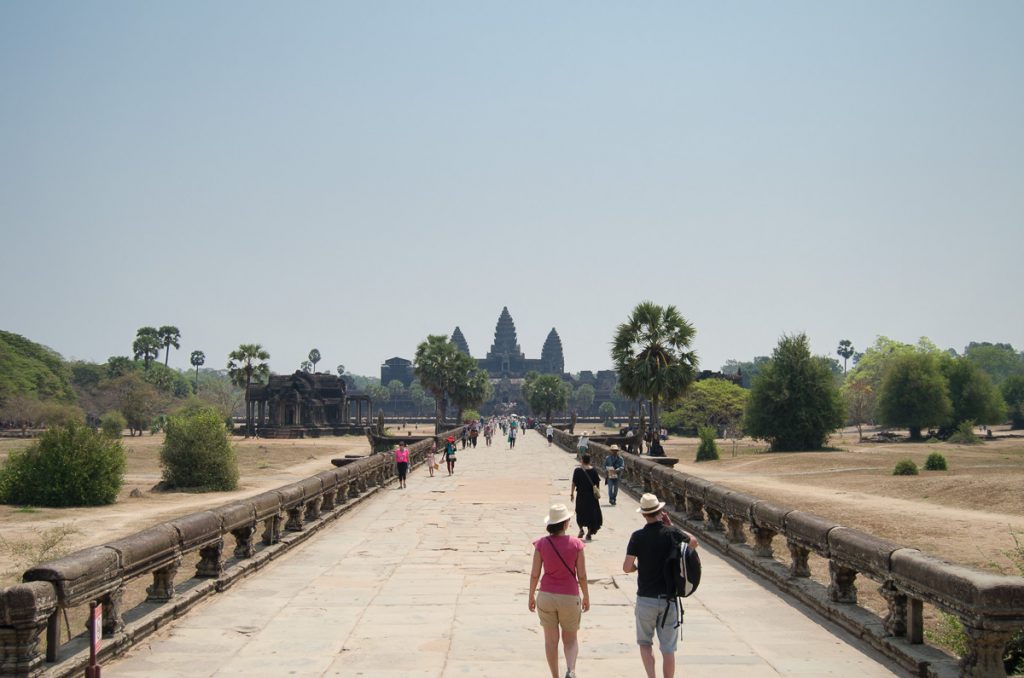
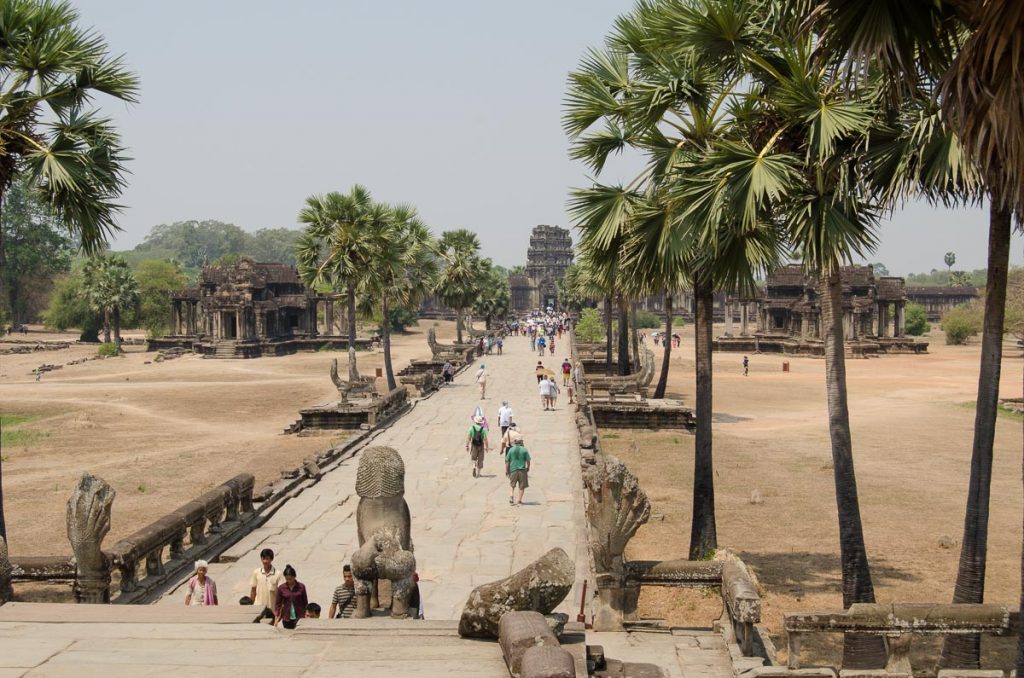
Surrounding Angkor Wat is a moat the size of a river and the only way to reach the temple is through a stone passage. At the start of this passage was a frenzy of people, locals, tourists, tuk-tuks, buses, and food carts. Funny how we thought we would be first to arrive…

As soon as our eyes got through the wall of people and faced Angkor Wat in all its glory, bathed by the morning light, we got chills. Wow! Just as seen on TV.
But after visiting the interior of the temple, we can say that Angkor Wat is kind of overrated. Yes, it is the largest and the tallest, and once you climb its central section the view of the park is epic. But that’s pretty much it.

There are smaller temples with better sculptural detail and a magical ‘je ne sais quoi’ that we didn’t feel in Angkor Wat. It felt a bit sterile and dry compared to other temples that time managed to marry with nature.
After having lunch at one of the restaurants by Angkor Wat, we biked under severe heat to the old town of Angkor Thom: it’s a giant walled area with several temples inside. The north and south entrances are flanked by imposing statues of men battling demons.

Minutes after passing the entrance, we arrived at other of the most recognized temples in Siem Reap: Bayon. It’s the one with many faces — 216 to be exact — built by a king that wanted his face sculpted everywhere to impose respect from anyone observing the temple. Other amazing features are the extensive, well-conserved bas-reliefs walls portraying stories of battles and Khmer’s everyday life.


To the left of Bayon is the Baphuon temple in which we didn’t get in. The fatigue and the heat dissuaded us from climbing the 5 or 6-meter platform where the temple seems to be built on.
To be honest, we were feeling ‘templed out’ and regretting choosing a bike as transportation. Just the thought of all those kilometers ahead of us made us want to cry.
We decided to sit in a shaded spot and rest our sore legs.
Accepting the pain and keep going
Back on the bikes, we got to an open space with trees and the ruins of twelve towers. On one side was Prasat Suor Prat, and on the other was the Terrace of the Elephants. The terrace is a 3-meter-high platform used way back when for royal ceremonies and military parades.
We left Angkor Thom and headed to the temple Preah Khan: it once served as a town, temple, and Buddhist university. The restoration work in Preah Khan was minimum, being purposefully left as it was found.

The bike ride back to our hotel was actually great. It gave us time to reflect and absorb what we’ve had witnessed and to say goodbye to Angkor as the sun went down. What an amazing experience: two full days witnessing epic history and actualized human badassery that will certainly remain in our hearts forever. Way longer than the pain in our legs.
Angkor travel expenses (Daily average for 1 person)
Meals: 3,77€
Water: 0,87€
Bicycles: 1,33€
3-day pass: US$62
If you have any questions or some extra info everybody can benefit from, please leave it in the comments!
How traveling can break daily-routine, promote good habits (and change your life)
We can all agree that routines make our lives boring.
That being said, not all routines are bad. I’m an advocate of hot water with lemon every morning, and my regular bowel movement is quite convenient. 😀
But when work started dictating most of our time, life became way too rigid and predictable. We don’t choose when to wake up anymore, where we’re going to spend our day or even the people we’ll be with most of our waking hours.

And yes, a routine may be the easiest way to organize life and prevent our brains from melting, but it’s also what makes us indifferent to the wife’s new haircut or to the fact that spring has arrived.
Why we Decided to Travel
It all started when we couldn’t differentiate the current year from the previous. The calendar kept moving but our lives felt stuck. Life was a tasteless soupy snoozefest and something needed to change.
Thus, considering that change is usually outside of our comfort zone, traveling felt like the perfect fit. Nothing is more effective at smacking us right out of the humdrum like travel is.
We’re all Creatures of Habits
But weirdly enough, adapting to our new reality on the other side was easy. Including having rice for breakfast, the weight of our backpack, and even the tropical heat.
And we managed to do so by creating routines, only this time, they seemed to be aligned with our new set of goals:
• To experience change
• To see the world
• To build courage
• To grow
More than that, they brought the realization that routines are not the problem, lackluster goals are!

The importance of a seasonal reality check
How was the everyday hum back home supposed to make sense when the final goals didn’t feed our soul?
Do you still want the things you’re supposed to be striving for?
Are the intentions you set 5 years ago still the same?

We should analyze our lives frequently and readjust their course, especially towards long-term goals. This is how travel can serve us, as a way to unplug and:
• Create time for reflection
• Expand our world
• To be inspired to live a better life
Not so much as an escape from problems or momentary dissatisfactions. After all, shitty situations in life usually require some confrontation and management from our side.
“Instead of wondering when your next vacation is, maybe you should set up a life you don’t need to escape from.” – Seth Godin
Aligning with a purpose in life provides motivation, vindicates routine, keeps you present, and makes a world of difference between living and merely existing. Meanwhile, if you can’t take a travel break: tweak your routines around, fuse into them good habits — the ones aligned with your goals — and let some of the bad ones go. Line up with what makes you happy.
Oh, and if you just came home from a trip, read this blog post about good habits and keeping the travel spirit alive.
Are you frustrated with your daily routine? Share your thoughts in the comments.
Thanks for stopping by!
